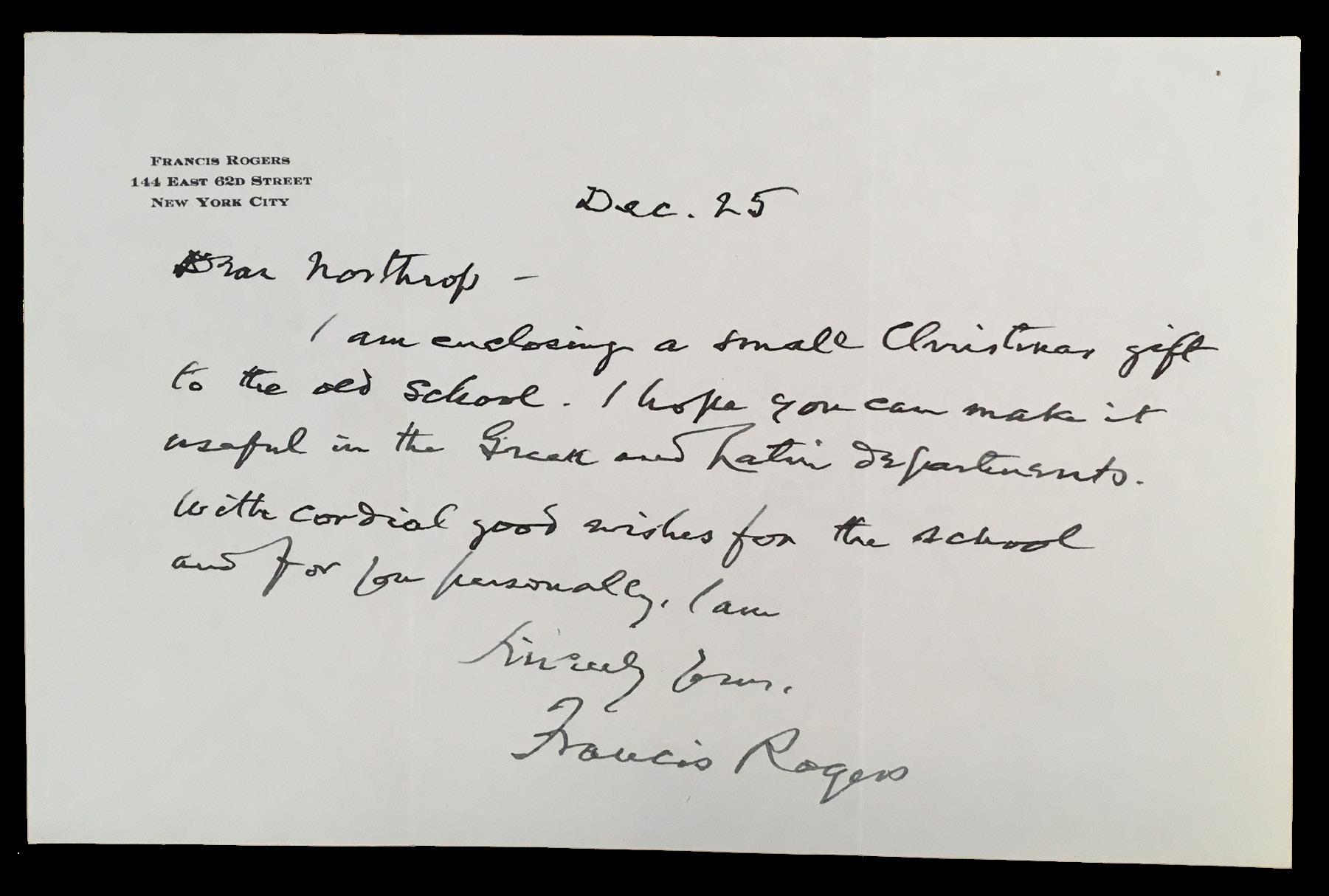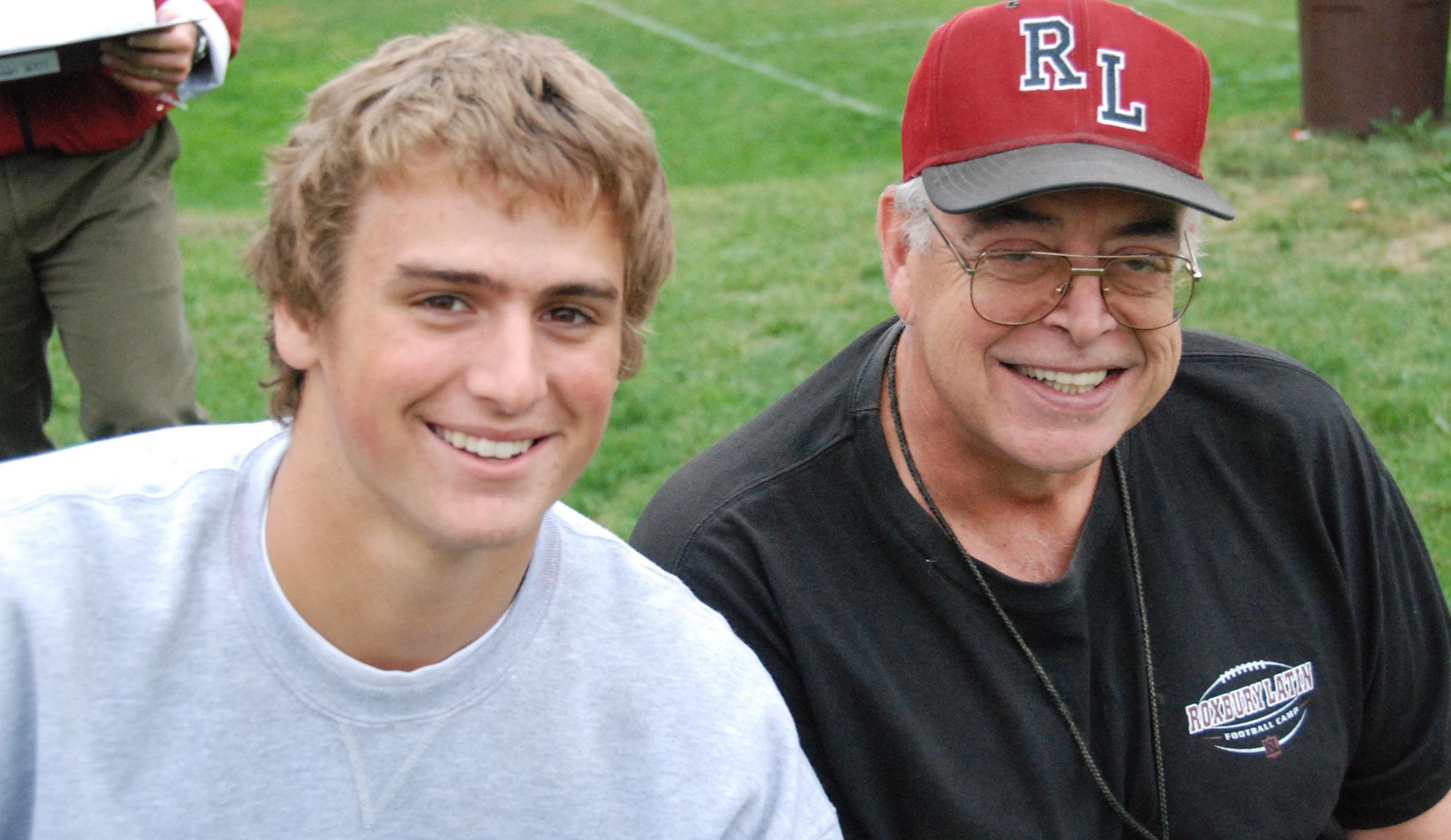
122 minute read
RL News & Hall Highlights
Ambassador Harriet Elam-Thomas is RL’s 17th Jarvis International Lecturer
Since 2004, Roxbury Latin has welcomed 16 distinguished public servants and thinkers on foreign affairs to campus as part of the F. Washington Jarvis International Fund Lecture. Past speakers for this Lecture, named for the man who for thirty years led Roxbury Latin as its tenth Headmaster, have included former Federal Reserve chair Paul Volcker; former Secretary of Defense Robert Gates; homeland security advisor to President Obama, Lisa Monaco; and former Director of the CIA John Brennan.
Advertisement
On October 22, Roxbury Latin hosted the 17th annual— but first ever virtual—Jarvis Fund Lecture by welcoming Ambassador Harriet Elam-Thomas as our honored guest. Ambassador Elam-Thomas directs the University of Central Florida’s Diplomacy Program. Earlier in her career, she served as United States ambassador to Senegal and retired with the rank of career minister after forty-two years as a diplomat. A member of the United States Foreign Service beginning in 1963, the Ambassador also served as Chief of Mission to Guinea-Bissau; Acting Director of the United States Information Agency; and many other key, diplomatic roles in Greece, Turkey, Cyprus, France, Mali, and the Ivory Coast. She is the recipient of numerous honors and awards, including the U.S. Government’s Superior Honor Award, and the Lois Roth Award for Excellence in Informational and Cultural Diplomacy. Ambassador Elam-Thomas began her lecture with an account of her own path toward diplomacy. Raised in Roxbury, the Ambassador attended Roxbury Memorial High School (after a brief stint at Boston Latin, which ended when the Ambassador decided that learning Latin was “a fate worse than death!”), followed by undergraduate studies at Simmons College. Throughout her early educational experience, Ambassador Elam-Thomas did everything she could to prove that she was academically equal to her white counterparts. When she studied abroad for the first time—through Simmons’s experiment in international living in Lyon, France—she finally began to see her complexion as an asset instead of a liability; she found she could exist without having to justify her place in society. “This step of my journey changed my life and sparked my desire to live and work abroad,” she said. After several assignments overseas, she received a fellowship to attend The Fletcher School of Law and Diplomacy at Tufts University.
Once she graduated from Fletcher, Ambassador Elam-Thomas accepted a role as a cultural attaché in Athens, Greece. She taught herself Greek for the role, and she spent four years improving America’s image abroad and challenging the misperceptions Greeks had of America. In the mid-’90s, she was promoted to the Senior Foreign Service. “If it were not for my knowledge of a language,” she said, “I would not have been able to make that step on behalf of my country.”
The Ambassador expressed her wish that our country would incorporate more voices into the conversation on foreign affairs. America, she noted, is at a great comparative advantage thanks to the diverse range of culture, language, and aptitudes of its citizens. And yet this resource remains under-tapped. “The current demographic trends in the United States do not simply allow for a more diverse approach to international affairs, but they, in fact, demand one,” she said. “Given the increasing diversity of American society, minorities are developing their own perspective in foreign policy, priorities, and patterns. We need to determine how best to fashion and implement foreign policies from these varied viewpoints. Otherwise, the United States will fall behind its global competitors.”
Through her diplomacy work in Greece, Turkey, Senegal, and Guinea-Bissau, Ambassador Elam-Thomas learned important lessons surrounding cultural competency and civility that she wished to impart to RL boys. These were first and foremost lessons on decency, kindness, and even deference. “We really cannot superimpose our values on others,” she said. “We must learn to respect that when you are in another country, you are a guest there.” This is true for all diplomats, she explained, and it is important for them to be respectful, remain decent in the face of indecency, and apply to themselves a rigid standard of morality. She quoted Aaron Sorkin, saying: “Don’t ever forget that you are a citizen of this world and there are things you can do to lift the human spirit—things that are easy, things that are free, things that you can do every day.”
Special thanks to Jack and Margarita Hennessy, who have generously provided Roxbury Latin the philanthropic wherewithal in order that others might come to know and appreciate cultures and individuals around the world. Mr. Hennessy—RL Class of ’54 and former member of the Board of Trustees—and Mrs. Hennessy envisioned this fund helping to bring to the school distinguished thinkers on world affairs, as well as enabling the boys and faculty to experience cultures different from their own by sending them out into the world. We are proud to report that about 85% of RL’s upperclassmen have participated in a school-sponsored international trip. Special thanks also to alumnus Tenzin Thargay, Class of 2014, for introducing Roxbury Latin to the Ambassador, through his studies in international affairs at Columbia. //
Since 2004, Jack and Margarita Hennessy’s Jarvis International Fund has allowed the school to welcome some of the world’s brightest minds in politics, economics, history, and education to Roxbury Latin.
2004
Paul Volcker
Fmr. Chair, Federal Reserve
2007
Linda Fasulo
U.N. Correspondent for NBC
2010
Sir Eric Anderson
Fmr. Headmaster, Eton College
2013
Robert Gates
Fmr. U.S. Secretary of Defense
2016
Lisa Monaco
U.S. Homeland Security Advisor to President Obama 2005
Richard Murphy ’47
U.S. Ambassador, Diplomat
2008
Peter Bell
Former President of CARE
2011
Andrew Bacevich
Professor of International Relations and History, Boston University
2014
Bill Richardson
Fmr. Governor of New Mexico
2017
Mark Storella ’77
Senior Foreign Service 2006
Richard Haass
U.S. Ambassador; President, Council on Foreign Relations
2009
Gen. Anthony Zinni
U.S. Marine Corps, Ret.
2012
R. Nicholas Burns
Professor, Practice of Diplomacy and International Politics, Harvard Kennedy School
2015
Dr. Stanley Fischer
Fmr. Vice Chairman, Federal Reserve
2018
John Brennan
Fmr. Director of the CIA
2019 2020
Photo: NBC News

U.S. Marine Veteran Mansoor Shams Inspires Unity and Compassion
On November 10, Roxbury Latin celebrated its annual Veterans Day Commemoration Hall—this year via Zoom, allowing alumni veterans from across the country to tune in. The Hall featured guest speaker Mansoor Shams. Mr. Shams is a U.S. Marine veteran, having served four years in the Marine Corps, where he attained the rank of corporal (non-commissioned officer) and received several honors. He is also the founder of MuslimMarine. org, where he uses his platform of both “Muslim” and “Marine” to counter hate, bigotry, and Islamophobia through education, conversation, and dialogue.
Dressed in traditional Pakistani garb, adorned with an American flag pin, Mr. Shams began by addressing some misconceptions related to his Muslim faith. He continued by answering questions related to his experience in the military, the relationships he formed, and his mission to help unify people in an increasingly divided world. He spoke about some of the conversations he had and individuals he encountered during his “Ask Me Anything” tour, during which he carried a simple sign across America (25 states to be exact), that read “I’m a Muslim and a U.S. Marine. Ask me anything,” to engage the public in conversation and dialogue.
Mr. Shams has been featured by PBS, NPR, BBC, and The New York Times, and has made national TV appearances as a commentator on CNN and MSNBC. He has delivered talks and presentations not only at schools and colleges, but also for the National Security Agency, the U.S. Marine Corps, and state government agencies across America.
He has led various national initiatives including the 29/29 Ramadan Initiative, in which he teamed up with Veterans For American Ideals, to have military veterans spend a night at the home of Muslim families across America during Ramadan, to encourage fellow Americans to get out of their comfort zones to get to know each other. Mr. Shams is a term member on the Council on Foreign Relations.
In his opening Hall remarks, Mr. Brennan listed those RL alumni currently in active duty—graduates ranging from the Class of 1976 to the Class of 2017. As is tradition, the Hall program included a list of the 37 Roxbury Latin alumni who were killed in service to their country, dating back to the Revolutionary War.
“Through these RL men we can draw a direct and impressive line to those WWII vets honored by the school several years ago, to four RL alumni casualties in the Civil War, and to RL’s most famous veteran, General Joseph Warren, Class of 1755, who lost his life at Bunker Hill. The inclination to serve our country is a natural extension of John Eliot’s admonition to serve as he said, ‘in Church and Commonwealth,’” said Headmaster Brennan. //
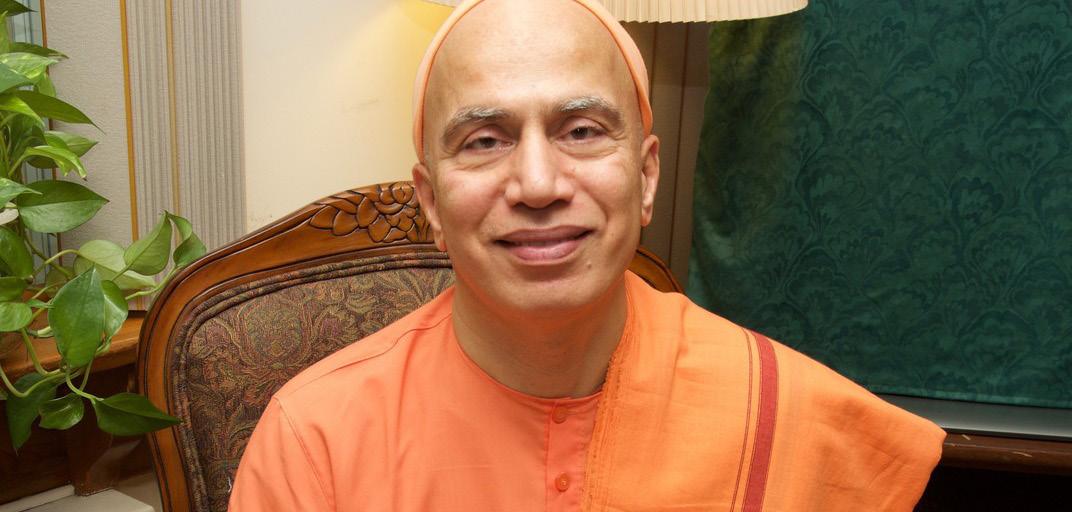
Swami Tyagananda on Light—Both External, and Internal
“On Saturday, members of the Hindu faith—including many in our own Roxbury Latin community—began the celebration of Diwali, one of the most popular festivals of Hinduism, which symbolizes the spiritual victory of light over darkness, good over evil, and knowledge over ignorance—virtues to which we can all aspire,” began Headmaster Brennan in virtual Hall on November 17.
The morning’s Hall continued a time-honored RL tradition of recognizing, and celebrating, the particular faith lives of members of our community. Joining the RL students and faculty on November 17 was Swami Tyagananda, who spoke about the tradition and celebration of Diwali, as well as the virtues of spiritual strength and how we might all work toward it. The Swami is a monk of the Ramakrishna Order; he is head of the Vedanta Society in Boston, and he also serves as the Hindu Chaplain at MIT and Harvard. He became a monk in 1976, soon after graduating from the University of Bombay, India. He has presented papers at various academic meetings and offers lectures and classes at the Vedanta Society, MIT and Harvard, and other colleges in and around Boston.
Swami Tyagananda acknowledges routinely that some people in the West find his name unusual. As he explains: “Swami” is the epithet used for Hindu monks, and the word means master. It points to the ideal of being a master of oneself, or being in control of oneself. The second part of his name was given to him when he received his final monastic vows. “Tyagananda” is a combination of two words, tyâga and ânanda: tyâga means detachment or letting go; ânanda means joy. Taken together, the word means “the joy of detachment.” It points to the ideal of letting go of all the nonessentials in order to focus on and hold on to the essentials.
In Hall, the Swami not only enlightened his audience about the history of the Diwali celebration, and the story of King Rama’s defeat over Ravana; he also reminded us that while the body and mind have limitations—that they can feel weak or strong—the spirit is limitless, and perfect. He spoke about the virtues of focusing on one’s spirit, and sharing that internal light with the world. He also reminded us that while our external markers vary greatly—our genders, skin colors, languages, religions—our spirits are universal, and it is often in learning about this great diversity of the world around us that we can help to understand our own identities and traditions anew. //

Professor Dehlia Umunna on Making Your Life Count for Good
Each year, Roxbury Latin begins the last school day before the Thanksgiving break with a tradition that is distinctly RL. Thanksgiving Exercises are an opportunity to, as Headmaster Brennan says, “turn our heads and hearts to the proposition of gratitude—for the country in which we live, for the freedoms and opportunities that are guaranteed by our being Americans, for our families and friends, for this community and others, for intelligence and discernment and deep feeling. For our gifts and aspirations, for good sense and hoped-for-dreams. Indeed we should live with an attitude of gratitude.”
This year, given the pandemic’s realities, Thanksgiving Exercises took place virtually, as students, faculty, and staff enjoyed prerecorded renditions of the traditional hymns We Gather Together, For the Splendor of Creation, and America the Beautiful. The Hall featured the resonant Litany of Thanksgiving—which includes a boy from each class—reminding us all of our “blessings manifold.” “The only thing wrong with Thanksgiving as a holiday,” Mr. Brennan asserted, “is that it may suggest that this is the only time to give thanks, or at least the most important. Each day, virtually each hour, offers an occasion for gratitude.” Delivering the Hall address was Ms. Dehlia Umunna P’21, a clinical professor of law at Harvard Law School, where she became the first Nigerian faculty member at age 42. In addition to teaching and conducting research focused on criminal law, criminal defense, mass incarceration, and issues of race, she is also the faculty deputy director of the law school’s Criminal Justice Institute. Through the Institute, Professor Umunna supervises third-year law students in their representation of adult and juvenile clients, in criminal and juvenile proceedings, in Massachusetts courts, including the Supreme Judicial Court.
Professor Umunna began her remarks by transporting her audience to the inside of a jail cell, where she found herself defending a nine-year-old Black girl named Anaya who had been charged with assault with a dangerous weapon, having thrown a book at the floor of her classroom, in the direction of her third-grade teacher, out of frustration. Prof. Umunna went on to describe what sparked her interest in studying law: immigrating to Los Angeles from London in the midst of the 1992 Watts Riots, and having witnessed her brother’s run-in with the law back in London. Prof. Umunna pursued a career as a public defender, “a lawyer who’s paid by the government to defend people in
court if they cannot afford to pay for a lawyer,” she describes. Before joining the faculty at Harvard, Prof. Umunna, for close to a decade, was a public defender in the District of Columbia, where she represented indigent clients in hundreds of cases from misdemeanor charges of theft, assault, and drug possession, to kidnapping, child sexual abuse, and homicide. Some of her cases received nationwide media attention.
“As a public defender, I truly entered spaces where I witnessed firsthand the realities of what it meant to be impecunious. I saw many families battling mental health concerns and learning disabilities while fending off aggressive police intrusion, harassment, and brutality. I observed firsthand the role of race and racism in the criminal legal system—understanding how unjust, unfair, and inequitable the system is.”
Prof. Umunna used her example—her commitment to making her life count for good—to implore RL students to do the same in their own ways, and to develop, always, the feeling and expression of gratitude for all the gifts and privileges we have been given, even in this particularly challenging year.
“This year has sent shockwaves through our psyche,” she said, “and as Thanksgiving approaches, we are exhausted and wondering, What do we have to be thankful for? We wonder if our lives have meaning, if our lives have purpose. There’s so much that we took for granted pre-pandemic, but as I say, every traumatic event, every setback, is an opportunity to reset for greatness. So how can you make your life count for good? First recommendation: develop gratitude as a virtue.” She went on to thank many individuals in the Roxbury Latin community who have enhanced her life and that of her son, Edozie, Class I.
“If you’re going to live a purpose-driven life, you must develop an attitude of gratitude for the privileges you have. When you develop gratitude as an attribute, you in turn develop empathy and compassion for others. You become less selfish, less judgmental. You recognize that but for your privileges, you could be that person sitting in a jail cell. That person standing in line at the food bank. That person without heat. Gratitude compels you to take stock of what you have and be truly thankful. Gratitude compels you to ask the question, ‘How can I serve others? What can I do to make a difference?’ Not just on Thanksgiving, but every day.” //
Rob “ProBlak” Gibbs On the Mission of Art, and Being a Good Person
On December 3, students and faculty were joined in virtual Hall by Rob “ProBlak” Gibbs, a celebrated visual artist who has transformed the cultural landscape of Boston through graffiti art since 1991. Growing up in Roxbury during hip-hop’s Golden Age, Mr. Gibbs saw the power of graffiti as a form of self-expression. The medium became a tool for him to chronicle and immortalize his community’s culture and history—a way to document, pay homage to, and beautify the City’s underserved neighborhoods. His remarkable artwork has brought him much notice and acclaim. Mr. Gibbs was featured last spring on the cover of Boston Globe Magazine for an issue titled “Why Art Matters.” In the spring, Mr. Gibbs also partnered with Boston’s Museum of Fine Arts as an artist-in-residence, in part creating a mural in his Breathe Life series at a vocational high school in Roxbury, not far from the Museum grounds.
In Hall, Mr. Gibbs began with a brief video of him and fellow street artist Marka27 completing a large-scale production beneath a bridge in Boston’s Ink Block, titled “Don’t Let Me Be Misunderstood.” The clip of ProBlak and Marka27 creating that mural offered students a sense of the scale, paint application, and intention behind the artistic piece.
Mr. Gibbs went on to answer questions from both students and adults, speaking about his start as an artist; his process; the challenges inherent in his medium; his inspirations and collaborations with fellow artists; and how his work has evolved over decades. The next day, Mr. Gibbs joined RL art classes, via Zoom, meeting with students from Class VI to Class I in Studio Art, Art & Technology, and Digital Design courses.
Beyond his artistic practice, Mr. Gibbs is also co-founder of Boston’s Artists For Humanity, a non-profit that hires and teaches young people creative skills—from painting to screen printing to 3-D model making. For the past 29 years, Mr. Gibbs has mentored and guided countless burgeoning, young artists through the organization, and continues today as its Paint Studio Director. In his mentor role, he explained, one of the key lessons he hopes to impart is “how to honor a commitment. No matter what [these young people] commit themselves toward, that’s a transferable skill that they can put toward anything. If you have the will to sit in front of a painting, or a piece of paper, you can put that drive toward finishing school work, studying, staying focused. I want [these kids] to be better than they were when they came in, as human beings.”
With a focus on arts education, Mr. Gibbs has conducted mentoring workshops for Girls, Inc., The Boston Foundation, Boston Housing Authority, and Youth Build, Washington, DC. He served as a guest lecturer at Northeastern for their “Foundations of Black Culture: Hip-Hop” course. He was the curator for BAMS Fest’s “Rep Your City” exhibition in 2019.
Mr. Gibbs is the recipient of a number of awards, including the 2006 Graffiti Artist of the Year award from the Mass Industry Committee, and the Goodnight Initiative’s Civic Artist Award. In 2020, he was honored with the Hero Among Us award by the Boston Celtics. His work has been featured by NBC, WBUR, the Boston Art Review, and Boston Magazine, among many other outlets. //


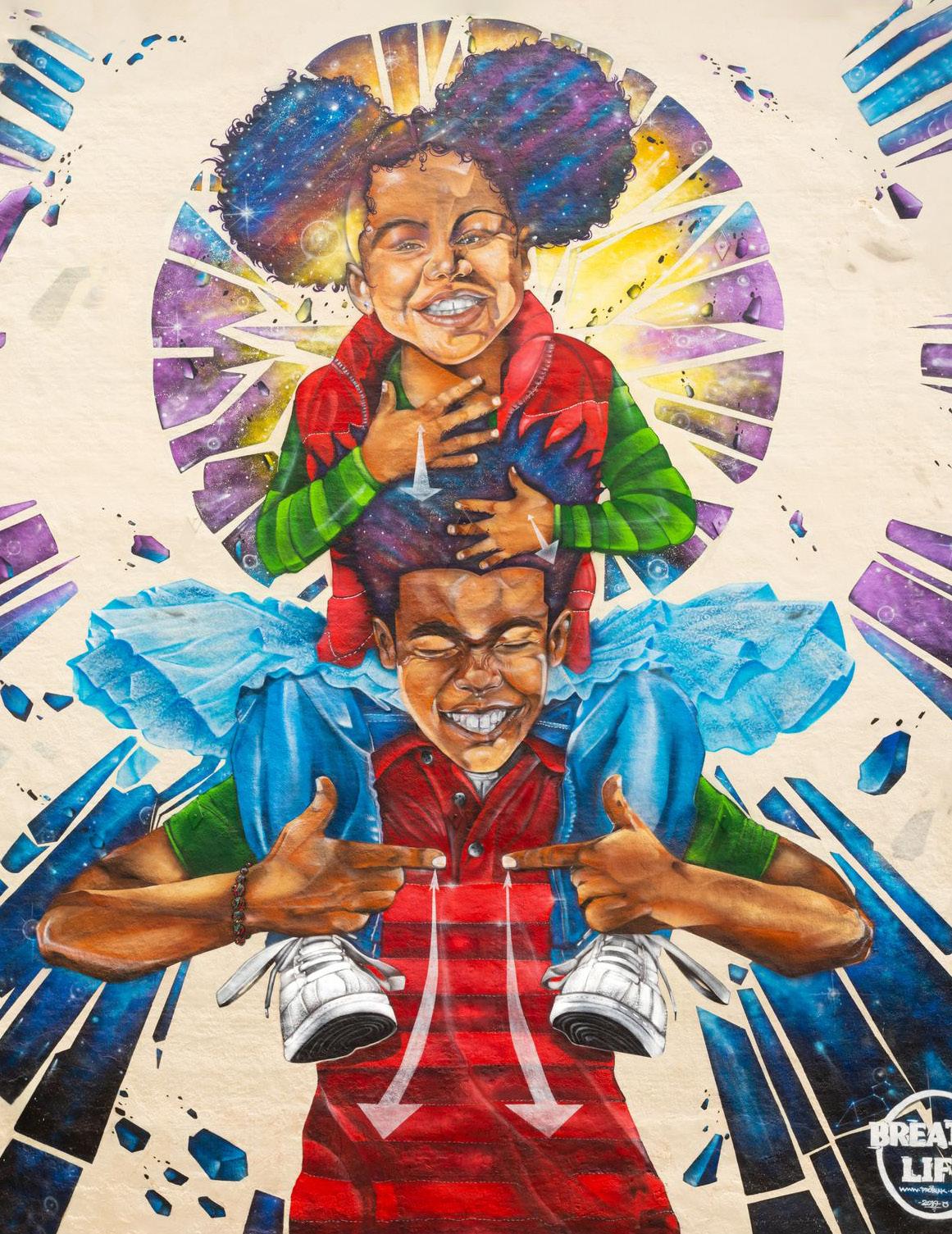
Aydan Gedeon-Hope (I)
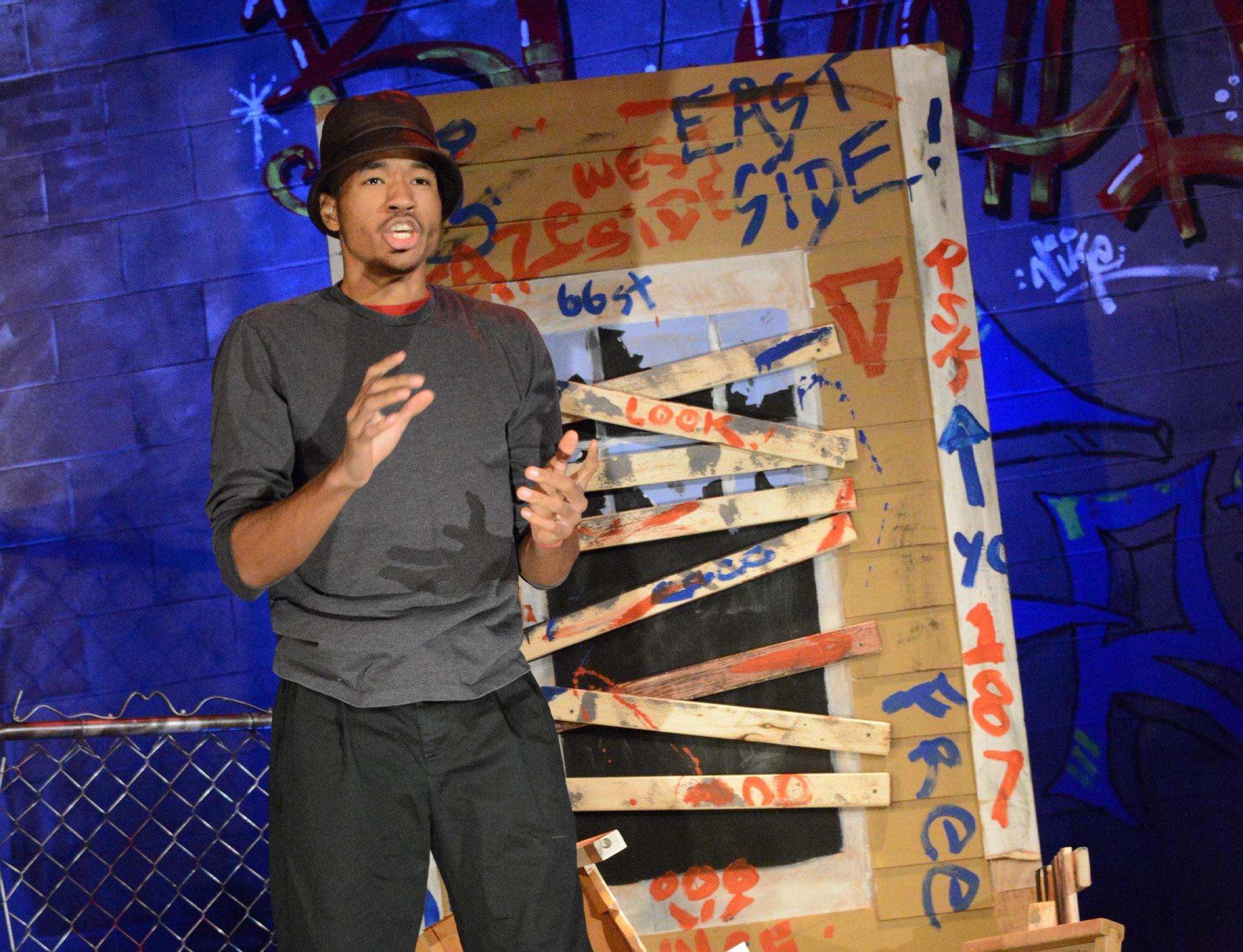
Twilight: Los Angeles, 1992, the Year’s Senior Play, Premieres Virtually
In planning for the school year, Director of Dramatics Derek Nelson knew that he would have to be creative in order to stage a drama production during a pandemic. His solution elegantly responded to two realities of 2020: The isolation and social distancing forced by COVID-19, and the uprising against racial injustice that marked the spring and summer, specifically. Mr. Nelson’s solution was to enlist Roxbury Latin’s oldest students—and their Winsor School and Boston Arts Academy counterparts—to stage Twilight: Los Angeles, 1992, a work of documentary theater by playwright and actor Anna Deavere Smith.
In the play—performed as a series of monologues—Ms. Smith uses the verbatim words of nearly 300 people whom she interviewed after the Los Angeles riots—which were sparked by the beating of Rodney King and the subsequent trial—to expose and explore the devastating human impact of that event. “Given the political and social unrest of the last eight months,” said the play’s director Mr. Nelson, “it is stunning, revelatory, and tragic that Anna Deavere Smith’s Twilight: Los Angeles, 1992 speaks to us 28 years later.”
Twenty-one Roxbury Latin boys rehearsed the 22 men’s monologues beginning in September, both in-person and over Zoom, along with 12 girls from Winsor and one girl from Boston Arts Academy.
The monologues were filmed individually at both schools, and the resulting film was edited by Evan Scales, a Boston videographer. The production premiered on November 20, via livestream and YouTube. //
Edozie Umunna (I)

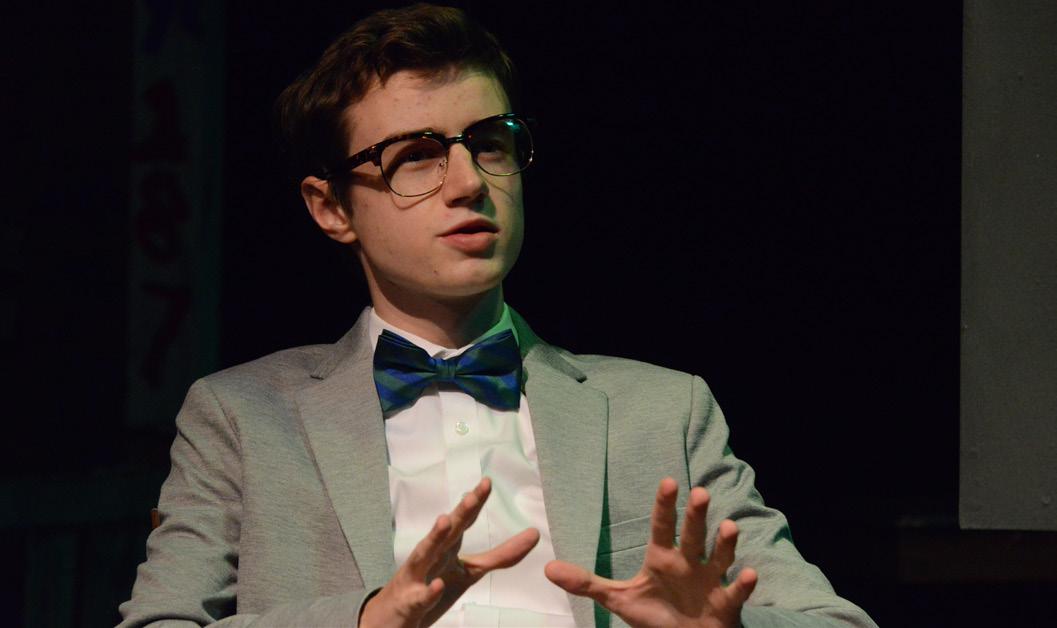
David Sullivan (II) Esteban Tarazona (I)

John Austin (III)

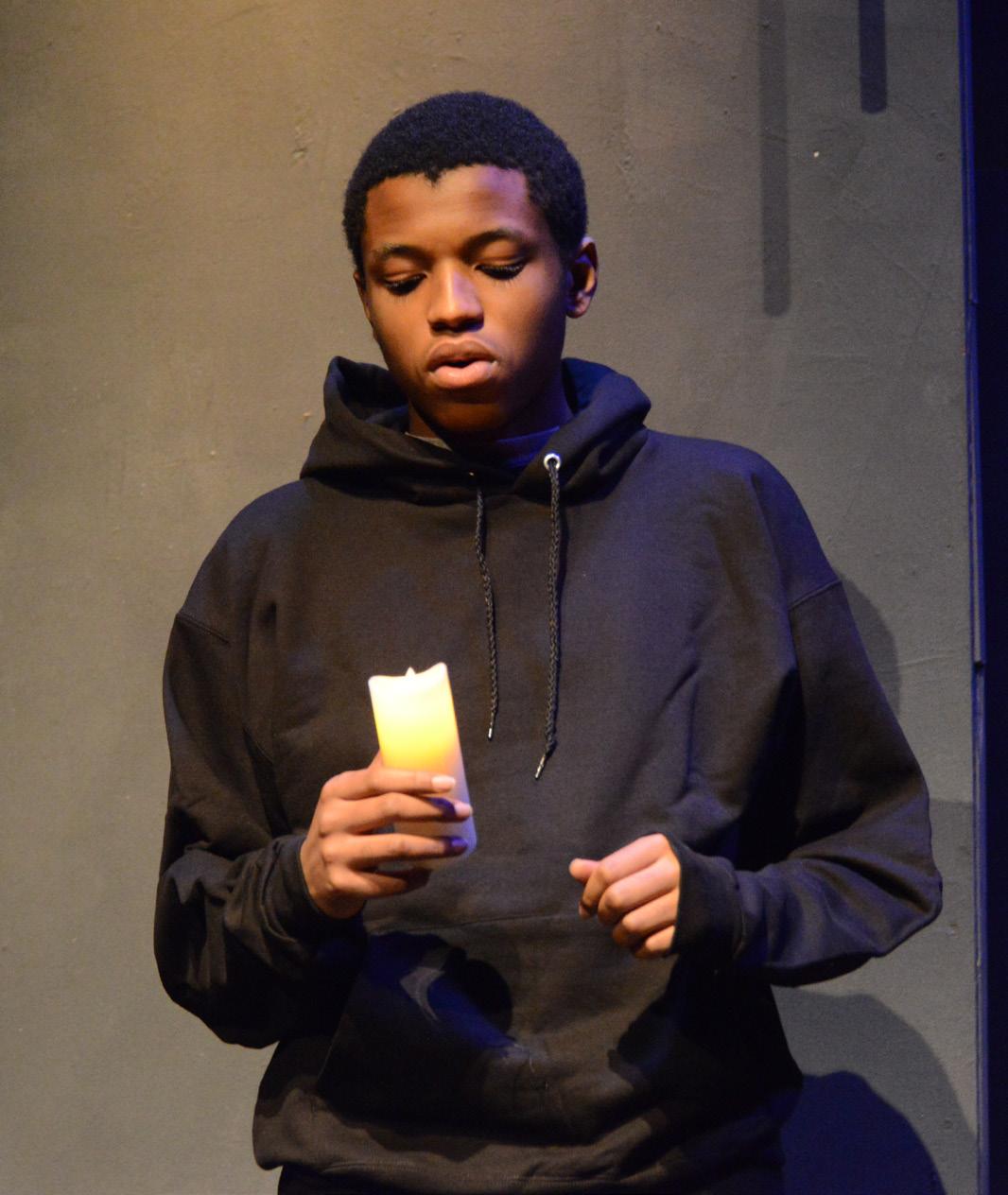
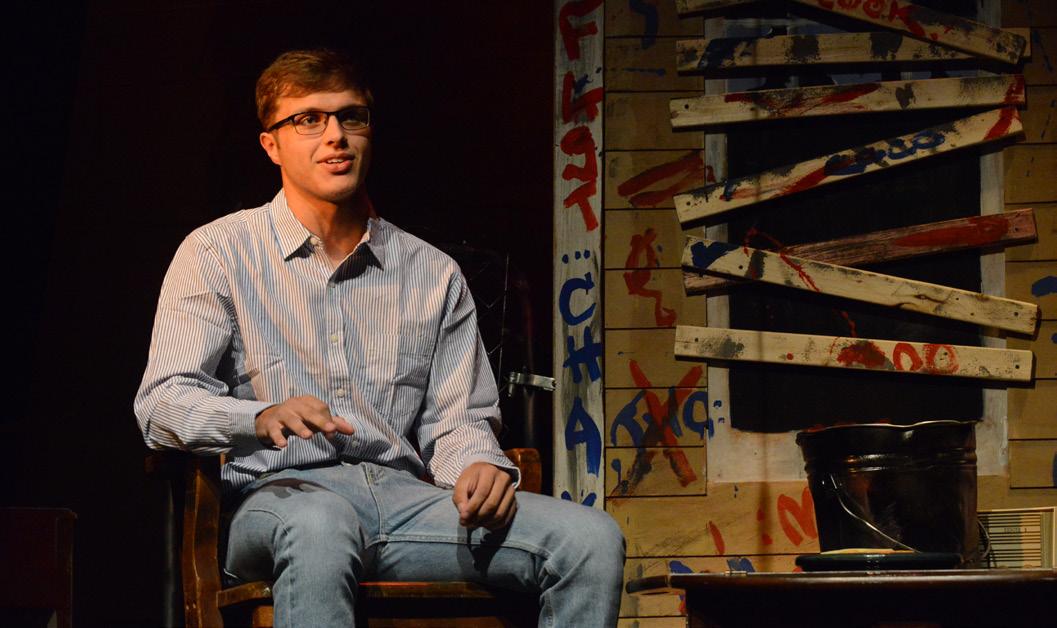
Emmanuel Nwodo (III) Matt Hoover (III)
Michael Rimas
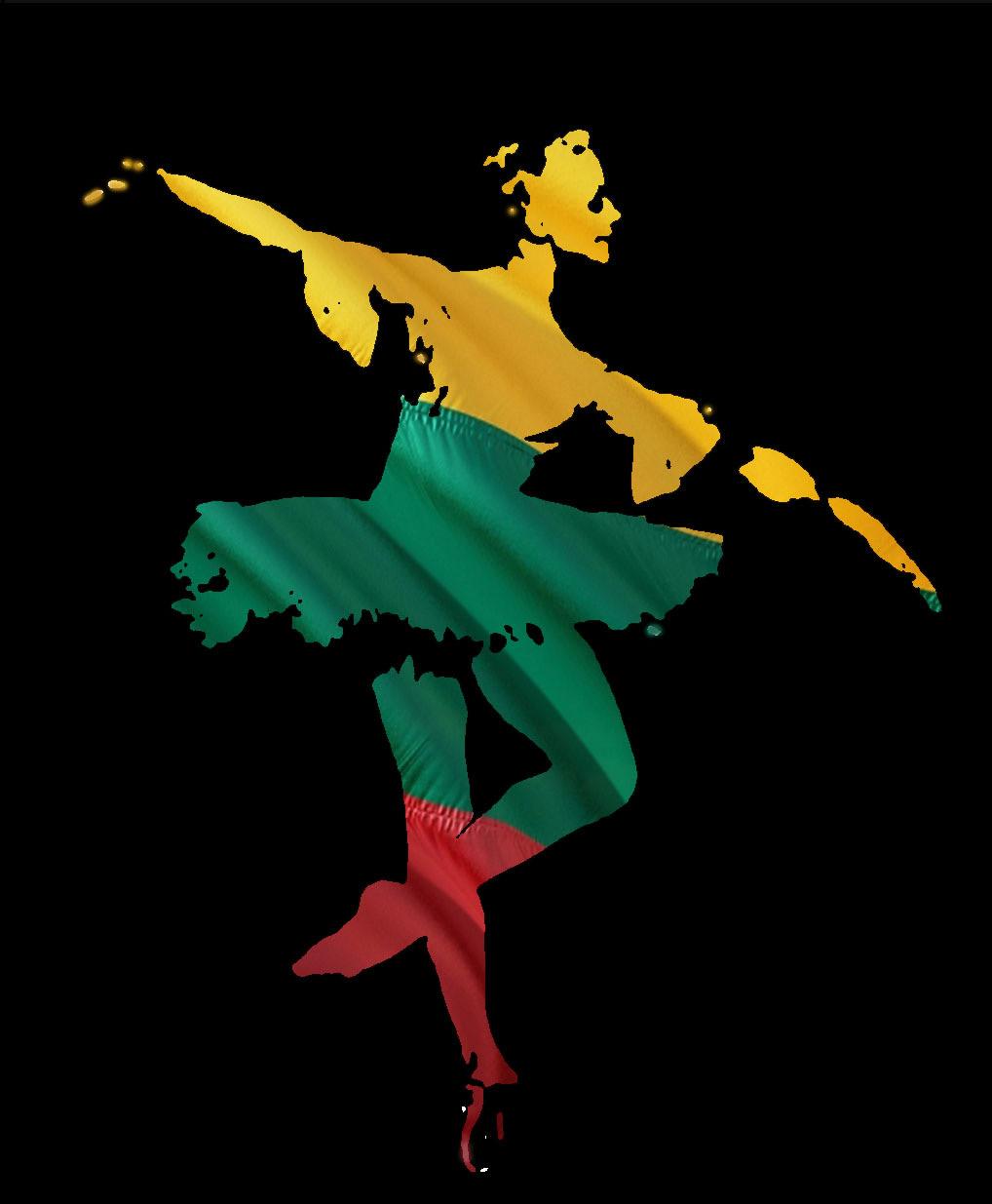
Drawing on Ancestry, Dance, and Digital Design
For their final project of the fall semester, Class VI boys in Sonja Holmberg’s Digital Design course conducted research on their cultural heritage and learned about traditional dances from various countries and regions. Using Photoshop, they then created posters representing these traditional dances. Students had the option of either using a masking technique that they had learned in class or a technique that involves using the magnetic lasso tool and applying a Gaussian Blur to the background of the image. In the culminating presentation of their work, students spoke about the dance that they had chosen to represent, the technique that they used in their poster, and the ways in which their art implements at least two of the Elements of Art and Principles of Design discussed in class. The resulting posters are the colorful product of much hard work and inventiveness on the part of the Sixies. //

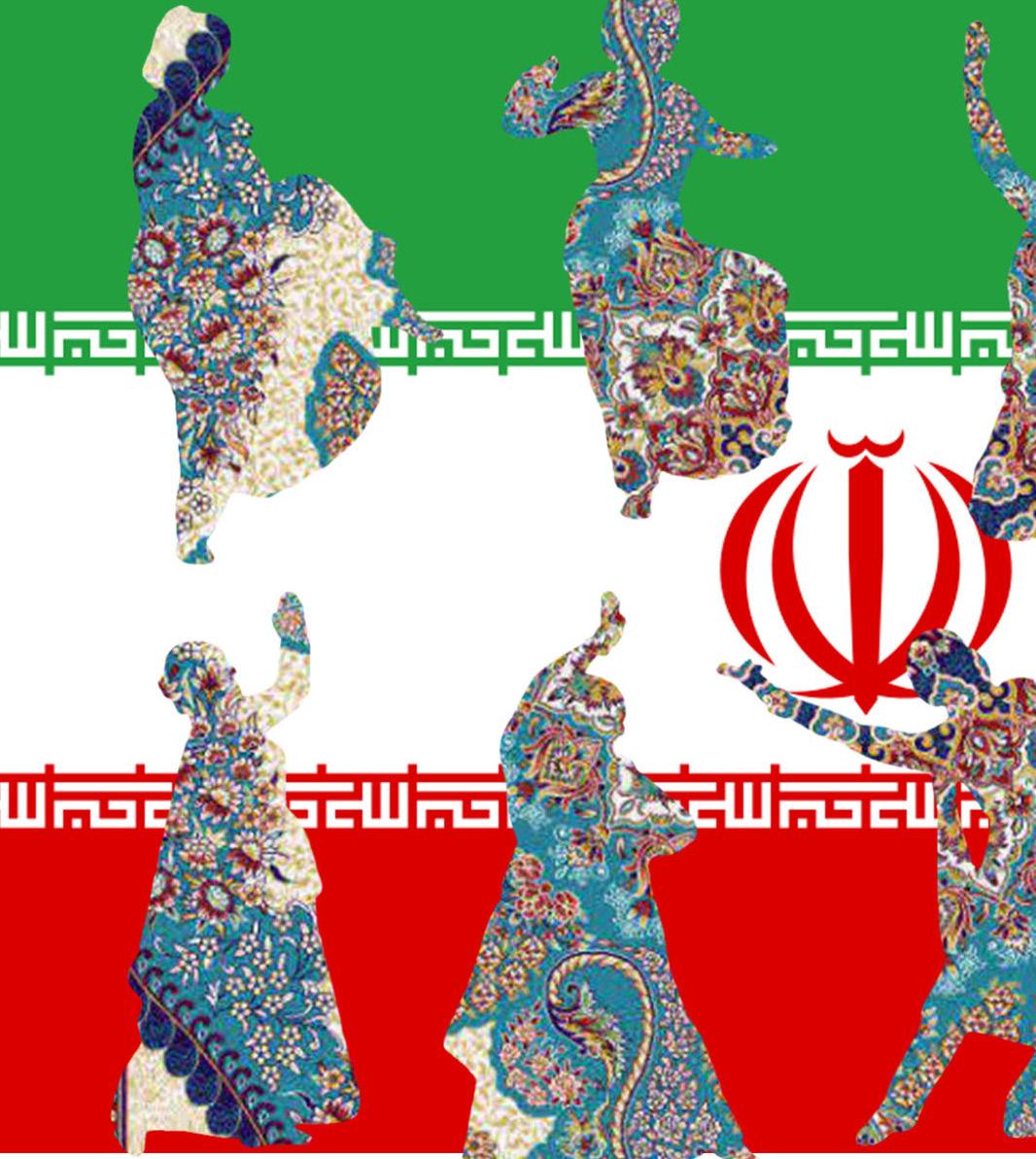
Jordan Bornstein
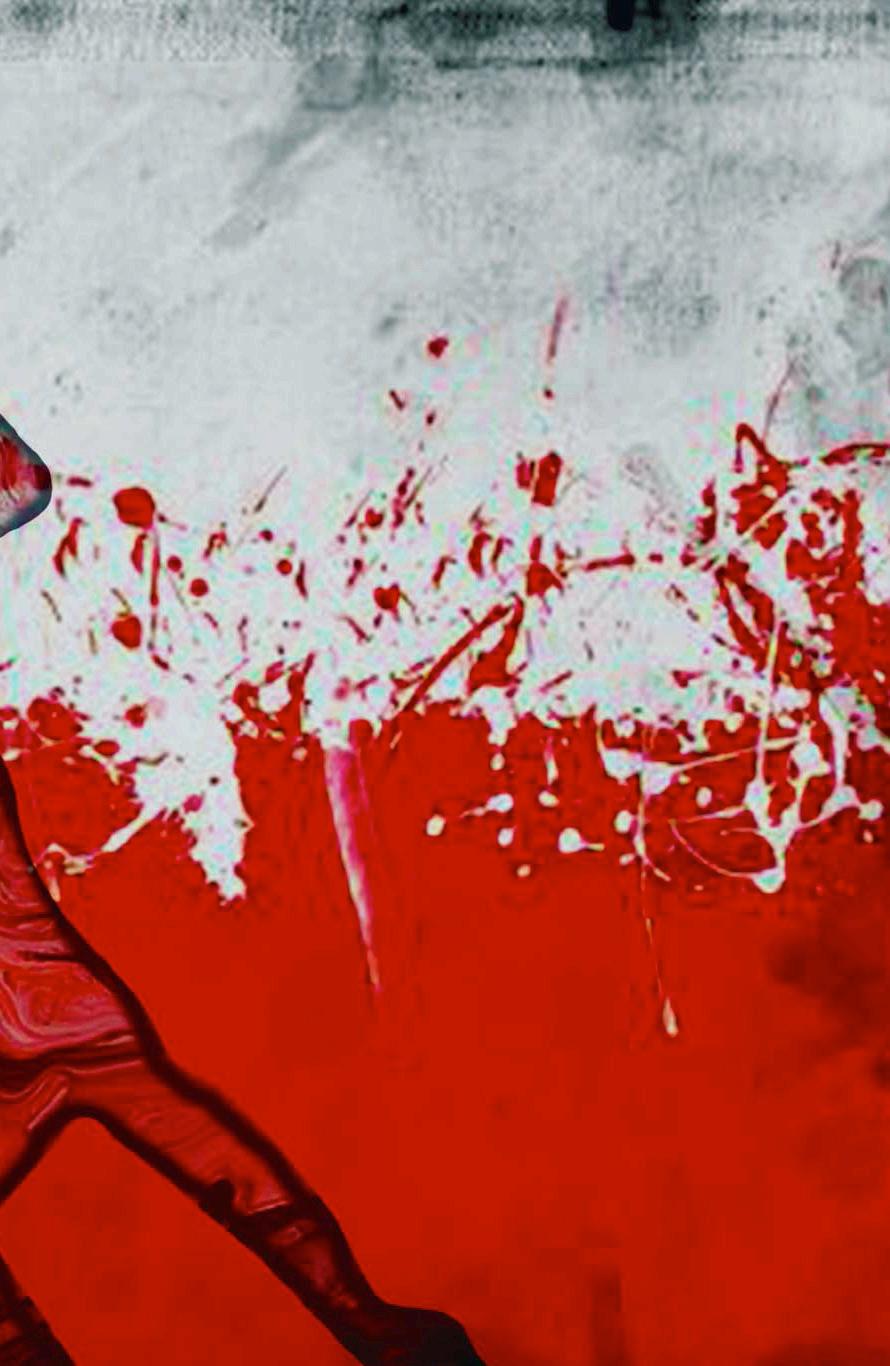
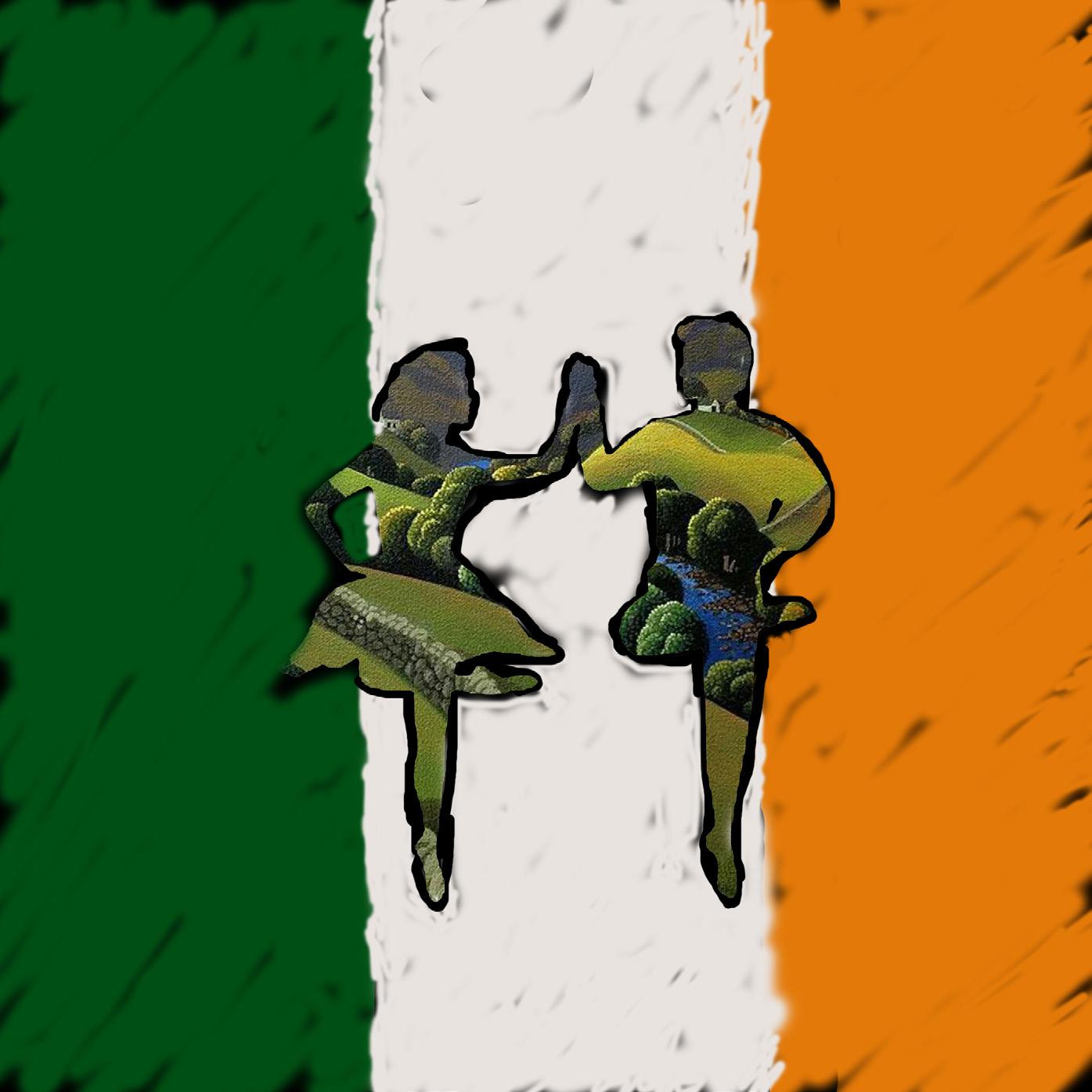
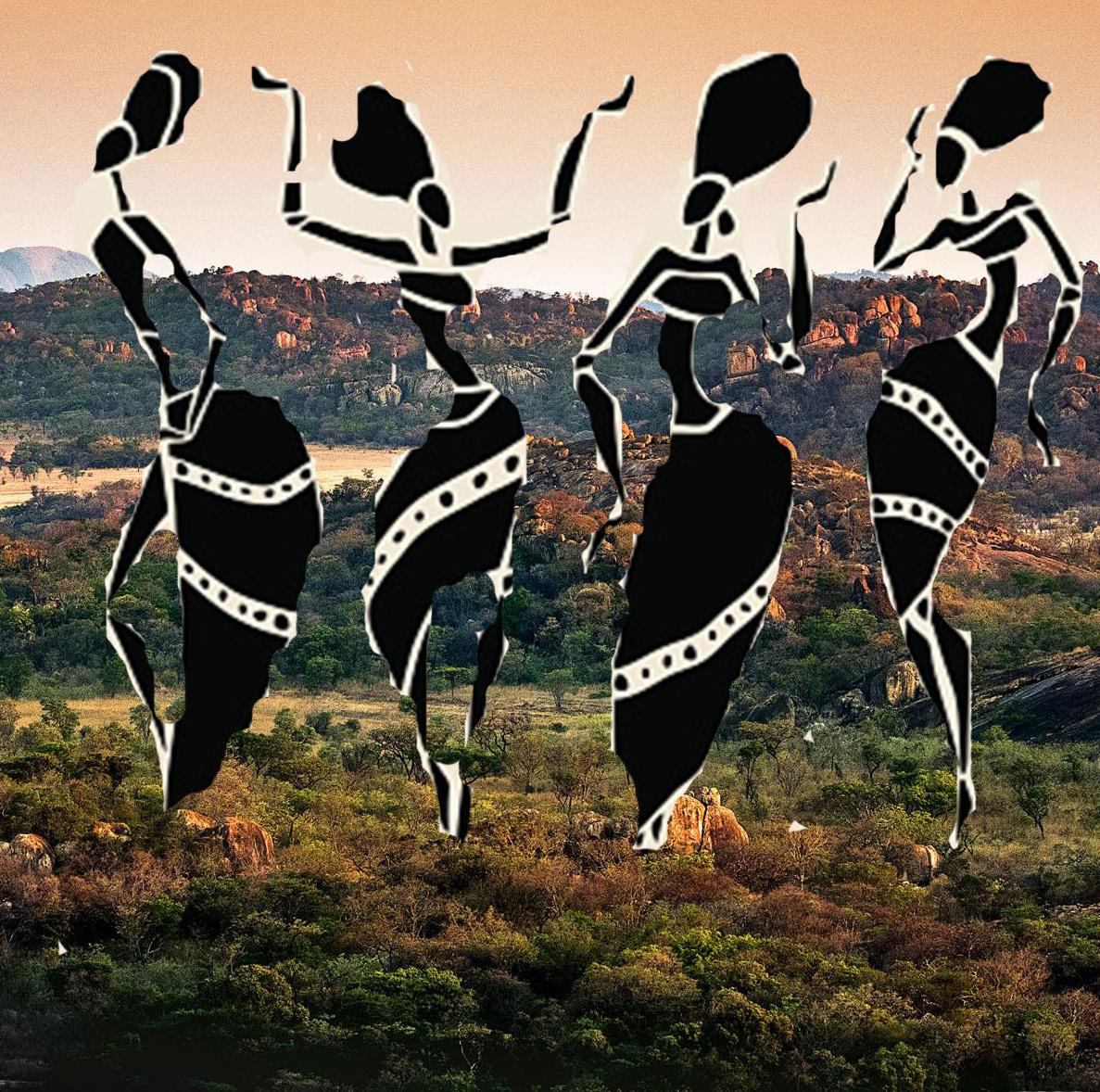
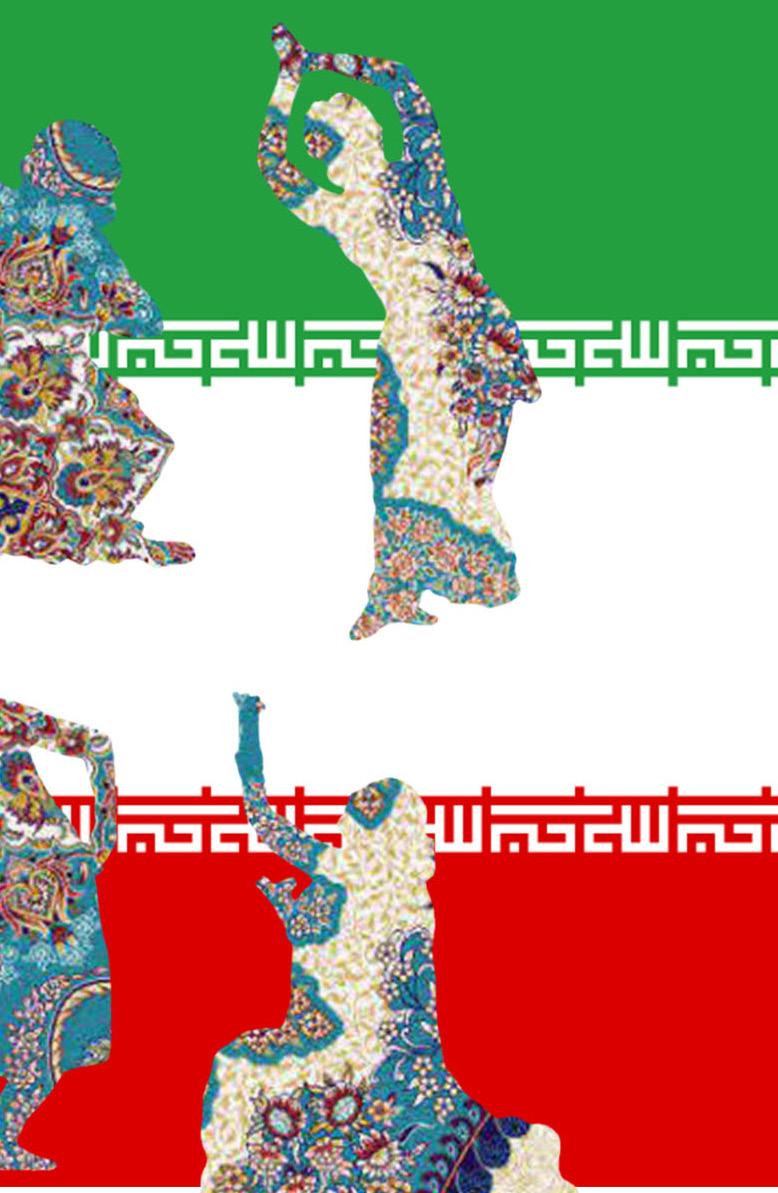
Denmark Chirunga
Colin Bradley

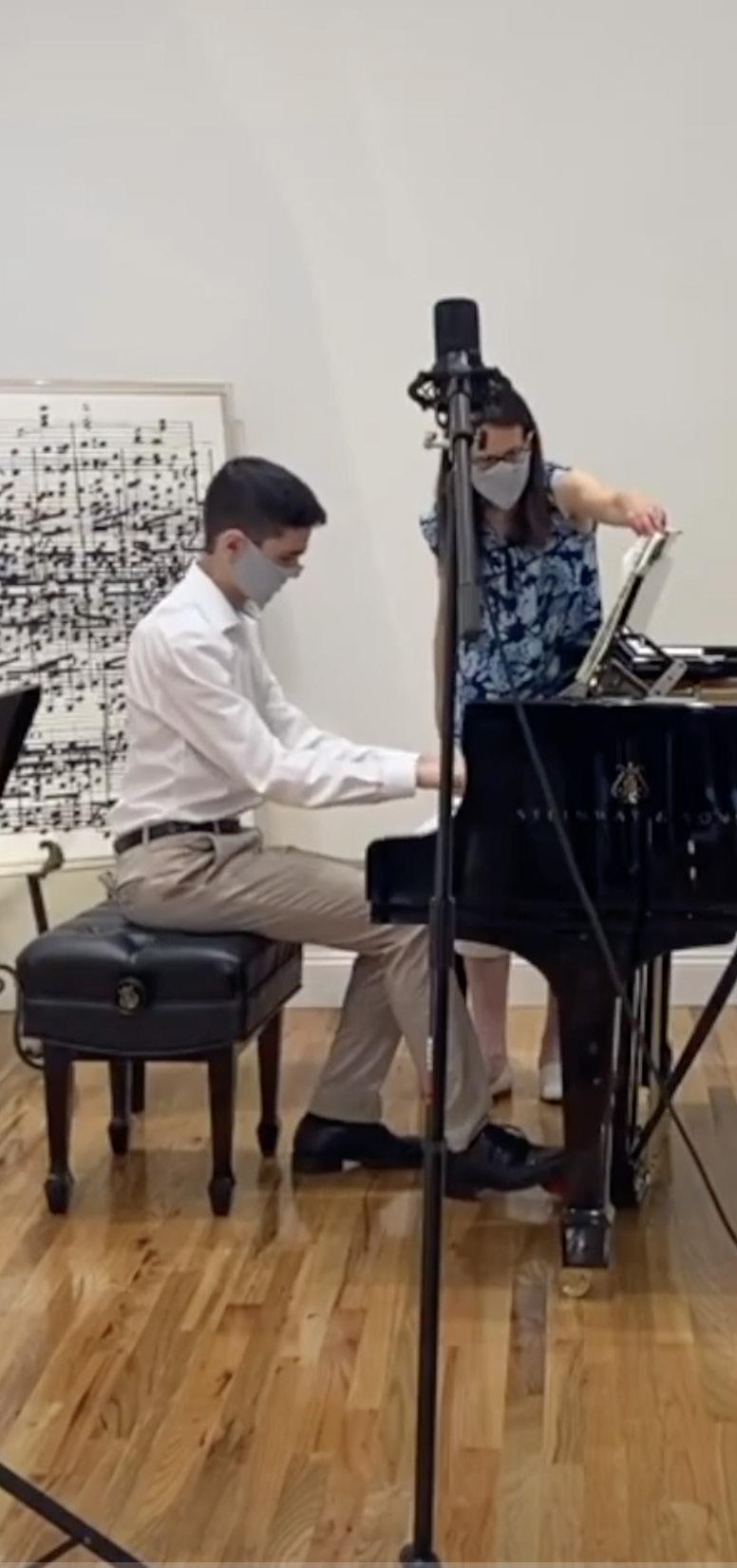
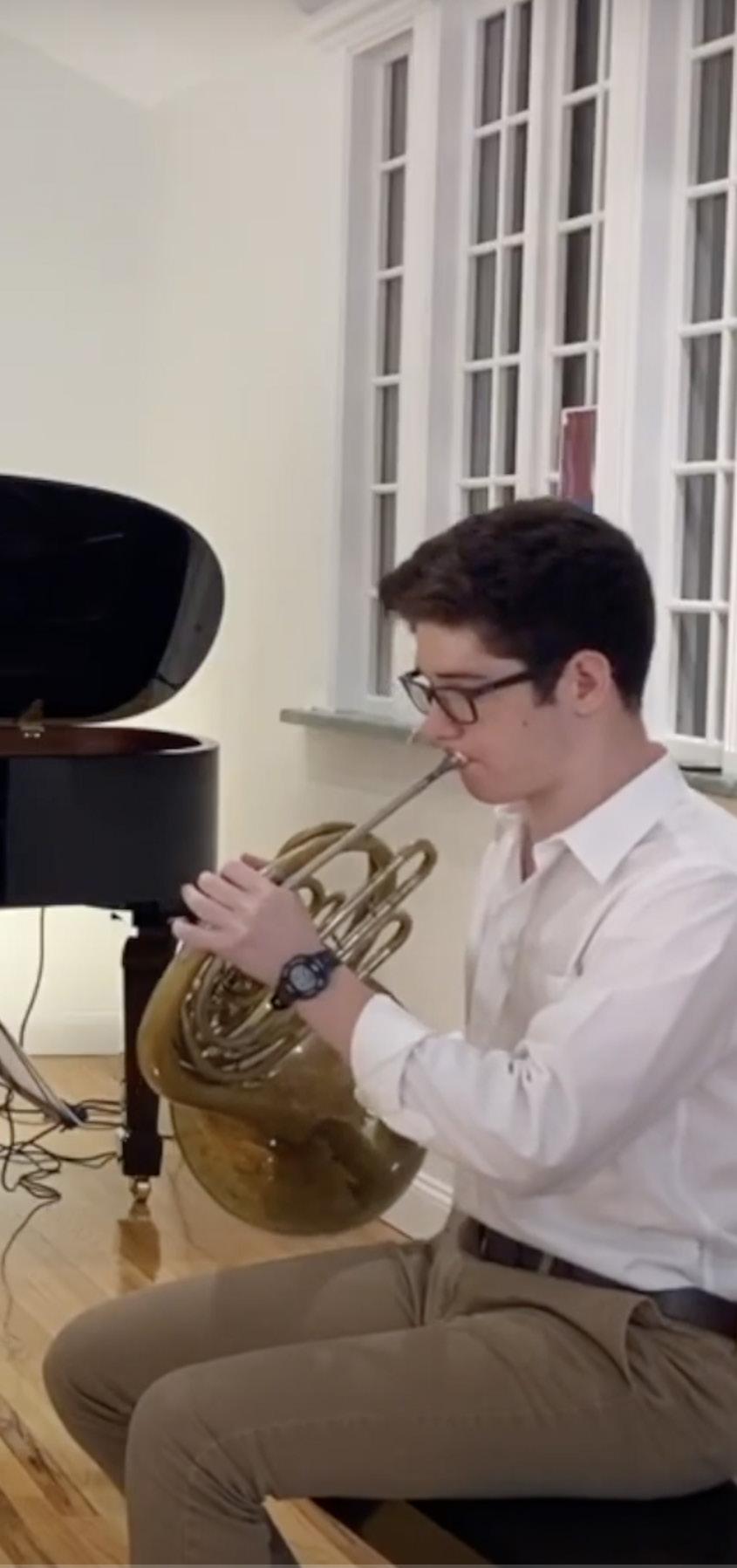
Chamber Trio Earns First Place in International Competition
The chamber trio of Alex Yin (II), Heshie Liebowitz (II), and Daniel Berk (I) entered this year’s international Great Composers Competition having never played together as a trio before. Yet this summer—looking for opportunities to make music with others, safely—the three boys wanted to fill the musical gap they were feeling on the heels of the spring’s quarantine. Initially, their plan was simply to play together, but when the opportunity arose to participate in the online competition, they took it.
The Great Composers Competition is a series of international music competitions for young performers organized in categories—for instrumentalists (piano, strings, winds, percussion), singers (opera, sacred music, art song, musical theatre), and chamber groups.
Daniel (French horn) plays with Alex (violin) outside of school, and Heshie (piano) had performed with Alex before; each admired the others’ musical skills. Though repertoire that involves the horn is limited, they selected Brahms’s Horn Trio, Op. 40. When they were pleased with how well the piece turned out, Heshie took the initiative of submitting the recording on the group’s behalf.
Knowing they needed large spaces in which to practice and perform while maintaining a safe distance, the boys were lucky to secure rehearsal space first in an auditorium on the Brandeis campus, and second, at a new Steinway piano retailer showroom in Newton, prior to the store’s official opening.
“This was my first time playing in a chamber trio,” says Daniel. “As Alex says, there’s not much to play for horns, but this piece is a hallmark of the repertoire, and it put me in the hot seat. I wasn’t used to minimal rehearsal—we only had two
rehearsals before we recorded—so that was a new experience, just getting the music and rehearsing on our own. We put it all together more quickly than any of us would have liked, but we were really pleased with how it came out.”
All three boys have been playing their instruments since they were very young—Heshie playing piano since before he can even remember. “When it comes to chamber music, what I enjoy most is playing with other people,” he says. “It’s fun to play with your friends, first of all, but it’s also rewarding because you get to explore with different sounds that you can’t make by yourself on your own instrument.”
“One thing I love about violin is the flexibility of the instrument,” says Alex. “You have so many options available to you. For instance, I can play solo music; I can play chamber music; or I can play in an orchestra.”
“Horn and brass are pretty different from other musical families, because they rely a lot less on finger technique and a lot more on trusting yourself and taking leaps of faith,” adds Daniel. “It feels like more of a mental game than a physical one. So when I play with instruments that demand a lot more technical skill—like piano and violin—it’s awesome to help produce that contrast of the long tone of the horn—which is not extremely complicated— with the sounds of the piano and the violin, which are just going a mile a minute, lightning fast. That combination of sounds is just a beautiful thing to help create.”
Now that the boys know what they can create together as a chamber trio, they hope to play together more in the future. The Brahms piece they performed has four movements, and the boys played the middle two. “The most iconic parts are actually movements one and four,” says Daniel, “and we were hoping to save them for when we can play in person together, and perform in person—hopefully on the Roxbury Latin stage!—as well.” //
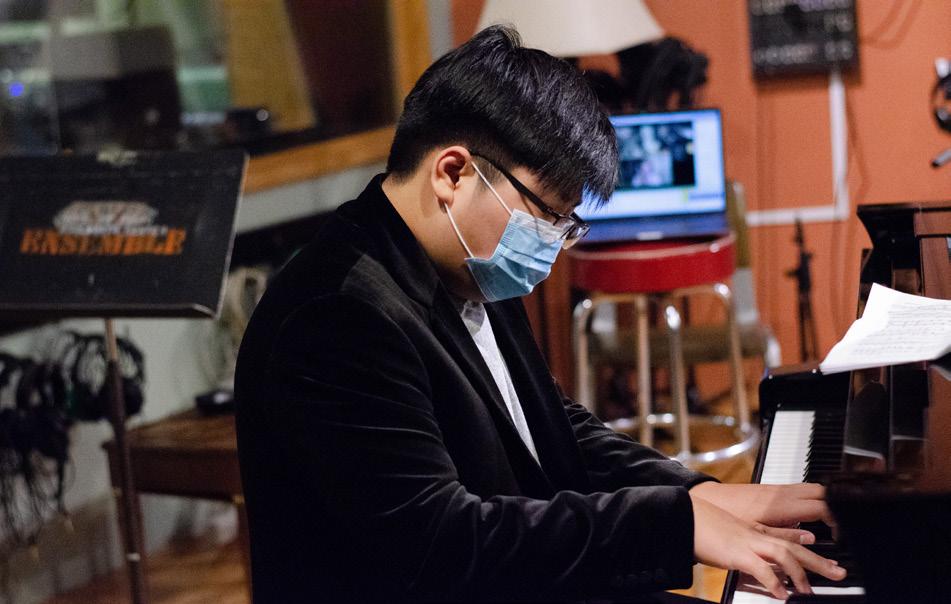
Pianist Andrew Gu Selected for NPR’s From the Top
Andrew Gu (V) was recently selected and recorded for NPR’s nationally-renowned From The Top program—a premier music radio show, which celebrates the stories and talents of classically-trained young musicians. The episode featuring Andrew’s performance—Show 393, with host Peter Dugan—aired nationally during the week of December 14. Andrew performed Beethoven’s Sonata No. 7 in D Major; he was the youngest of the five teenage musicians featured on the episode, which also included saxophonists and violinists—hailing from Chicago, Illinois to Underhill, Vermont—and performances of pieces by Stravinsky and Reena Esmail.
Andrew, who has earned other accolades and honors for his skills as a pianist, started piano lessons with his mother, Helen Jung, and continued his studies with Alexander Korsantia and Hitomi Koyama. Andrew made his orchestral debut at age eight, performing Haydn’s Keyboard Concerto in D Major at the Music Fest Perugia, Sala dei Notari, Italy in 2015.
Several Roxbury Latin student-musicians have been featured performers on From the Top over the years. From the Top is a national, non-profit organization that supports, develops, and shares young people’s artistic voices and stories, providing young musicians with performance opportunities in premier concert venues across the country; national exposure to over a half million listeners on its weekly NPR show; and more than $3 million in scholarships since 2005. //
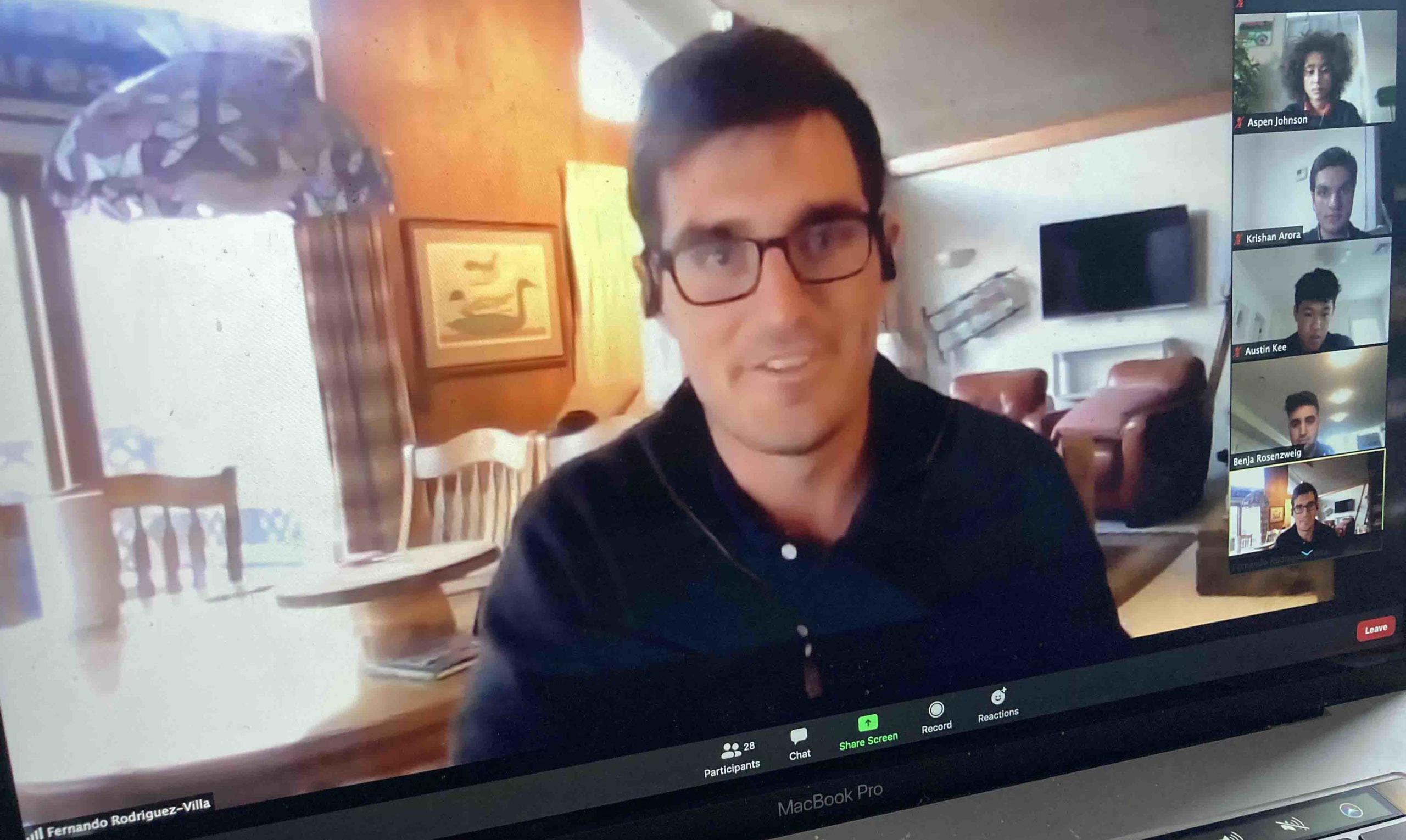
Fernando Rodriguez-Villa ’06 Speaks at RL’s Inaugural Innovation Exchange
On December 3, Roxbury Latin hosted its inaugural Innovation Exchange with keynote speaker Fernando Rodriguez-Villa ’06. Fernando spoke with students and faculty over Zoom, sharing his journey from RL student to co-founder of AdeptID. Students were able to engage with AdeptID’s technology during a group project, followed by a question and answer session.
“One of the most valuable parts of RL for me,” began Fernando, “was getting an early education in not being the smartest person in the room. At RL, you learn pretty quickly that there are a lot of people out there who are sharp in ways that you are distinctly not. The faculty there knew that I was a strong, good, fairly unremarkable student compared to some of the other students that I was lucky enough to share the classroom with. Whether I was at Dartmouth or in banking or beyond, I was never unfamiliar with being around people who were incredibly bright and had perspectives and insights that I wasn’t going to arrive at on my own.” Fernando is the founder and CEO of AdeptID, a start-up with an AI-enabled platform that predicts the success of transitions between different kinds of jobs. At RL, Fernando was active in theater and Latonics and played varsity football, basketball, and track. After graduation, he spent a year as a Hennessy Fellow at Eton College before attending Dartmouth.
Fernando left banking in 2014 to work at Knewton, which used machine learning to personalize learning, and since then Fernando—a self-described serial entrepreneur—has spent his career pursuing machine learning ventures around the world. In 2016, he co-founded TellusLabs, a satellite analytics startup that was quickly acquired by Indigo. At Indigo, he served as the Director of International Strategy.
“I liked banking,” said Fernando, “but it was clear to me within a couple of years that it probably wasn’t what I wanted for my long-term career trajectory. I started seeing growing companies and leading companies on the operational side as exciting.
“One of the most valuable parts of RL for me was getting an early education in not being the smartest person in the room. At RL, you learn pretty quickly that there are a lot of people out there who are sharp in ways that you are distinctly not... I was never unfamiliar with being around people who were incredibly bright and had perspectives and insights that I wasn’t going to arrive at on my own.”
“One client of ours was a CEO who had started his company from above his garage with two friends. They had grown to become a massive and important asset manager over 25 years. He was still close friends with the people with whom he had gone on that journey. He was beloved by that team, and in that camaraderie there was a lot that reminded me of RL. It was inspirational. “Simultaneously, I was fortunate to start learning from friends outside of work, about some of the trends in technology. I got into what was called big data, which is now known as AI or machine learning. I learned of the potential this technology had to generate predictions or insights at scale—to put that into software that could, in real time, answer pretty interesting questions. So I became obsessed with this one startup based in New York called Knewton, which was using AI on education data.”
Knewton was initially hesitant to hire Fernando, an investment banker with no professional experience in AI or education.
“‘You have this other set of skills,’ they said, ‘and we wouldn’t pay nearly as much as you’re making now,’” said Fernando. “It took a fair amount of work to persuade them that I was excited about the mission and was prepared to face the learning curve of the technology. It took several tries to make them comfortable hiring me!”
Knewton put Fernando in charge of international business development, sending him to Spain, South Africa, India, and Russia to expand the reach of the New York-based company.
“Knewton was a good stepping stone into the world of entrepreneurship,” said Fernando. “Within the world of startups and technology, there are a lot of very early stage companies; AdeptID, which we started this year, is in its preseed stage. As companies get larger, they tend to raise more money, get more customers, and hire more people. Knewton was in this later stage when I joined, and so there was a fair amount of risk that had been taken off the table.”
Fernando knew he wanted to get involved with an earlier-stage venture, so he quit his job and moved to Boston with his now wife, Emma.
“That job hunt was not particularly easy or comfortable,” admits Fernando. “I had to go for a lot of coffees to get a sense of founding teams I wanted to join, and ideas I could get excited about. That’s how I found TellusLabs, where I was paired up with two great technical founders who had built algorithms that could—just by looking at satellite images of crops—predict the crop yield per acre. Those kinds of
predictions of food supply were exciting, but the challenge was turning that technology into a business.”
In two years the founding trio at TellusLabs had expanded to a team of 14 data scientists and engineers, attracting the attention of one of its partners, Indigo Ag, whose technology fit almost perfectly with the direction in which TellusLabs was headed.
“As we were a customer of theirs,” said Fernando, “they approached us asking if we were interested in joining their company. Initially we said no, because we wanted to build our own independent company, but they made a persuasive offer. Most of the people who were part of TellusLabs are still working for the company and are still happy there. I was also happy to have gone through that, but working for Indigo, a multithousand-person company, I learned that I loved that early stage—a couple of people and an idea, a promising technology, and the building and uncertainty that comes with that.”
Fernando left Indigo early this year for his new startup, AdeptID, with co-founder Dr. Brian DeAngelis, to focus on emerging issues in the labor market.
“There seemed to be a lot of dynamics in the labor markets that looked like a matching problem,” said Fernando. “That is very much what machine learning and data science tend to be good at—solving matching problems.
“It’s incredibly hard to change jobs,” adds Fernando, “but something that’s made it easier for me personally is the fact that I have this very blue-chip education. I’ve had a lot of privileges and advantages that have resulted from that. People look at my story and say, ‘Perhaps he hasn’t done this thing, but because he went to these schools, and because he has these other stamps’ they’re willing to take a gamble on me.”
A large portion of the workforce doesn’t have the education and background that Fernando has, and so changing jobs is difficult. Transitioning between industries can feel nearly impossible.
“There are tens of millions of people who are unemployed right now who fall into this category,” said Fernando. “And then there are also people who are employed in industries in structural decline—job losses in hospitality and oil and gas and coal. We estimate around 35 million workers will need to find jobs in something very different than what they’ve done before.”
The entrepreneurial challenge for Fernando and Brian was figuring out the business of solving that problem. Could they excite people by the economic opportunity of trying to address those issues?
“There are certain sectors in which job growth or job demand is faster than the rate at which people can hire for them,” says Fernando. “In sectors like healthcare, renewable energy, and advanced manufacturing—roles like machinists, pharmacy techs—employers are struggling to find people who are certified or ready to do these jobs.”
It is that complex dynamic of supply and demand that drives AdeptID, which uses big data to look more deeply at workers and their underlying skills to find potential cross-industry career matches.
“Just because you’ve been a service unit operator for Chevron doesn’t mean that you can’t do one of these other growing jobs,” says Fernando. “In fact, some of the skills you’ve picked up are incredibly relevant and mean that you are more likely to fit into these new roles. That was our anecdotal perspective, but I had to go out and make it legible—to take these stories and put them into a data format that can allow us to support that perspective from an algorithm standpoint.”
Fernando and his AdeptID co-founder, Dr. DeAngelis, work with employers and vocational training providers in New England as well as the Midwest and Sunbelt to acquire data on hiring patterns and placement rates to help train their models. During the recent session, RL students used sample data from AdeptID, which mapped the “distance” from jobs in one industry to jobs in another on the basis of skill, to work on group projects.
“What we find when we do this,” says Fernando, “is that there are some jobs that are intuitively similar—for instance pharmacy aids and pharmacy technicians—and others whose connections are a little less obvious, like a cashier or food service worker with that same pharmacy technician role. It turns out there’s actually a fair amount of overlap. If the data starts to say that, we say, ‘Okay, can we confirm that?’ and the hiring managers we’ve spoken to at places like Boston Medical have agreed.” //
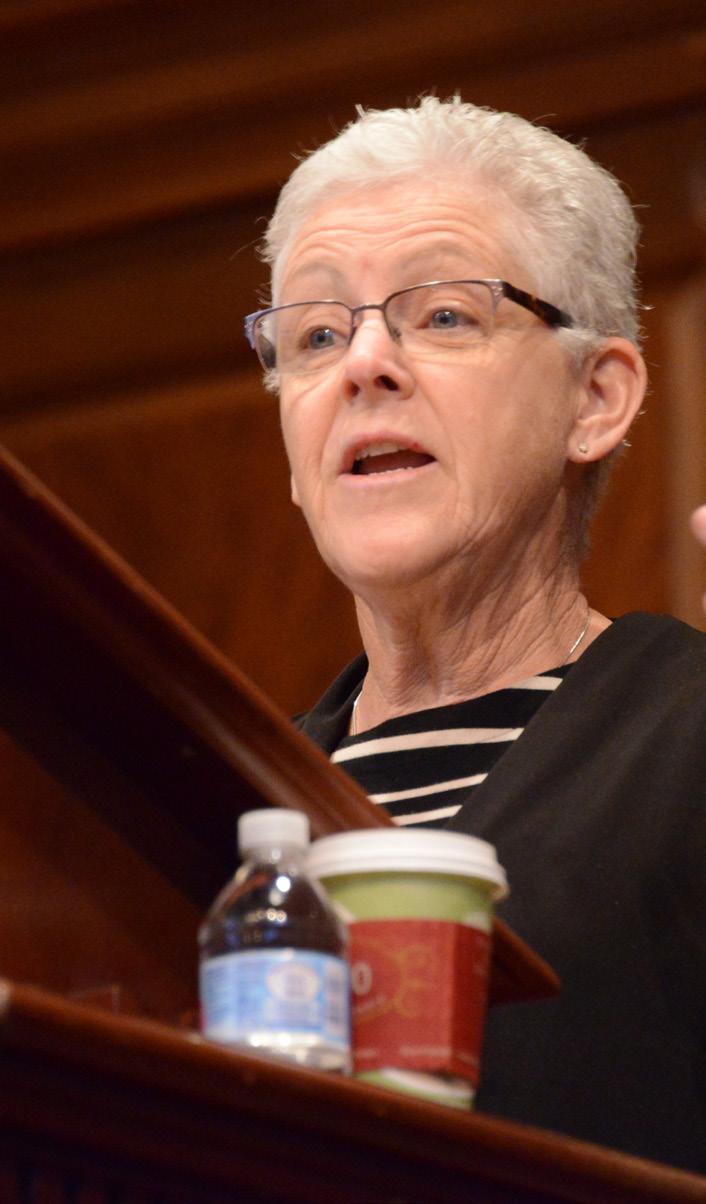
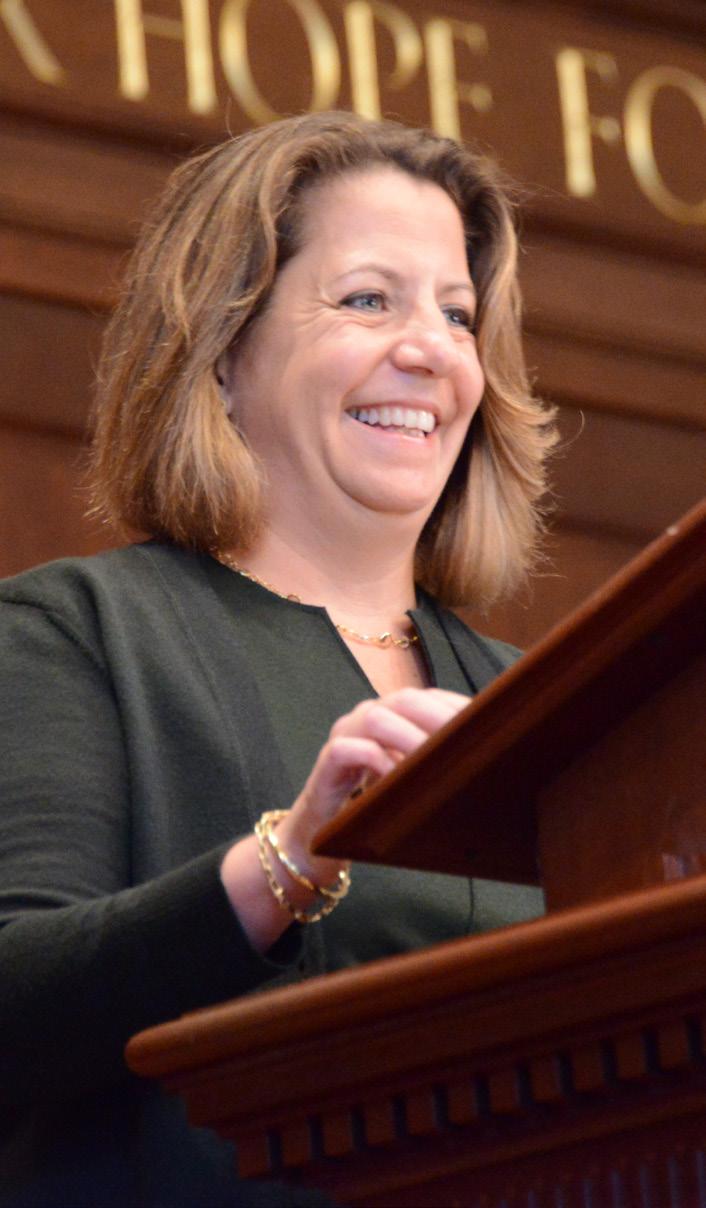

Gina McCarthy, Lisa Monaco, Marty Walsh
Recent Hall Speakers and Friends of RL Nominated Among President Biden’s Top Advisors
Roxbury Latin is honored each year to host an impressive range of guest speakers—expert and accomplished leaders, thinkers, researchers, artists, and public servants—who present to the boys and faculty on a broad range of topics. Three recent Hall speakers and friends of Roxbury Latin— Gina McCarthy, Lisa Monaco, and Marty Walsh—have been tapped for close advisor roles and cabinet positions in President Joe Biden’s administration.
The Honorable Gina McCarthy—former Administrator of the U.S. Environmental Protection Agency under President Obama—spoke to students and faculty in Hall on November 13, 2017, delivering the keynote address in the year’s Smith Scholar series focused on global climate change. On campus, she discussed her work in the Obama administration, offering her assessment of their accomplishments, the importance of the Paris Climate Accords, and the changes that could come with the Trump Presidency. She was generous with her time, spending another hour speaking to and inspiring seniors who were taking the Environmental Science course that year. “Climate change isn’t just a threat to public health—it’s not about polar bears. It’s about you, your health, the health of your children,” said Ms. McCarthy, identifying the economic threat as well: The stronger and more frequent storms in the Caribbean and the fires in the west call for billions of off-budget dollars that aren’t allocated. “The reason people are accepting the science of climate change is because they are feeling it,” she asserted. Ms. McCarthy currently leads the National Resources Defense Council. In her new role she will serve as a senior adviser to Biden, coordinating climate change policy throughout the government. She will be the stateside counterpart to John Kerry, who will serve as the administration’s international climate envoy. Lisa Monaco—who was serving as Homeland Security Advisor to President Obama at the time—delivered Roxbury Latin’s Jarvis International Lecture on October 17, 2016. Ms. Monaco is an alumna of our neighboring Winsor School, and she has recently been nominated as Deputy Attorney General to the Biden administration.


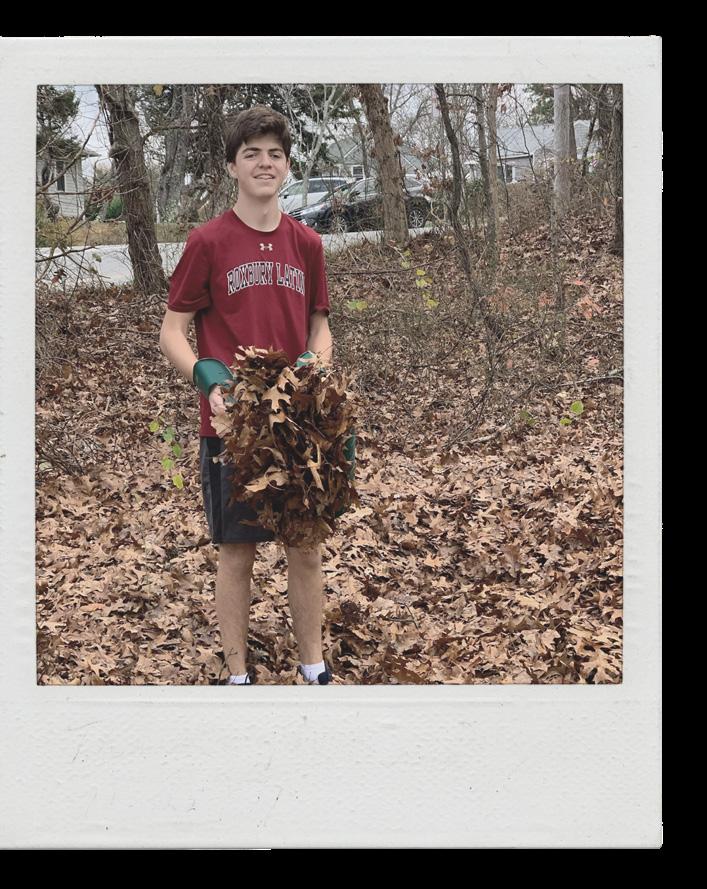
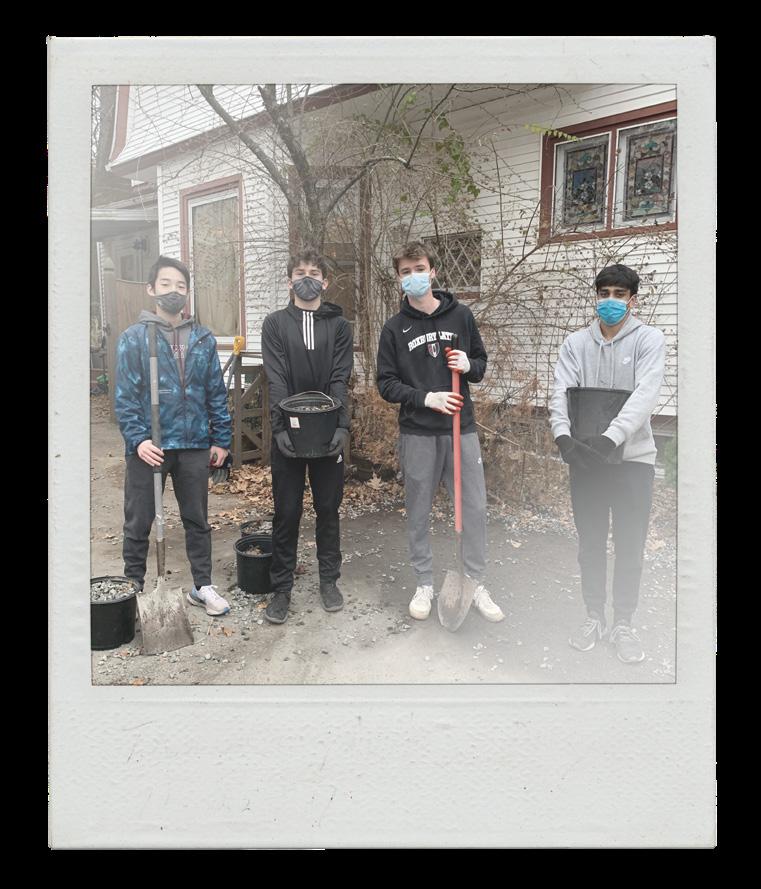
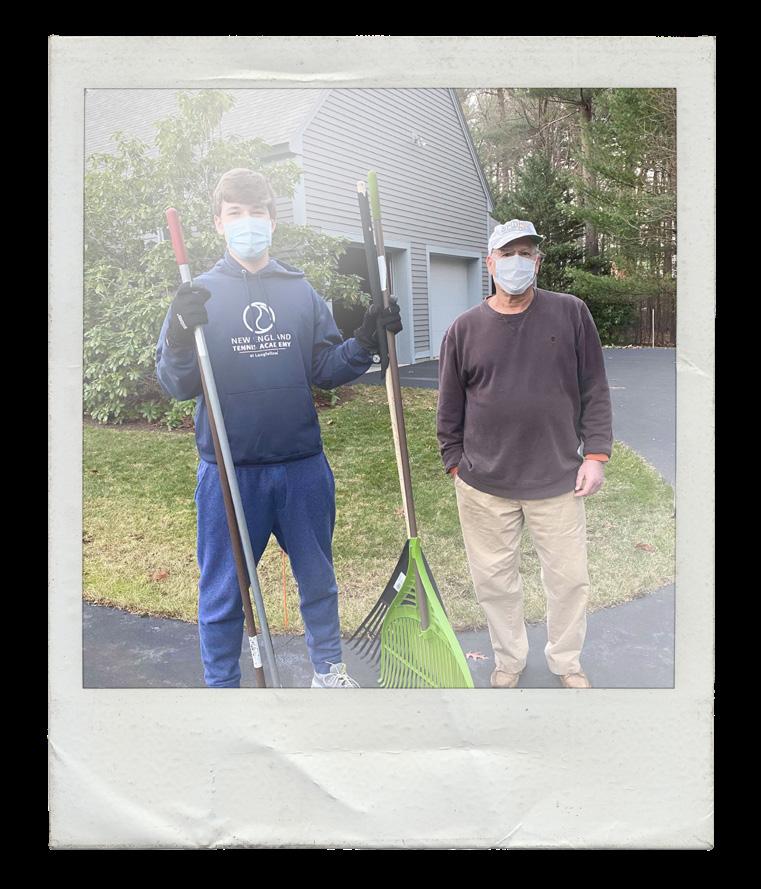
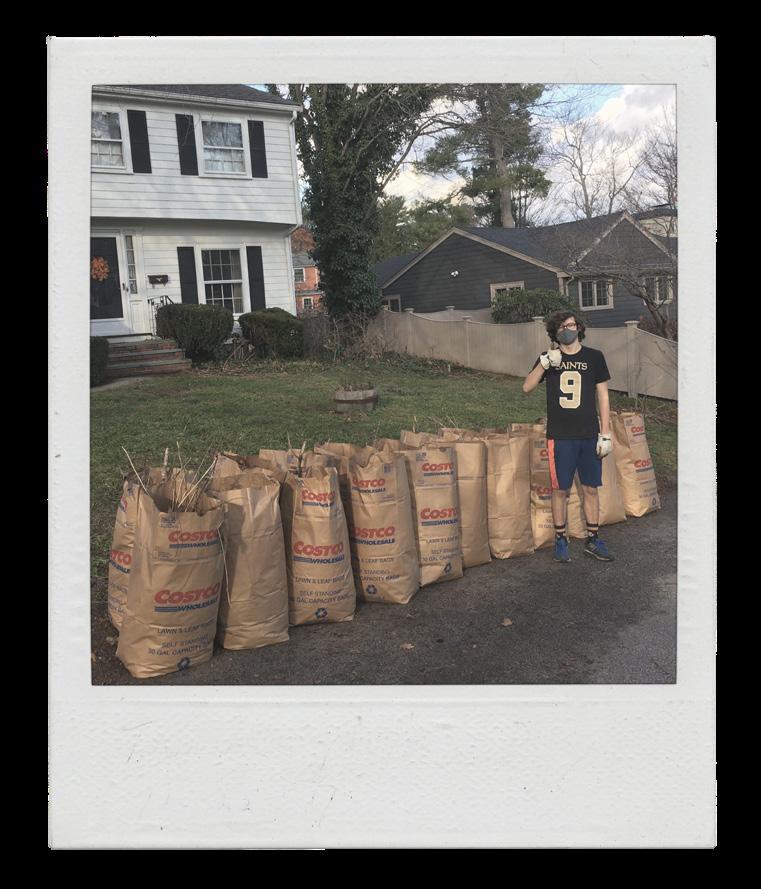
Class III Serves, Undeterred
Service is central to Roxbury Latin's mission, and Class III continued that commitment this fall—despite the challenges of the pandemic—when they volunteered their time to help elderly neighbors, single parents, and local parks with various fall clean-up needs. // In Hall, Ms. Monaco described not only her role as President Obama’s advisor—working with the President and the rest of the National Security Team to help keep the country safe—but also her own public service journey, which began soon after college when she worked in the Senate on the Judiciary Committee under then-chairman, Joe Biden. “I got bitten by the public service bug,” she explained. In closing, she implored RL students to pursue a career in public service. “Public service needs you,” she said. “In the coming years, our government, our nation, and our world will need people who can understand and operate in a fast-paced and wired world while remaining grounded in our enduring values… What John Eliot called ‘godly citizenship’ three and one-half centuries ago, is needed now, more than ever. And when I look around this room, when I think about the skills and smarts in this hall, I am confident that whatever challenges come in the decades ahead, your generation will rise to meet them.”
Finally, Boston Mayor Marty Walsh delivered RL’s Founder’s Day keynote address in 2014, when he spoke to students about persisting through struggles, and focusing on opportunities, by way of his own, personal story. “As a young person, I took a lot of lefts and rights where I should have gone straight,” he said. By his late 20s he acknowledged his trouble with alcohol and went into rehab. “Everyone in this room knows someone who is struggling. Sometimes life is not a straight line. I had loving friends and family to help me take the right path.” Mr. Walsh reminded students that they will encounter challenges and be faced with choices. He admonished the boys to follow their dreams, and listen to that inner voice, and especially to recognize the tremendous opportunities before them. On January 20, 2017, Mayor Walsh also led the ceremonial puck drop, commemorating the grand opening of RL’s Indoor Athletic Facility and inaugural home game hosted in Hennessy Rink. He spoke from center ice prior to the game, to the hundreds of RL fans in attendance, congratulating Headmaster Brennan and the school’s leadership for building a beautiful facility that would be used by Roxbury Latin athletes and neighborhood youth groups alike. Mayor Walsh has been nominated to become President Biden’s Labor Secretary. //
Dr. Lisa Piccirillo On the Beauty of Mathematics
In 2018, Lisa Piccirillo—a graduate student, and Boston College alumnus—learned about the Conway knot—a conceptual, mathematical tangle that had gained mythical status. (For more than 50 years, no mathematician had been able to determine whether Conway’s knot was “slice.”) One week later, Ms. Piccirillo produced a proof that stunned the math world.
On January 14, Roxbury Latin welcomed, in virtual Hall, Dr. Lisa Piccirillo, an assistant professor at MIT who specializes in the study of three- and four-dimensional spaces. She is broadly interested in low-dimensional topology and knot theory, and employs constructive techniques in four-manifolds. As a young graduate student, Dr. Piccirillo gained international fame for proving that the Conway knot is not, in fact, “slice.”
In Hall, Dr. Piccirillo began by walking students through an example of determining whether a given knot can be turned into an unknot by executing crossing changes. (This required the introduction of some topological vocabulary—knot diagrams, unknots, crossings, crossing changes, algorithms, sliceness.)
“A knot is just a circle,” she began, “but we’re going to think about the circle as sitting in three dimensional space. I don’t have any firm requirements on this circle being geometrically rigid. In fact, anything you can build by taking an extension cord, and making a huge mess out of it, and then plugging the ends together, is a knot.”
After bringing students and faculty through this illustrative process, Dr. Piccirillo spoke more broadly about mathematics education, math as a language, and about the creativity versus practicality of the work that she does every day.
“I think math is a two part adventure,” she said. “First we define objects, and then we prove facts about those objects using really precise, careful, logical arguments. This definition of math might seem foreign to you; in your education right now you’re doing a lot of learning objects. One of the objects we talked about this morning, crossing changes, that’s more of an operation, an action, and you do a lot of learning operations in school. The objects you meet are things like fractions or polynomials, and then you spend heaps of time adding the fractions, or factoring the polynomials, doing operations to these objects… Ultimately mathematicians want to know: here’s the thing that exists, and here’s everything that’s true about it.
“I like to think about learning math as being very similar to learning a language… Approaching math like that helps us dispel a common myth that there are ‘math people’ or ‘math geniuses.’ Another thing about doing math is that you have to be prepared to fail all day, every day—except on a very small number of good days when you write something down.
“Every time I approach a hard problem, I think, ‘Okay, this is not going to work, but I want to understand why it’s not going to work. So here’s an approach. Let’s see what goes wrong.’ Trying something, and understanding why it failed, progresses you toward understanding the problem.”
During a lively and extended Q&A session, students and faculty asked Dr. Piccirillo about “Eureka!” moments, practical uses of knot theory, the role of mathematics in the modern world, how she gets through “stuck” moments, her thoughts on Euclidean geometry, her favorite theorems, and the mindset she enlists in attempting to solve the “unsolvable.”
After earning her bachelor’s in mathematics at Boston College, Dr. Piccirillo earned her PhD from University of Texas at Austin. In addition to receiving an inaugural Mirzakhani New Frontiers Prize—recognizing outstanding, early-career women in mathematics—she was also recently named one of WIRED Magazine’s “People Who Are Making Things Better.” Dr. Piccirillo spent her COVID fall as a visiting researcher at the Max Plank Institute for Mathematics in Bonn, Germany. //
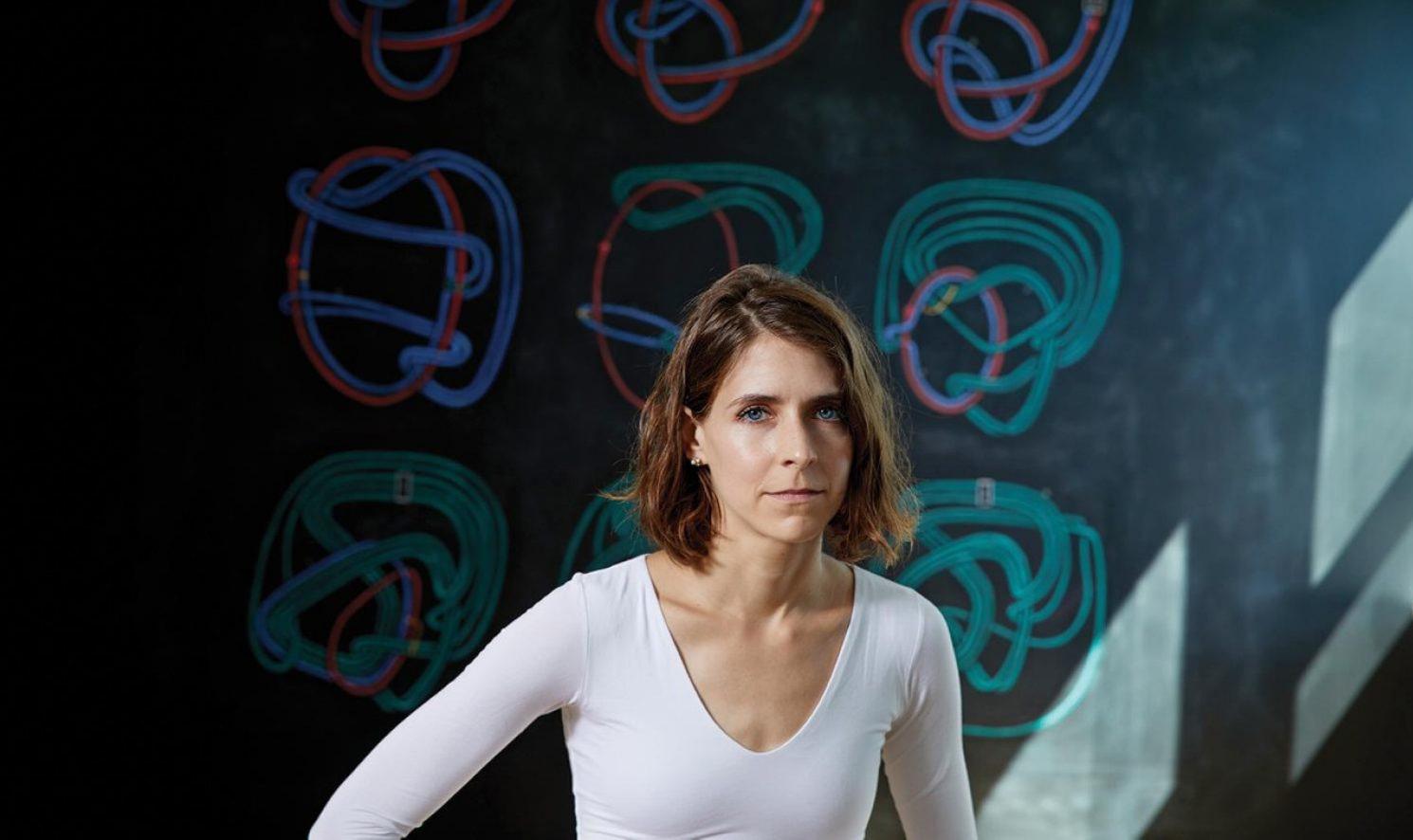
Photo: Kelly Davidson for Boston College Magazine
Honoring the Legacy of Dr. Martin Luther King Jr.
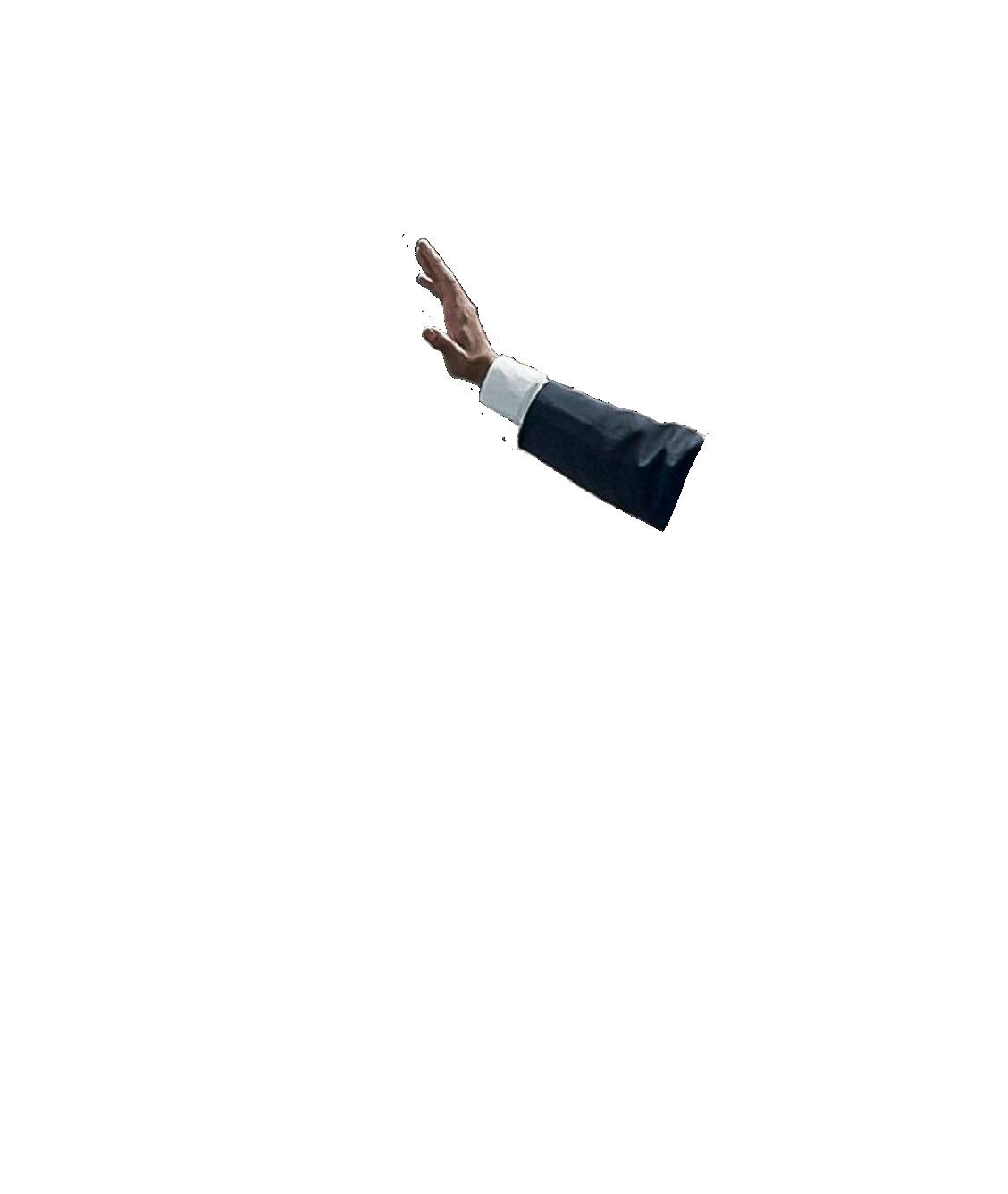
“Today, we gather to commemorate the life and work of Dr. Martin Luther King Jr.,” began Headmaster Brennan in virtual Hall on January 19. “We pause to recognize the contributions of this remarkable man and to consider anew the principles of justice, equality, and brotherhood—principles he pursued ardently and about which he spoke eloquently. While the United States today is blessedly different from the United States of Dr. King’s lifetime, racism and bigotry persist, and there continue to be opportunities for all of us to stand up for the values that Dr. King espoused. The prejudices and hatred that Dr. King worked so hard to eradicate remain in too many heads and hearts… As we affirm that Black Lives Matter, we also acknowledge that our work goes ever on—improving our individual relationships and attitudes but working on eradicating systemic racism, as well.”
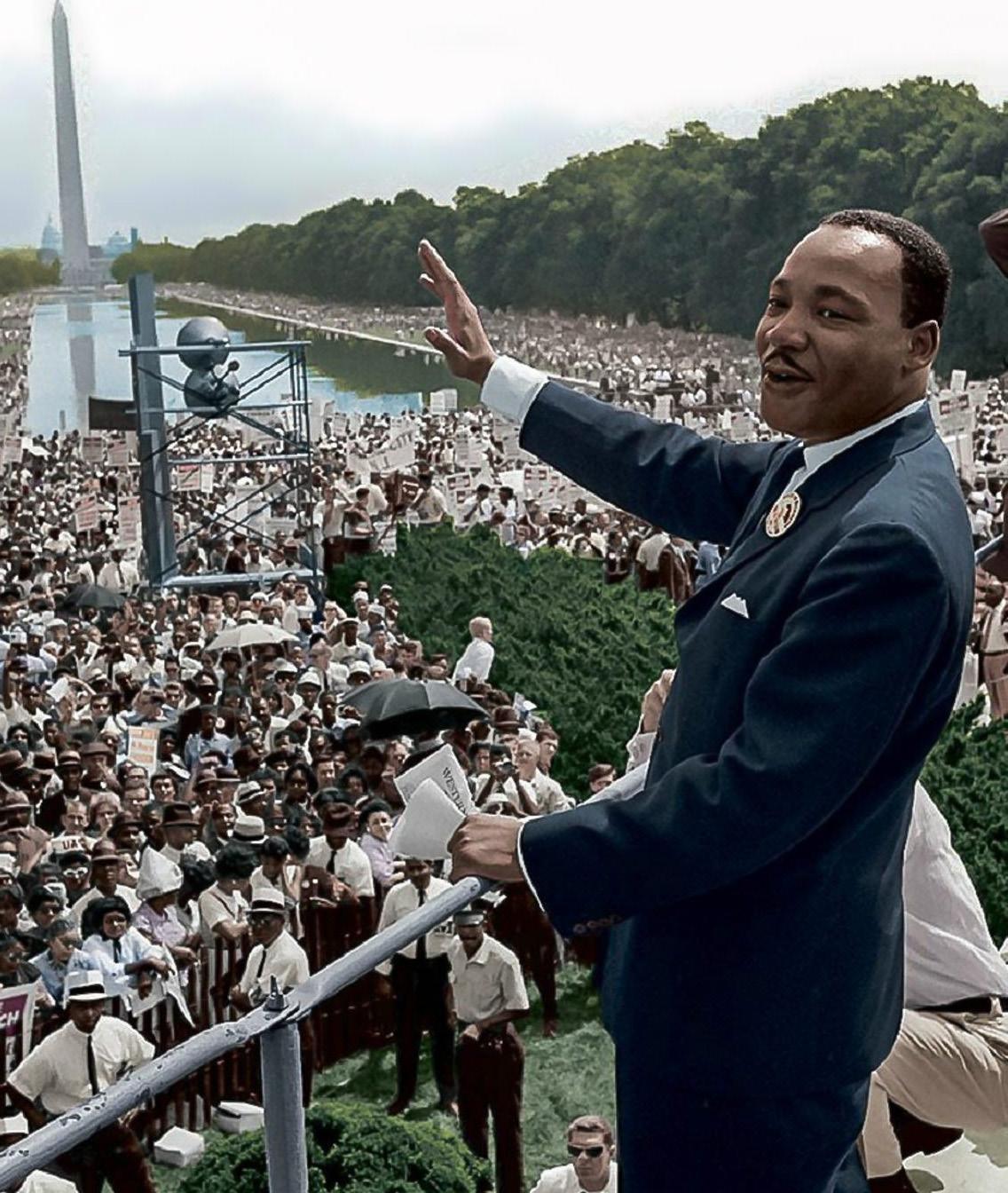
After Mr. Brennan’s introduction, Aydan Gedeon-Hope (I) read Dr. King’s “Letter from a Birmingham Jail.” Following the reading, Edozie Umunna (I) shared his own reflections on Dr. King’s letter, citing not only the context in which King wrote it—as a response to a letter from eight Alabama clergymen—but also the dynamics at play during King’s lifetime that persist today. (Read Edozie’s complete remarks on page 26.)
Eric Auguste (I) then read a very personal perspective on Bayard Rustin—the civil rights and gay rights leader and activist—which Eric wrote as his Senior Speech, as part of his English class. (Read Eric’s complete essay on page 28.)
The Hall included time for students, faculty, and staff to learn more about the hymn “Lift Every Voice and Sing”—long considered the Black National Anthem—through CNN’s interactive account of the song’s conception and context. Concluding the Hall was a virtual performance of “Lift Every Voice and Sing” recorded by RL’s Glee Club in spring 2020, which has been viewed more than 30,000 times on Facebook and YouTube.
“While Dr. King as a preacher believed in the power of the spoken word as a way to change people’s minds and hearts,” concluded Mr.
Brennan, “he also knew that significant change could only come about through action, civil disobedience, changing institutions, and reaching out to many different kinds of people. He knew the importance of acting on principle when words could only begin to tell the tale. Given the divisiveness and prejudice that openly persist in our country, our vigilance, activism, and principles are consequential; we still have work to do if we want to achieve the social equality envisioned so many years ago by Dr. King. This work is the responsibility of every one of us.” //

Reflections on “Letter from a Birmingham Jail”
by edozie umunna, class i
I’ve read MLK’s “Letter from a Birmingham Jail” countless times in my life, but I don't think I ever really understood it at its full depth until these
past two weeks.
When Mr. Brennan asked me to reflect on the letter, I approached the task with a certain confidence. I was familiar with the text. I knew what it was about. And most importantly, I knew what the letter meant to me.
But there was one crucial aspect of the letter that I failed to understand: the context. What I didn't realize is that “Letter from a Birmingham Jail” was actually in response to a letter from Alabama clergymen.
These men banded together to send a message to the imprisoned Dr. King, to address the recent peaceful protest he had taken part in, in the state of Alabama. The letter from the clergymen provided a whole new dynamic to my interpretation of Dr. King’s letter.
In their own words, the clergymen’s letter was an appeal for “law and order” and “common sense.” They believed they were now confronted by a series of demonstrations by some of their Negro citizens, directed and led in part by outsiders. They believed that these demonstrations were unwise and untimely. They went on to say that while hatred and violence have no sanction in their religious and political traditions, such actions or extreme measures incite hatred and violence, however technically peaceful they may be. They close their letter by urging their own Negro community to withdraw support from these demonstrations, stating simply that when rights are consistently denied,
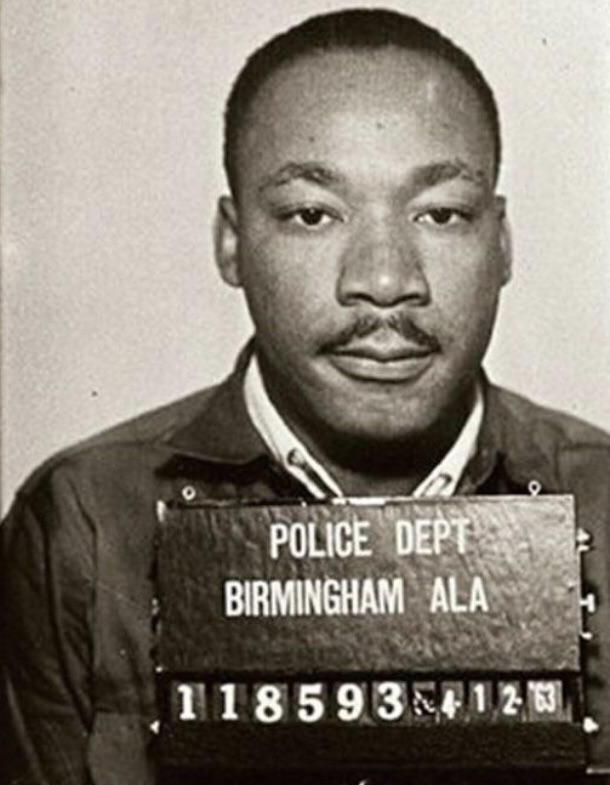
the cause should be pressed in the courts and the negotiations among local leaders, not in the streets. Should all this be done, they believed the Negro community of Birmingham would have taken steps toward a more unified city. Now, there’s a lot to be unpacked from the clergymen’s letter, but there’s one overarching point they touch on that I think is especially important to note—the idea of unity.
This was something that really jumped out at me, because I believe it has a particular pertinence to the United States at the moment. Through their words, the clergymen made clear that ending the protest in Birmingham was the only way in their eyes to establish unity in the Alabama town. Now, as we heard in the letter that was read, Dr. King pushes back on this idea, stating that the positive discourse that’s sparked by the protests is what will lead to a more unified city. My question is this: Why are purely peaceful protests somehow an attack on unity? Why is it that a movement consisting of nothing more than Black Southerners exercising their most basic of human rights causes a state of total division within the community? And the answer to that is this: Any attempt to disrupt the hierarchy of oppression will always be viewed as an assault on unity.
Dr. Martin Luther King is without a shadow of a doubt the most peaceful leader of the American Civil Rights Movement. As we see from his words in “Letter from a Birmingham Jail,” he wants absolutely no part in clashes, fights, or any other form of violence. And yet, his actions of raising a sign in the street, sitting at a diner counter are seen as divisive. It’s not because of any direct deleterious effect that his protest had on the people of Alabama, it’s simply the fact that he dared to tear down the strongholds of hate and to question the privilege for White Americans that made for his protest to garner such criticism from these clergymen.
It’s the same dynamic that made millions of Americans around the country tell Colin Kaepernick to stand up. The same dynamic that caused Laura Ingraham to tell LeBron James to shut up and dribble. The same dynamic that caused more than 100,000 Alabamans to cheer on as Donald Trump referred to protesting NFL players as sons of bitches. It’s the same dynamic that gives the U.S. government pause in punishing all those responsible for the attack on our Capitol to the fullest extent of the law. It’s all in the name of preserving our country’s unity.
If there’s anything I took from Dr. King’s letter, it’s this: an effective protest will always be labeled divisive by the oppressor. No matter how you protest, no matter when you protest, no matter where you protest, it will always be viewed as invalid by those whose position of power it threatens to dismantle. When your objection comes under criticism, you’re doing something right. But what Dr. King charges us to do is to push on in these moments. As he sat in that 6x8 jail cell, reading the demand from some of the most powerful White men in the state to stop his protest, he mustered up the courage to refuse their criticism. I encourage each and every one of you to do the same. Whatever belief you stand for, whatever cause you fight for, do not let criticism be the reason that your voice is silenced. And let’s hope that someday soon, those radiant stars of love and brotherhood will shine over our great nation once more. //
Thank You, Bayard Rustin
by eric auguste, class i
I want you to imagine something. Imagine you are lying awake in the middle of the night because you can’t sleep. The hum of the air conditioner fills the silence of your bedroom. You toss and turn, angry because you are unable to fall asleep. Your heart is beating
at a speed that feels almost harmful and your hands are clammy. You sit up because it is getting harder to breathe. In. Out. In. Out. You can’t back out now. Tomorrow, you are finally going to come out to your parents. Well, you would if you weren’t straight.
To so many people, coming out isn’t a milestone that they have to accomplish in their lifetime. Approximately 95% of all men identify as heterosexual. Ninety-five percent. Almost every single one of those people will never have to feel the terror of coming out. I am not one of those people. But I don’t want to focus on my story. Instead, I want to turn your attention to a different time. A time when someone like me, differentiated by their race and sexuality, would be looked down upon.
Over the next few minutes, I would like to introduce you to Bayard Rustin. A gay, Black man born in the year 1912, Rustin lived his life suffering many hardships, constantly being battered because of his sexuality and the color of his skin. However, that didn’t prevent Rustin from fulfilling the role of an esteemed Civil Rights Activist from a young age. By the end of this speech, I want every single one of you to understand why Bayard Rustin, in the face of great adversity, was a man of great courage and question why he isn’t as well known as he should be.
Before I begin talking about his role in the Civil Rights Movement, I want to give you some background about Rustin’s life. Bayard Taylor Rustin was born into an unusual family dynamic. He was born in West Chester, Pennsylvania, to a 16-year-old woman and with his father absent from his life. He was raised by his grandparents, believing that they were his real parents and his mother was actually his sister. In his teenage years, Rustin wrote poems and played on his high school football team, and according to a PBS article I found, there is lore that he staged an impromptu sit-in at a restaurant that would serve his teammates and not him. After college, to continue this
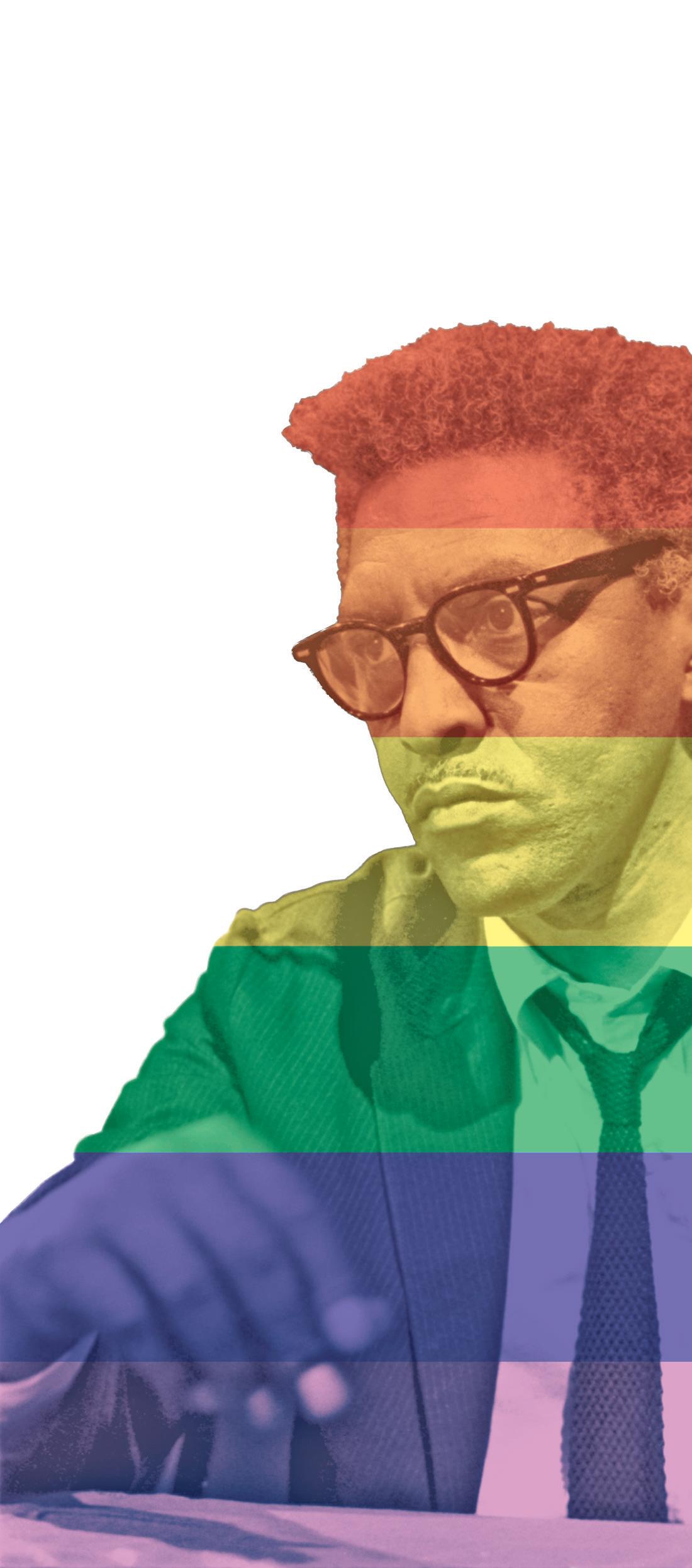
work, Rustin devoted himself to fighting for civil rights, and he participated in several groups that helped him further his goal. Rustin joined groups like the Fellowship of Reconciliation, the Congress of Racial Equality, and later he would join the Southern Christian Leadership Conference led by Martin Luther King Jr. Involved in these groups, Rustin traveled the country, speaking and inciting change everywhere he went.
However, in order to bring about these necessary changes, Rustin constantly threw himself headfirst into danger. Because of the color of his skin, Rustin was automatically put in dangerous situations by simply existing. Just like any Black person who lived during the early to mid-20th century, Rustin had to deal with the same challenges, like sitting in the back of the bus and being denied access to certain “White Only” businesses. I want to focus on one story I found that distinguishes Rustin as a man who put the sake of his people before his own safety. In an audio recording that was thought to be lost, Rustin provides the details of the day he realized it was necessary for him to come out. One day, Rustin boarded the bus and, like normal, he started to make his way to the back. On his way there, a white child playfully grabbed and pulled at the ring necktie he was wearing and was immediately scolded by his mother for touching him. From the recording I mentioned earlier, we know what was going through Bayard’s mind in that moment. Bayard said, “If I go and sit quietly at the back of that bus now, that child—who was so innocent of race relations that it was going to play with me—will have seen so many Blacks go in the back and sit down quietly that it's going to end up saying, ‘They like it back there, I've never seen anybody protest against it.’” Bayard’s revelation led him to take the dangerous path, on which he was arrested in order to preserve the innocence of that child as best as he could. But that wasn’t the only realization Bayard took away from that experience. In reference to his sexuality, he said, “It occurred to me shortly after that it was an absolute necessity for me to declare my homosexuality, because if I didn't I was a part of the prejudice. I was aiding and abetting the prejudice that was a part of the effort to destroy me.” By coming out and being open about his sexuality, Bayard once again chose the route of most discomfort over the easy one to fight against injustice.
So far, I’ve told you the “how” and the “why” Rustin became an effective civil rights activist. That brings us to what he actually did. I wouldn’t be doing this man justice if I left this important piece out. Bayard was a key organizer of the March on Washington in 1963. And not only that, but he was also one of MLK’s key advisers and strategists. As you may already know, the March on Washington is most famous for Martin Luther King Jr.’s “I Have a Dream” speech. So why is it that the man behind the movement, Bayard Rustin, is barely given any credit? Well, during the twentieth century, being gay was not exactly praised. In fact, Rustin was often ostracized from his own community of blacks because he was so up-front about his sexuality. And, there were no legal protections for gay couples, making it tougher for people like Rustin and his partner, Walter Naegle—whom he had to legally adopt in order for them to have a relationship. Taking these circumstances into account, it is easy to understand that Rustin often didn’t take the spotlight. To give you an example that might shock you, Martin Luther King and Rustin had a somewhat “troubled” relationship. Rustin began working with King in the mid 1950s, lending him support in his boycotts and teaching him the ways of Gandhi and peaceful protest. However, in 1960, even though the two men worked closely and made great progress, the tension of Bayard’s sexuality caused problems between them. Ready to lead a march outside the Democratic National Convention that year, MLK was given an ultimatum by a fellow black leader: get rid of Rustin or he would tell the press that he and King were gay lovers. To my surprise, MLK called off the march and pushed Rustin away, causing him to resign from the Southern Christian Leadership Conference. On the subject, James Baldwin—another gay Black man living in the same time period—wrote that King “lost much moral credit … in the eyes of the young.” Even so, Rustin kept pushing on and eventually planned the March on Washington he had been waiting for, all without complaining about how he was treated along the way.
Do you remember that night I had you imagine? That night was my reality. That was one of the hardest times of my life. However, I am not asking for sympathy. I simply want you to understand that my experience is not the default. Consider what it was like for Bayard Rustin 100 years ago. People like Rustin didn’t and still don’t get the luxury of living easy lives because of a trait they can’t change, and yet, he made it his mission to change the way people viewed race and sexuality. The world has taken big steps in the right direction, but it’s time to stop letting heroes go unnoticed. Thank you, Bayard Rustin, for all that you’ve done. //
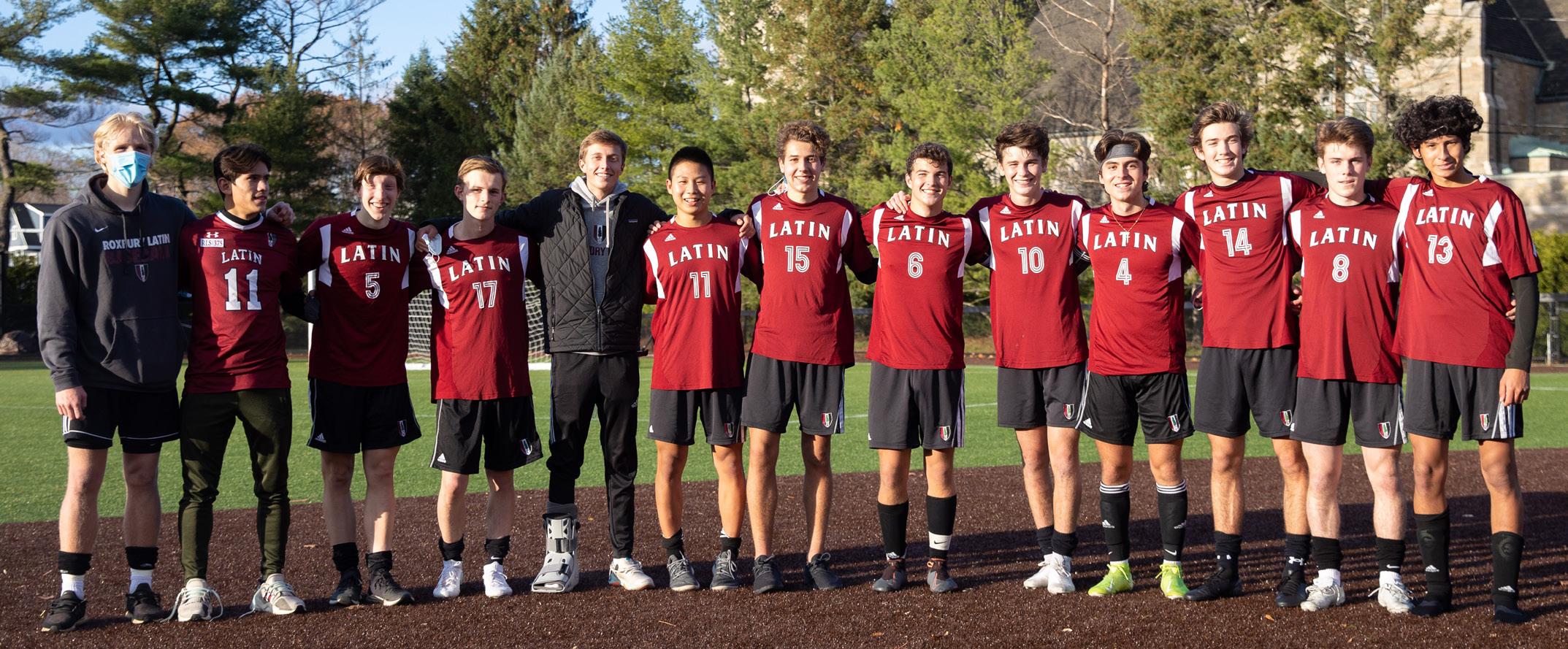
Varsity Soccer seniors (left to right): Brady Chappell, Miguel Rincon, Thomas Gaziano, Will Specht, Max Hutter, Ethan Chang, Alex Uek, Alex Fuqua, Byron Karlen, Peter Frates, Ben Brasher, Sam Morris-Kliment, Esteban Tarazona
Reflections on a Season Curtailed by COVID
by peter frates, varsity soccer co-captain, class i
This past soccer season was difficult and different, but I’m proud of our team for the way that we stayed positive, hopeful, and dedicated throughout the fall. Over the summer, Coach Sugg informed the team that we could not attend our preseason camp. This was one of the biggest disappointments of the year. Over the four-day stay each August at the Williston Northampton School, the team spends countless hours together, and improves quite a bit through both practices and games. From each of my four years, I have great memories of time spent with the boys at camp. As a captain last season, the time was crucial for getting to know the new players on the team, and building chemistry across all the grades. While this year was extremely different, the team’s level of commitment and hard work was not.
Instead of practicing and playing five days a week for almost two hours a day, the varsity team was allowed to practice on Mondays, Wednesdays, and Fridays, for an hour and a half. Knowing every minute we had on the field was a gift, there was a special energy at our practices this fall. Our coaches Sugg, Solís, and Thornton did an excellent job making the best of our limited time on the field. As a team, we are so grateful for the sacrifices that the coaching staff made to help make this season possible. Though the divided cohorts and grade level distinctions limited the number of players at each session, the coaching staff was innovative each week with new drills and games to keep practice at a high tempo. I found myself, as I expected, energized and excited to be going to school each day that we had practice, often waiting for the final bell to ring. One positive about the reduced days for practice was that on our two days off, we had ample time to work out on our own.
In mid-October, the team group chat was in a frenzy. We had just heard that two ISL teams were scheduled to play a game that weekend! Everyone was envious, and we all hoped for a way to get in on the action. Thanks to Mr. Teixeira and Mr. Brennan, we joined a small, five-school consortium of ISL teams to hold inter-school scrimmages on the weekends. This was a turning point in the year. From that point on, we practiced with a renewed sense of urgency, as we had the possibility of a game that weekend! In our final match, we beat a talented Belmont Hill team 1-0—an amazing way to end our RL soccer careers.
After the heartbreak of last year—when we were snubbed from the New England playoffs—we were disappointed this year not to have the opportunity to avenge ourselves. But, I am confident that the skill-based and tactical work that we put in this year will undoubtedly help the team follow the success of the 2019 team in the fall of 2021. //
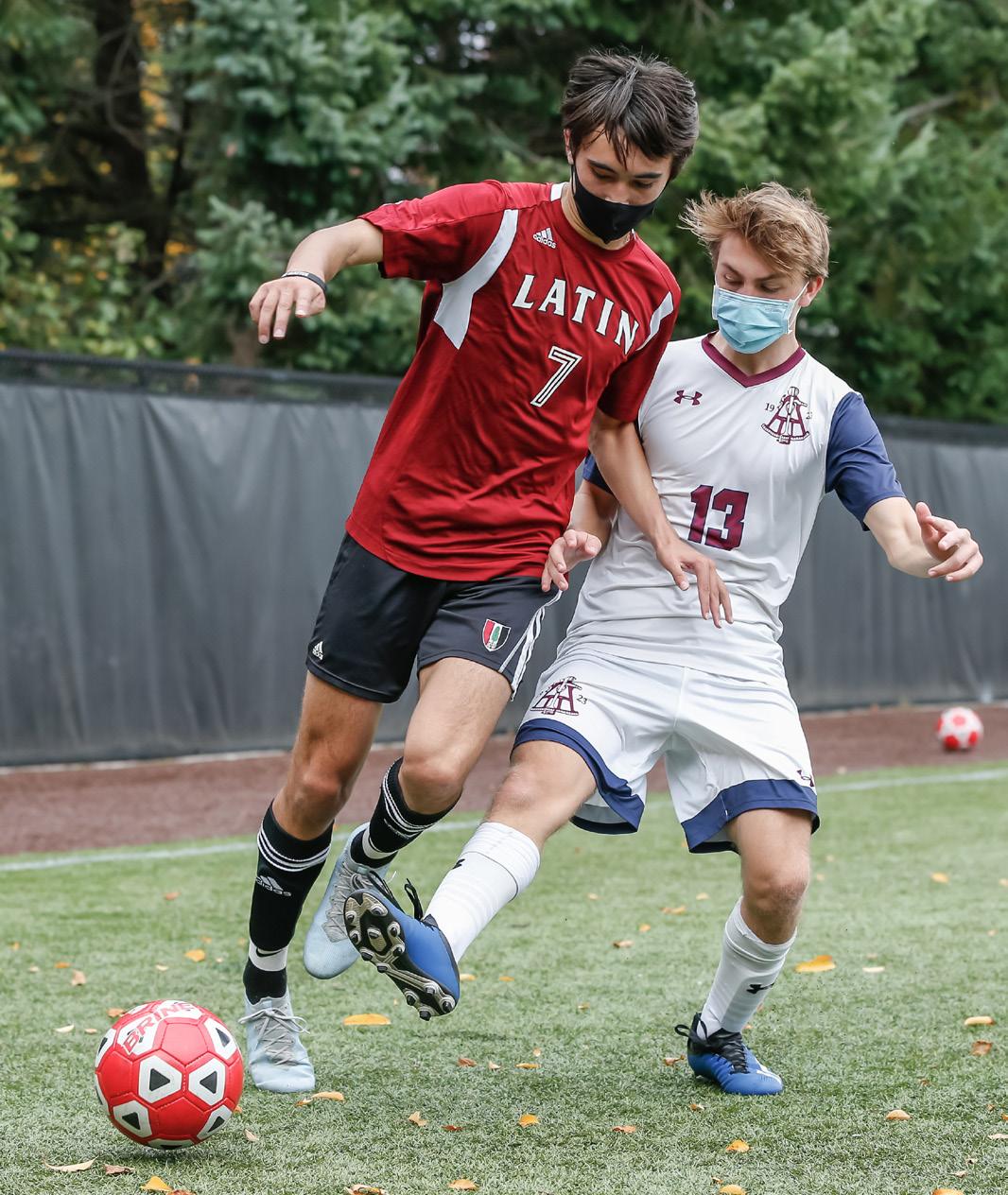
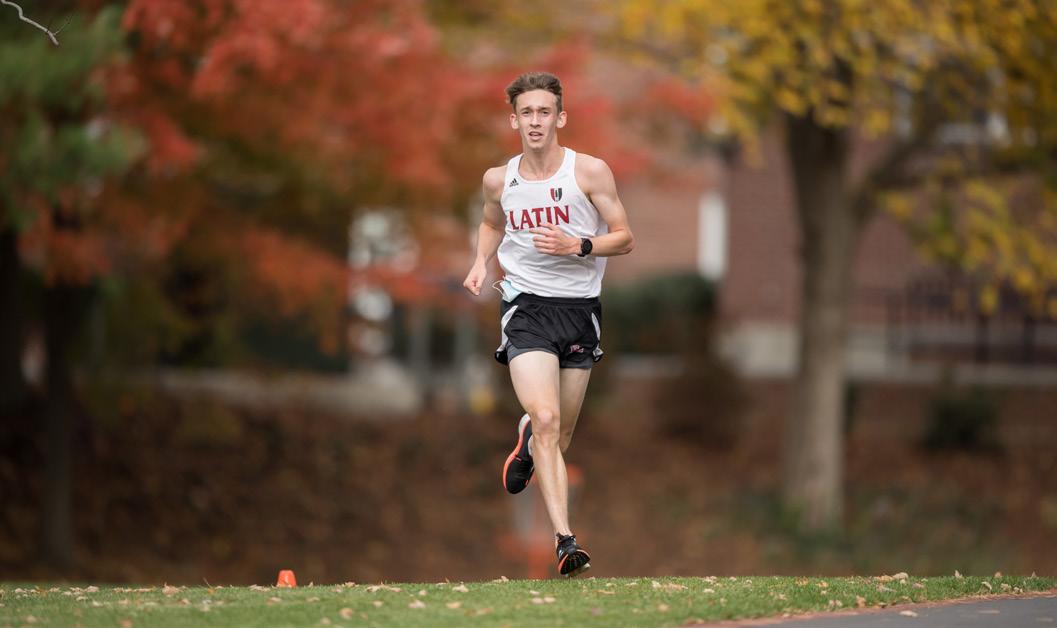
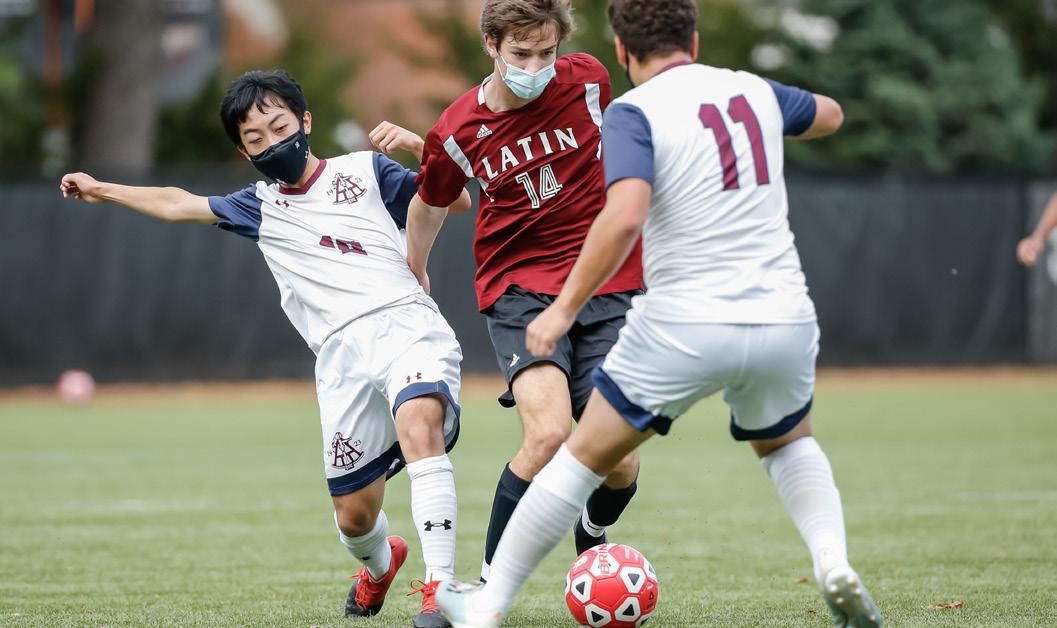
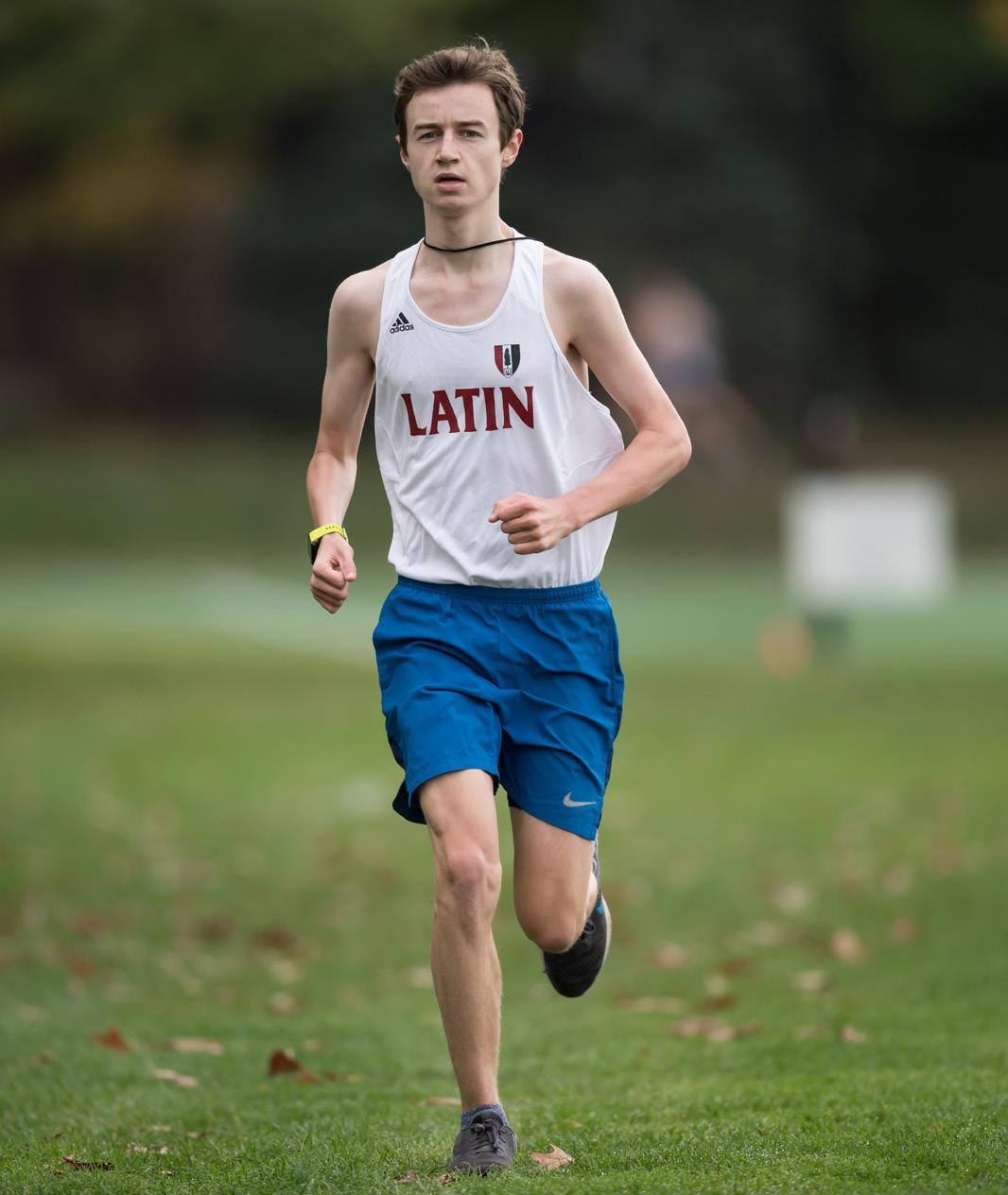



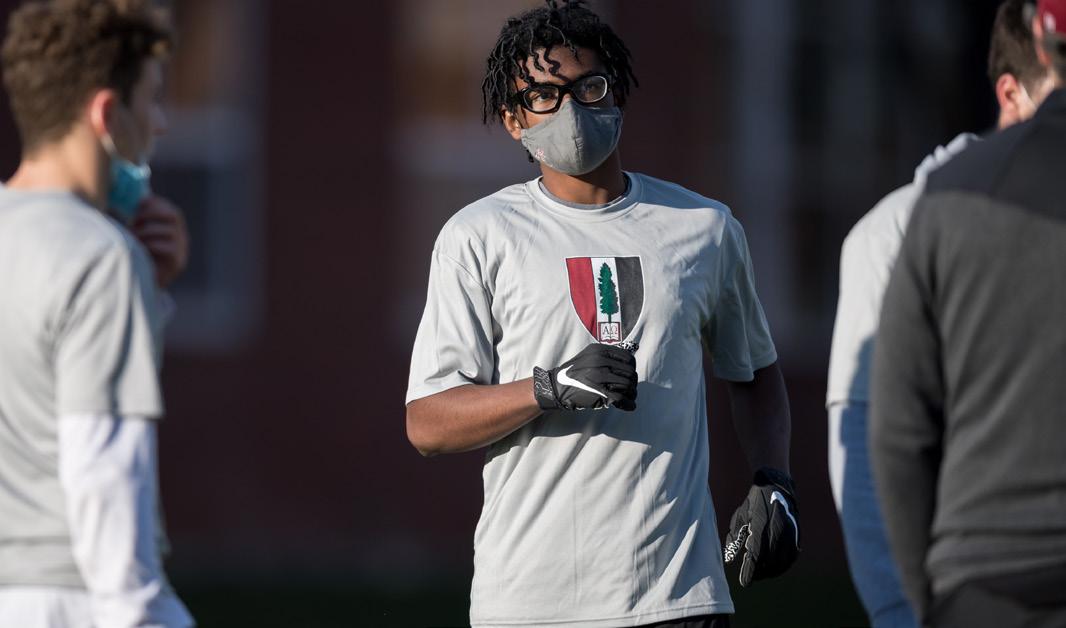




Varsity Football seniors (left to right): Will Hyde, Beau Keough, James Gillespie, David D'Alessandro, Aaron Shlayen, Frankie Lonergan
How Do You Play Football in a Pandemic?
a season’s recap by head varsity coach mike tomaino
Football is unique in the sense that a large aspect of the game is contact—blocking and tackling. In many ways boys who play football enjoy those aspects of the sport, some may even yearn for the contact. It’s difficult to imagine a fall season without those key components of the game, but over the course of the fall, Roxbury Latin’s football team embraced new guidelines and continued to develop individually and collectively.
With the uncertainty of competition, and the strict nature of the cohort system, our challenge this fall became how to develop our athletes and also get better as a team. Furthermore, how would we do so with significantly less practice time? Our overall theme this fall was: Control the controllables. As a team we remained focused on putting forth a great attitude and great effort every day. We focused on becoming a faster, quicker, and more fit team with specific speed and agility drills. As we adhered to guidelines and worked to mitigate the spread of the virus, we began these drills completely distanced and individually. As competition became more likely, a new challenge presented itself: How do we continue to get better for the future, while fulfilling our athletes’ desire for competition? On top of that, how do we do so in a safe way? Our solution was to continue to incorporate the fitness aspect of practices, while adding in some individual skill work. Over time, we began to add more football-specific team activities, such as implementing and running our offensive and defensive playbook. Fortunately, we had some new students join us this fall, so this gave us an opportunity to introduce schemes to newcomers while serving as a refresher for returning players.
Toward the end of the fall, we were given the opportunity to compete against other schools, which was a relief for our athletes. At the end of the day, they love to compete, and while all the other stuff is important, playing in contests was at the forefront of their minds. Due to cohorts, our team was split into two “teams,” which presented a unique situation in which one of the cohorts had to have a “quarterback by committee.” Nevertheless, we played 7-on-7 games, which consisted of only skill position players—no pads, and only passing plays. Think of it as football without linemen and without contact—without blocking and tackling, the two major components of the game. While it wasn’t “real” football, it was competition and a step toward normalcy, which we all certainly appreciated. For our coaches and players, it was certainly a disjointed and unusual fall season, but as the theme went, we could only control how we reacted to the situation that was presented. Like our community members always do, we put our heads down and went to work. //
Be Both Tough and Tender
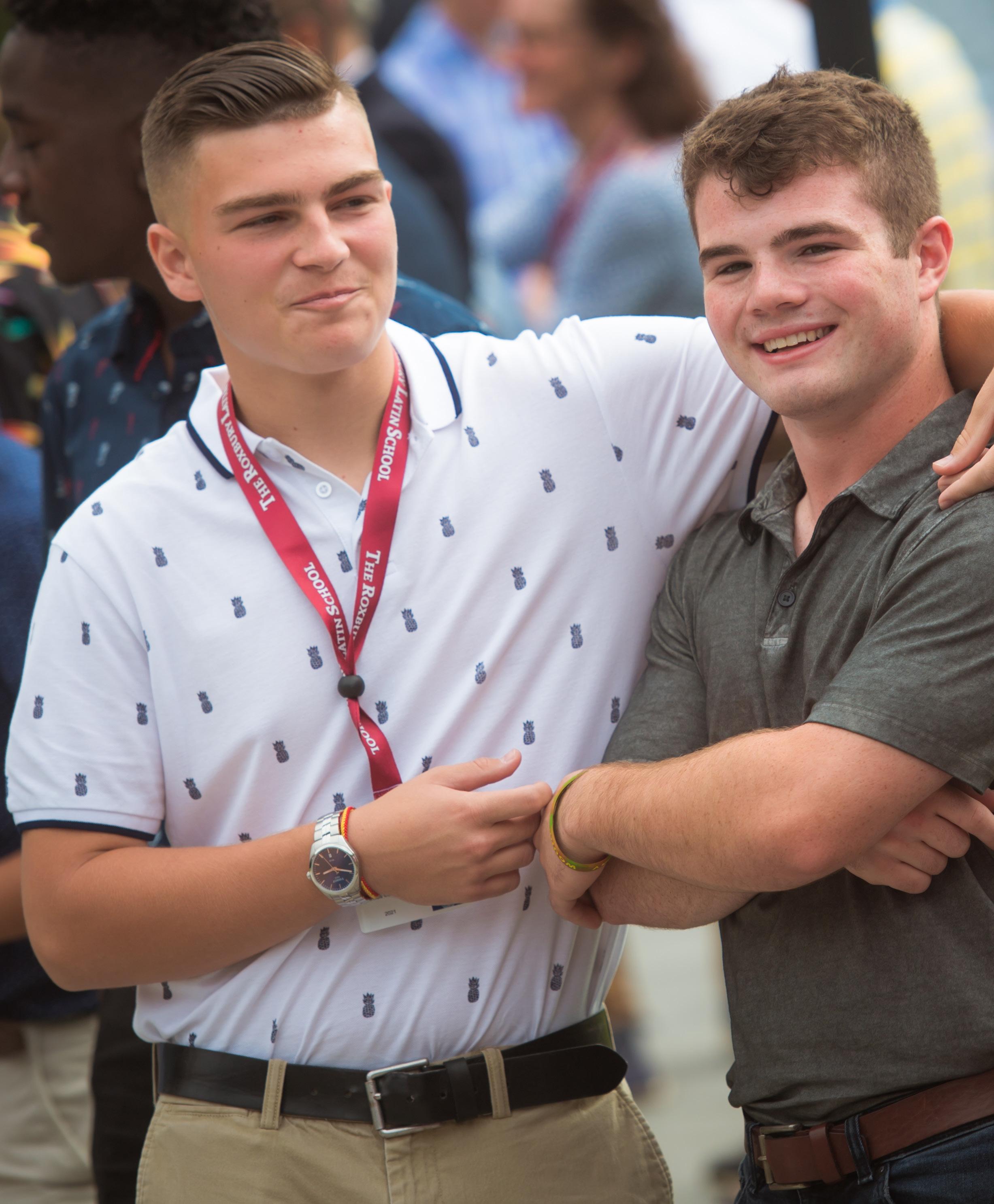
Headmaster Brennan Opens the Winter Term
Be Both Tough and Tender
I was outside the temple where the funeral of the beloved mother of one of my students had just taken place. I waited around to greet him. I was quite moved by the service. The mom was a wonderful person; she had long been separated from her sons’ father and had been battling cancer for the past six years. The boys’ remembrances of their mother were touching and especially meaningful given they in essence were signaling that she had taught them well, but that now they just had each other. I responded to my student with a hug and more tears. And he was crying, too.
This boy of 15 was a much admired scholar-athlete at his school. He exuded confidence and had been consistently elected to the presidency of his class. He had it all going for him. He was smart, personable, balanced, and a friend magnet. Throughout his young life, however, he recognized that his family structure was different from most other boys’. With an inattentive father, he was left to rely yet more than usual on the love and care of his mother. She was a ferocious protector of her three cubs. And now, she was gone. What would they do? What would he do? In fact, living among various relatives, he blazed through high school starring in three sports and earning honors grades. He went on to a prestigious college and is a successful man with a wonderful family of his own today.
“You cry, too?”
In fact, I do cry. Not always, but sometimes. And I always have. Thankfully I had parents and grandparents who didn’t mind shedding a tear acknowledging some overwhelming emotion. I am part Irish after all, and some say our bladders are located just behind our eyeballs! I cry when I am sad. I have cried when I was hurt or in awful pain. But I also cry when I am overwhelmed with joy. When someone I care deeply about does something extraordinarily kind. Or expresses love for me. I also have cried when I am overwhelmed with something that is exquisitely beautiful. Thankfully I am not riddled with the question that I believe
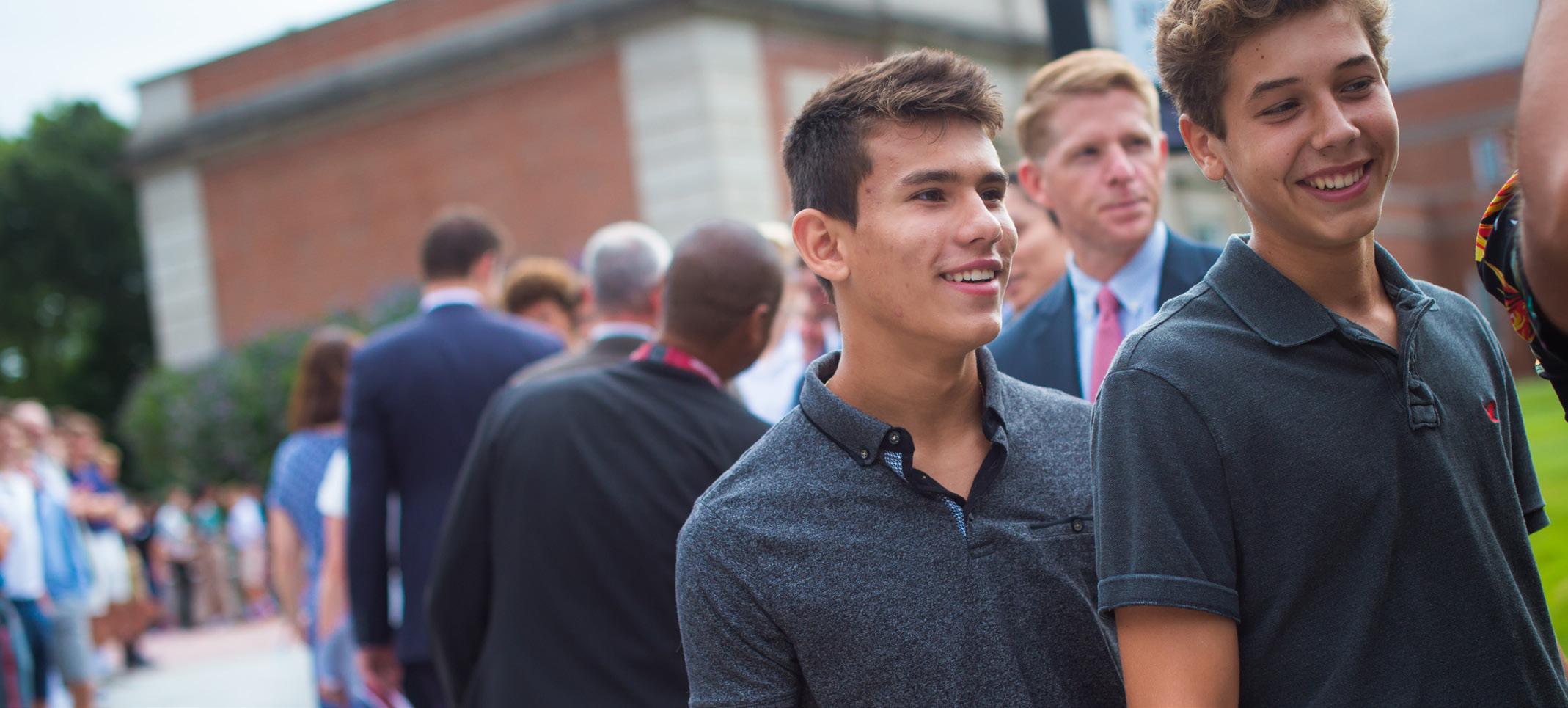
too many people are, especially too many men, and that is “Should I cry?” “What will people think of me if I do?” “Will I appear weak if I cry?”
Today I am using crying as a pointed example of feeling, and expressing feeling. How often we have been in situations in which we find ourselves wanting for words. It’s cliché, I suppose, to say that words are inadequate, and sometimes they are. One of our goals as a school is to teach you how to find the words to describe what is true and deserves to be said. But sometimes even the specific, powerful words we teach you are not up to the task. Sometimes what we think, and, especially, what we feel cannot be captured in words. Since humans have roamed the earth they have searched valiantly for ways in which to express themselves. Sometimes with words—spoken, printed in books, attached to valentines, or scrawled on cave walls. But other times with expressions, with hearty laughter, or hugs and kisses, or even by striking someone. Playwrights and novelists and composers and poets have left us with countless reverberating evocations of their feelings. Shocking. Inspiring. Reassuring. Provoking. Affirming.
Many works of art are intended to move us, to find the spot deep within in which feeling resonates. As I get older that place often has to do with days gone by, and places I have loved, and people I have loved who are now gone. Smells. Tastes. Sounds. I want to be open to those sensations. They remind me of remarkable people. Of remarkable times and places. They remind me of my younger self. They remind me I was loved. They strike a nerve. They remind me I can be tender.
Often the rhetoric of our school goes whizzing by. Uttered but not felt. Today I want to pause on a phrase that can be found in our publications and on our website, but on which we rarely dwell. I say it when we are hosting prospective students and their parents at open houses. Others of us utter it, too, as we describe our school: “We want our boys to be tough and tender.” Tough and tender. Today I shall dwell on that unlikely pair.
An Exemplar
Several years ago there was a boy in the school who ended up being quite memorable. Through the admission process we knew that he was poorly prepared for the academic rigors of RL. He had had an unfortunate start to his life with a dysfunctional family and schooling to that point that had neither taught him all he should know at his age or demanded much of him. But as we got to know him, we saw something special in him. A spark. Desire. Openness. We accepted him and the boy could not be happier. He had no idea what he was in for.
The happiness the boy felt in anticipation of his starting RL dissipated on about the second day of school when he realized he was clueless about how to do the kind of school that RL was demanding of him. He had never done a minute of homework in his life; his classmates at his old school couldn't care less
for what they were all doing; and he had never felt stretched, challenged, inspired, or, for that matter, affirmed. At RL, all that changed. The work rolled over him relentlessly. He didn’t know how to start. He couldn’t put three sentences together. Kids’ hands were flying up in every class while he was still trying to understand what the teacher had asked. He got the sense that everybody else knew the inside secret. And that he was an outsider, woefully unprepared for this assault. He was bloodied.
Every report meeting which the faculty holds at the end of each marking period, this boy was discussed. Some faculty rolled their eyes. Others explained all they had done to help this boy to succeed. His advisor reported on what he had tried. Everyone knew that this boy was unlikely to make it. He was over his head. And despite all the extra help—tutoring with each of his teachers and with older boys every free period and after sports—there was a feeling that this poor boy would grow weary and, understandably, give up. The first two summers he was at RL were booked with all kinds of extra support—summer school and more tutoring. This boy had hardly a minute to play. To hang out with the kids in the neighborhood. To bolster his reputation among a different group that he also cared about.
At several points along the way, the adults who wanted him to succeed so badly wondered if they were in fact acting cruelly toward this poor kid. Someone who had been involved in the admission process asked if the “spark” that had been seen early on was, in fact, being snuffed out. Another teacher said, “I submit that it is burning brighter than ever. This kid wants it. He’s tough.”
He was tough all right. With no academic role models at home, he was flying blind. But he was determined not to squander the chance he had been given. He was determined to make up for his previous seven years of school in which he was asked to do little. He was determined to put himself in a position to take advantage of all that RL had to offer— including setting him up for a very different life from the ones members of his family had available to them for generations. Round about Class IV, the D’s and C-minuses began to disappear from his report card. He emerged as one of his class’s best athletes. And he decided to try a few more things— debate, Glee Club, theater. Some worried that he would be needlessly distracted. In fact, he became more organized, more energized. In each of those areas, this boy’s potential began to emerge. He was tough. He could do it. By the time this boy was a senior, he had amassed an all-honors record and was a leader of various aspects of school life. He was tough all right. We asked a lot of him. We did not give up on him. More important, he did not give up on himself. And whatever we asked of him, he asked more.
Tough Guise
When I was growing up, back in the Dark Ages of the mid-20th century, we had plenty of role models for what it meant to be tough. I loved a TV show called The Untouchables, which chronicled the lives of gangsters and their inevitable demise at the hands of astute, earnest, good-looking FBI agents. The gangsters—part of what I later learned was an extensive, intricate network of crime families throughout the U.S. called the Mafia— were unattractive human beings; they were ruthless killers, not seeming to mind destroying who or what got in the path of their seizing for themselves whatever it was they wanted. They were ceaselessly self-interested. The allegory of the gangster morphed into something different when The Godfather movies came along. In these film classics the Corleone family was portrayed as three-dimensional, with characters who went about their sinister business in subtler, more sophisticated ways. Often the dirty work was accomplished by underlings while the leaders of the extended family “kept their hands clean,” although one always had the idea that any one of the most effective leaders could at a moment’s notice resort to a more primitive self in which he effectively, violently and physically could do in, likely kill, an adversary. Last year, another wonderful movie appeared, The Irishman, in which the great Robert DeNiro, through his character, reminds us that well into the 20th century an underclass of people benefitted from their intimidation of more upstanding types.
What the more modern depictions of these gangster characters showed was that they were not just tough. They were also human, and to be human meant that they had feelings, that they cared about particular other people (usually their own family members), and that when they harmed, or even killed, they were sometimes capable of remorse. Masculinity, the essence of being a man, however, was always defined by being a certain kind of tough. It seems quaint or
even absurd now to be reminded of the role models we had in the mid-20th century. I can talk about them because they constituted many of my cultural, public reference points. The pervasive sense of what it meant to be a man in those days had to do with physical capability—to be athletic or strong was even better, as was a capacity for tolerating pain, and never showing emotion or feelings. Men were judged by what they did, not usually by what they thought or felt. Of course, there were public figures, Presidents or other elected officials, as well as certain prominent intellectuals, teachers and writers who were respected for their ideas and capacity to reason and to wield language, but they, too, usually did not convey emotion or betray any weakness. It goes without saying that most of these role models were also white, of European origins, and straight. That of course was the ideal, and those who were not those things felt even more challenged.
The George Bailey Man
Long before television became a constant presence in our lives, the movies wielded an outsized influence on shaping culture, and, especially shaping people’s ideas of what it meant to be a man or a woman. The archetypes presented on film affected countless Americans, and boys and men inevitably were motivated to emulate the usual masculine role models they saw in countless cops, cowboys, soldiers, and successful businessmen. These role models were often one-dimensional, usually tough enough but not very tender. Over the holidays I had occasion to watch again a Christmas classic film, It’s a Wonderful Life, a movie that offered a different perspective. The protagonist is George Bailey, who operates a familyowned bank, but is victimized by the incompetence of a fellow worker and relative and the greed of the town’s miserly, mean, most powerful citizen. There are plenty of lessons suggested by this story, including the possibility of divine intervention during George’s lowest moments, but, also—and in the spirit of what I talked about in the Opening of Fall Term address— the force of community. In effect, in a response to George’s lifetime of kindness, his fellow townspeople rallied around and figured out a way to save the bank and to save George. In the concluding scene of the film, George is seen weeping tears of joy and wrapping his children in his loving arms. George seemed temporarily tough and, at the end, mostly tender. Though this was a popular movie in its time, I don’t know to what degree George, played by James Stewart, a “different” kind of man had much impact on the cultural biases about what characteristics were expected and celebrated in a man, a real man. But there he was. He was seen unfortunately, I believe, as a novelty, as not the kind of man one would ultimately want to be: he made mistakes, he signaled despair, he cried, he was indebted to others, he loved and was loved.
Because you are boys, real boys, from time to time we should step back and consider what men—what real men—you are growing into. Tough and tender. What does it mean for you?
These days, I hope, we are defining toughness differently. No longer are we expected to be like gangsters or teenage thugs. Our signals about toughness don’t come from idolized movie characters or even the actors who played them. We search differently, desperately among the diverse media available to us and long for fictional characters, or even live people, who embody character traits that we would choose to honor. For our purposes today, I will not cite these potential influencers but remind you of what we mean by being “tough.” Thankfully, our understanding of that term and our capacity for embracing it has to do with the realization that to be tough does not require that one not be tender. Not only are both possible; both are preferred.
Tough
To be tough these days, for my money, means to have grit. How often have you heard how important it is to persevere, to show resilience, to suck it up and move forward? All of us suffer through disappointment. We lament not getting our dream job, or finding our ideal partner, or making the varsity team, or gaining admission to a prestigious college. We could feel sorry for ourselves. We could blame someone for the unfairness of things. We could wallow in self-pity and imagine that it’s not worth noting an ideal and working hard to achieve it, if we are not rewarded by getting it. We might as well quit because the deck is stacked against us. Given what we have experienced, nothing will ever change, and we will always be disappointed, victimized, screwed.
Or we could imagine our place in the world another way. We could resolve to do things differently, to continue to
work at getting better at something, or finding a different path. We could engage others hoping their perspectives and talents will help us be better at what we wish to do. We could be undeterred by disappointment or results we didn’t want to have. We can try, try again. We can develop different strategies. We can work harder if that’s what it seems is needed. Or we can work smarter. Or, in a decision that some would contend was selling out, we could decide to devote our talents and industry elsewhere. We can change course. And pursue other passions. And go after other goals. Someone who is resourceful, someone who is optimistic, someone who perseveres, someone who withstands disappointment is tough.
Tender
Despite the example I gave at the beginning of my talk today, I don’t believe that to be “tender” means that you always cry. I used that example of what I believe to be the courage of acknowledging authentic feelings. But to be tender is not always about that dramatic result; in fact, it rarely is. To be tender does not mean that you are sensitive, that you are hurt easily, or that you wear your heart on your sleeve. Rather, I think, to be tender means to identify authentically and sympathetically with others. It’s one thing to own our own feelings—to allow our own feelings to be named and expressed. But it seems more important to provide affirmations for others as they are experiencing their own selves—perhaps enduring grief or disappointment or great joy. Empathy is an elusive, too often misappropriated quality these days. But to walk in another’s shoes, to feel his or her pain, to acknowledge another’s philosophy of life, sadness, satisfaction, frustration, or joy suggests an outwardly looking view of the world in which each of us is not exclusively tuned in to each of our own situations—our psyche and emotions—but rather is attuned to others. And as family members, friends, partners, co-workers, neighbors, countrymen, or fellow humans our tenderness is manifested in the degree to which we love others—caring for them and about them, suffering their agonies, supporting their dreams, offering reassurance and a hopeful vision. What has allowed us to be tough, also allows us to be tender. The toughness requires that we act; the tenderness suggests that the act signals that we care, that we feel, that we want to help. To be tender means that we allow ourselves to be vulnerable. And to honor others’ vulnerabilities as well.
Managing the Pandemic
So much about the past nine months has required us to be tough and to be tender. We have had to withstand dramatic alterations to our lifestyles. We have had to endure separation from ones we love. We have had to adjust to new rhythms in our lives. We have had to live with the spectre of possibly getting sick, of possibly dying, or of losing people we love to the same fatal conspirator. We have had to do without countless pleasures that are possible thanks to boundless freedoms and abundant resources. We have had to be tough.
We’ve also had to be tender. To reach out. To give generously. To suffer through others’ illnesses and deaths. To forgive more quickly. And to love more freely. No one has combined these traits of toughness and tenderness more compellingly over the past nine months than our healthcare workers who have relentlessly cared for our sick loved ones. They are tough to put themselves on the line, enduring long hours, and tempting the fates in regard to their own health. They scramble and strive to save lives. Because families cannot gather to support their loved ones, healthcare workers have had to take their places comforting their patients, caring for them until the end, and loving them best at the moment of their deaths. They have been tender. They have been tough and tender.
Birth
Finally, today we begin a New Year, and not long ago ended another. As the Queen of England would say, our “annus horribilis” is over. But in taking stock, in making resolutions and in anticipating with hope what is to come, we are always also aware of our existential beginnings and endings—our personal Alphas and Omegas.
Though it was a long time ago when I was present at a birth, I know what a dramatic moment it was. You see I was there, but I wasn’t doing much of the work. My mother was. Because I am a man and because I have not been blessed with children of my own, the only birth I have witnessed was my own. But I have heard
from plenty of my friends that the process of birth is the most dramatic, traumatic, exuberant experience of their lives. Life is given. Life comes into being. But in order for that to happen, the mother endures an unspeakably painful transformation. Millions of mothers deliver children every year. It seems to be taken for granted. But each of those mothers exhibits toughness in enduring pain, persevering, finding strength, willing life, delivering the baby. Each is tough. And, in her offering life to the newborn, she is offering her unconditional love. She is tender. She is reassuring. She is caring. She is supportive. She is loving. She is tender. She has been tough and tender.
Death
The joy that accompanies the birth of a child is matched in apprehension and agony in the death of a person. I was present for the deaths of both my mother and father. The death of anyone, and especially the death of someone you love deeply, requires distinctive strength. It requires strength from you as a witness to your loved one’s ordeal—it requires you to be focused, positive, affirming. It requires you to be tough. And it requires you to be kind, to be sweet, to be reassuring, to be loving. It requires you to be tender. All that is required of the caring bystander cannot begin to rival what the dying person is going through. Each of us will die. Millions died last year and millions will die this year. We cannot know when our time will come. And we cannot know what it will feel like. But I have experienced people I deeply love being tough and tender at that imminent moment. It’s almost as if the muscle that was so well exercised in life—the will to be tough and to be tender—finds its most profound and final expression at the moment of death. I knew my father was afraid of what was happening to him, of the unknown that would follow. And as he valiantly struggled for his last breath, I got the sense that he was channeling all the discipline, hard work, sacrifice, and challenged trust into that final moment. He was tough. At the same time, it almost seemed as it always was: that his greater concern was for me and my brother and that we not be sad, that we not be worried, that we could go on and live lives of purpose and hope. He was tender.
Tough and Tender at RL
While it is not usually a matter of life and death, you exhibit toughness by persevering at RL through seemingly endless days with outsized demands of you physically, intellectually, emotionally. As I have said before, I do not know if at your age I would have had the strength to push through the countless tough times and taxing demands that RL represents. You seem to know that you can do it, and surely show that you want to. And somewhere within us there is the faith that whatever we suffer now will be in service to greater goals realized later, and, in part, the result of what we have been trained to withstand— with focus and determination and without complaint. Additionally, you are often tender. You dare to give evidence of being moved—at the Glee Club senior concert, at the end of a memorable athletic season (whether in the waning moments of a victorious or losing contest), in the way you reach out to reassure a down classmate, in choosing not to boast of an accomplishment—like a college admission—because that might be hurtful to those whose results were less sunny, and in countless other moments when, usually privately, you express discouragement, sadness, hopelessness, doubt. You also are spectacular at signaling a concern for a classmate who himself is on the brink of despair. You are tough in your willingness to make the classmate mad by reaching out to a helpful adult, but appropriately tender in your eagerness to right a sinking vessel, to save a friend’s life.
When we say that RL boys are tough and tender, we are not saying that each one of you is as tough or as tender as you are going to be, or as you would ideally be. As with all things, we are works in progress. Our aim is in the direction of becoming our best selves. And these qualities would contribute unfailingly to the realization of lives lived with purpose, with conviction, with compassion, and with effect. Having made the case for why it is best to be tough and tender, I not only hope that you will be both. But I give you permission to be that very thing. On the threshold of the New Year, what more could I wish you than that? //
Headmaster Brennan delivered the Opening of Winter Term Hall virtually on January 5.
Historic Election A Virtual Founder’s Day for a
Historic Election
On October 29, students and faculty gathered not in Rousmaniere Hall, but over Zoom, tuning in from home for an unusual—but edifying—Founder’s Day celebration. In this historic year, with a consequential Presidential election forthcoming, the day’s programming focused on various elements related to the election process in the United States—both in this year, and in decades past. Topics ranged from the Electoral College to polling, from the 19th Amendment to running a campaign, from the right to vote to what to look for on Election Night in 2020.
The day began with a pre-recorded rendition of “For All the Saints,” featuring the vocals of former RL boys, and with a traditional Founder’s Day introduction by Headmaster Kerry Brennan, which honored Roxbury Latin’s founder, John Eliot, and his legacy. Dr. Alex Keyssar—the Matthew Stirling Jr. Professor of History and Social Policy at the Harvard Kennedy School— began the day with a keynote address focused on two foundational topics: the history of the right to vote in the United States, and the Electoral College—its origins and its viability today. A historian by training, Dr. Keyssar specializes in the exploration of historical problems that have contemporary policy implications. His book, The Right to Vote: The Contested History of Democracy in the United States, was named the best book in U.S. history by both the American Historical Association and the Historical Society and was a finalist for the Pulitzer Prize. In 2004-2005, Dr. Keyssar chaired the Social Science Research Council’s National Research Commission on Voting and Elections, and he writes frequently for the popular press about American politics and history. Dr. Keyssar’s latest book, titled Why Do We Still Have the Electoral College? was published this year by Harvard University Press. Dr. Keyssar delivered a rich and engaging address, and stayed on for a lively and extended Q&A session with the students.
After lunch, students heard from Dave Paleologos, longtime director of the Suffolk University Political Research Center, where he leads efforts to conduct statewide polls and bellwether survey analyses in Massachusetts
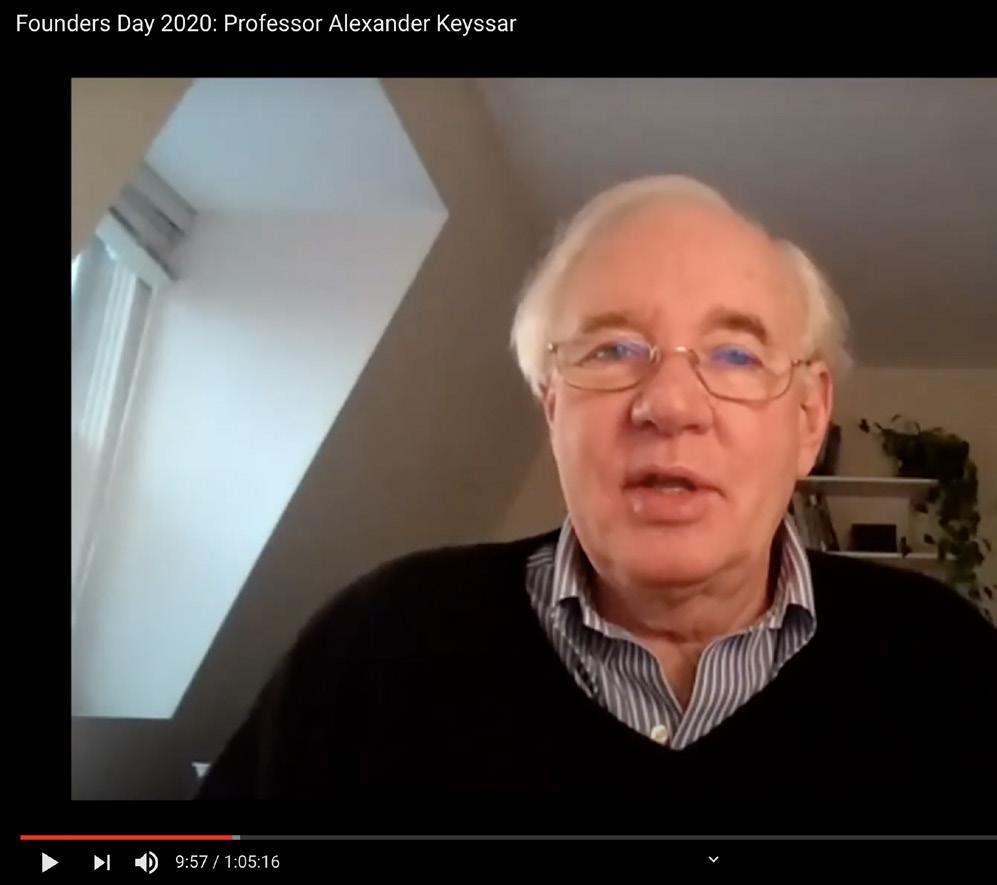


and elsewhere. Suffolk’s presidential primary polls have predicted outcomes in many key battleground states, and their survey results have been reported on by hundreds of major news organizations. Its bellwether model, authored by Mr. Paleologos, is used both locally and nationally and has an 85% accuracy rating in predicting winners. Mr. Paleologos talked with students about how polling is done, as well as what to look for in battleground states—and what towns and counties, in particular, to keep an eye on as bellwether voting areas, as we anticipated results on Election Night.
Later in the afternoon, students and faculty enjoyed a panel discussion on what it takes to run for public office, and how to run a successful campaign. Panelists included Former Massachusetts State Representative Marie St. Fleur; former Massachusetts State Treasurer and former national chairman of the Democratic National Committee and RL grandfather Steve Grossman; and RL alumnus Dennis Kanin ’64, who served as campaign manager for the presidential campaign of former U.S. Senator Paul Tsongas and served as Tsongas’s Chief of Staff in the U.S. Senate and U.S. House of Representatives. After the panelist presentation—and after our guests answered lots of good questions from the boys—Mr. Kanin treated all to a preview of “What to Look for on Election Night.” His presentation focused on key battleground states; the various pathways to the presidency—to securing the required 270 electoral votes—for both Trump and Biden; and the potential scenarios if the election remained contested for many days or weeks.
Rounding out the day was a session—and various online media—related to the 100th anniversary of the ratification of the 19th Amendment and the Women’s Suffrage movement, led by Erin Berg, as well as a report on the results of RL’s own mock election by Nate Piper. Students competed in Kahoots! quizzes throughout the day in homerooms, testing their knowledge on past presidents and national elections through questions crafted by Mr. Brennan. In the closing moments of the day’s program, the top winners in each class competed for the Kahoots! championship, which was secured by Frankie Gutierrez (II). //

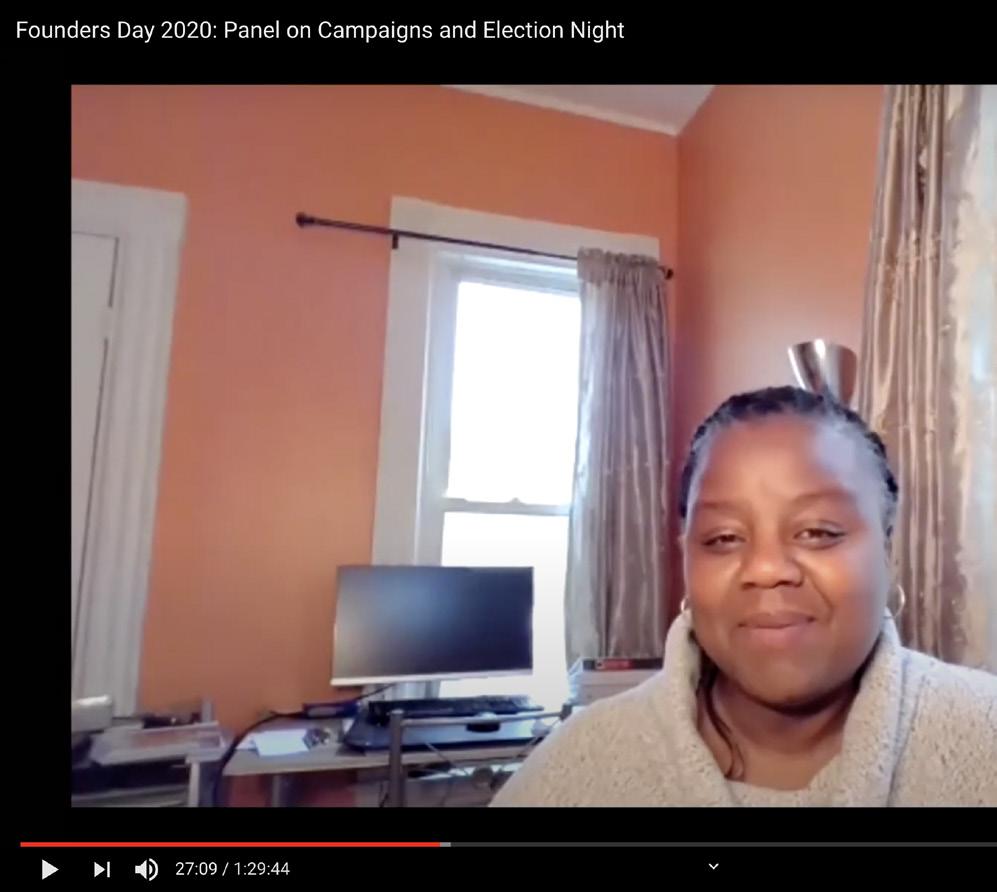

Founder’s Day 2020: Dave Paleologos
Founder’s Day 2020: Marie St. Fleur







Founder’s Day 2020: Dennis Kanin ̛64
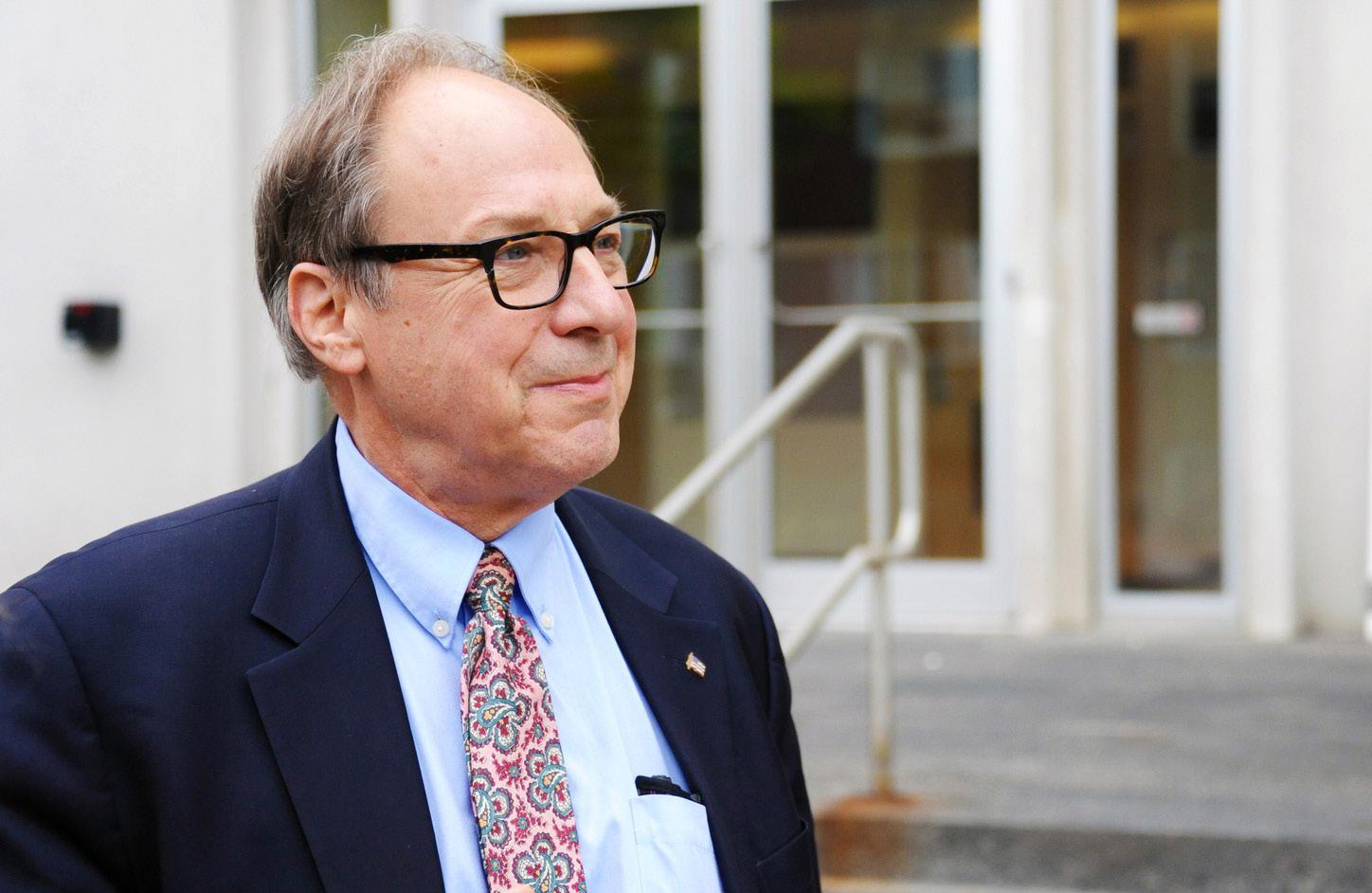
©2018 Harvard University by Derek G. Xiao
A Science Is Born
The “yeasty” times when computer research grew at Harvard by HARRY R. LEWIS ’65
We have—collectively, globally—perhaps never been more dependent on computers and the internet as we have been this past year. We are honored to include in this issue of the Newsletter an article by Harry Lewis '65, Gordon McKay Professor of Computer Science at Harvard, which chronicles his experience of, and role in, the early days of this novel and emergent technology. This article originally appeared in the September-October 2020 issue of Harvard Magazine (123:1; 42-47, 65f).
Thirty veterans of Harvard’s Aiken Computation Lab reunited on January 19, 2020, some 50 years after each of us had a role in creating today’s networked, information-rich, artificially intelligent world. Rip van Winkles who had never fallen asleep, we gathered to make sense of what had evolved from our experience as undergraduates and Ph.D. candidates during the decade from 1966 to 1975. One thing was clear: we hadn’t understood how the work we were doing would change the world.
Harvard didn’t even call what we were doing computer science; our degrees are mostly in applied mathematics, mathematics, or physics. The University remained blind to the future of computing for a long time. I joined the faculty in 1974, right after completing my graduate work. Four years later, as a stilljunior faculty member, I tried to get my colleagues in DEAP (the Division of Engineering and Applied Physics, now SEAS, the School of Engineering and Applied Sciences) to create an undergraduate computer-science degree. A senior mechanical engineer of forbidding mien snorted surely not: Harvard had never offered a degree in automotive science, why would we create one in computer science? I waited until I had tenure before trying again (and succeeding) in 1982.
But there we were, in our teens and twenties in the Aiken lab, laying some of the foundation stones on which the field has been erected.
No information infrastructure has been more consequential than the internet—arguably the most important information technology since Gutenberg made movable type practical. And Harvard fingerprints are on the internet’s embryo. As with so many critical advances, the circumstances were somewhat accidental.
Notwithstanding the pioneering work of professor of applied mathematics Howard Aiken in the 1930s on the Mark I, his massive electromechanical calculator, by 1960 Harvard was not a place to study circuitry or computer design. The action in hardware had moved, first to Penn and then to bigger engineering schools and industrial organizations.
So when Ben Barker studied hardware design as a Harvard sophomore, his instructor was a part-time adjunct faculty member named Severo Ornstein. Ornstein was an engineer at the Cambridge firm of Bolt Beranek and Newman. BBN won a contract from ARPA (the Advanced Research Projects Agency of the Department of Defense) to design the first Interface Message Processor. The IMP (which Ted Kennedy once hilariously mischaracterized as an Interfaith Message Processor) was the electronic switching device that would glue heterogeneous host computers together to form the ARPAnet. Ornstein became the hardware engineering lead and brought his Harvard students Barker and Marty Thrope onto the team (see the photo on page 40).
The IMP project was interesting work, but no one thought they were changing the world. Ornstein remembers that when the Request for Proposals for designing the IMP and building the first part of the ARPAnet first arrived on the project manager’s desk, “He handed it to me and said, ‘Take this home and read it and let me know what you think.’ I did so, and next morning I put it back on his desk, saying, ‘Looks like a straightforward engineering job; we could certainly do it, but I can’t imagine why anyone would want such a thing.’” High up the chain of command there was a vision—in 1963, while he was head of ARPA’s Information Processing Techniques Office, former Harvard research fellow J.C.R. Licklider had grandly touted the idea of an “Intergalactic Computer Network.” But the most obvious actual utility of the first IMPs was to enable a printer attached to one computer to print a document from another.
While working for BBN during his Harvard graduate studies, Barker installed the first IMP at UCLA in September 1969. Thrope, employed full time at BBN after finishing his undergraduate degree, installed the second IMP a month later at SRI (originally the Stanford Research Institute, in Menlo Park). On October 6, Barker sent the first message to Thrope across the network, which at that point consisted of nothing but those two IMPs. From two nodes the internet has grown to tens of billions of computers.
Barker does not remember what his message said. The fact that it arrived was miracle enough.
“Those were yeasty times,” one of our group said. Big things grew quickly out of next to nothing and shape-shifted in reaction to their environment. John McQuillan wrote an important dissertation laying out the way the ARPAnet could, without any central control, figure out which parts of itself were broken and route data so neither sender nor recipient would notice the failures in between. Some at ARPA viewed the internet’s capacity to survive failures as a central feature, because that promised to harden the network against nuclear attack. Others looked at the network and had other ideas.
Bob Metcalfe started graduate school at Harvard in 1969 after earning undergraduate degrees in engineering and business at MIT. When Harvard got its ARPAnet node in 1971, Metcalfe wanted to manage it. Harvard rebuffed him: that was a job for a professional, not a grad student. So Metcalfe talked his way into managing MIT’s node instead, and thereafter was seen only rarely around Harvard. Then one day in 1972 shocked whispers raced through Aiken: Metcalfe had failed his Ph.D. defense. Nobody ever fails their Ph.D. defense; it’s a symbolic and celebratory occasion, with champagne chilling outside the examination room. But somehow Metcalfe had fallen so far out of touch with his faculty committee that they walked into that room with different expectations. Metcalfe had already accepted a job at Xerox’s Palo Alto Research Center (PARC), where he moved while changing dissertation
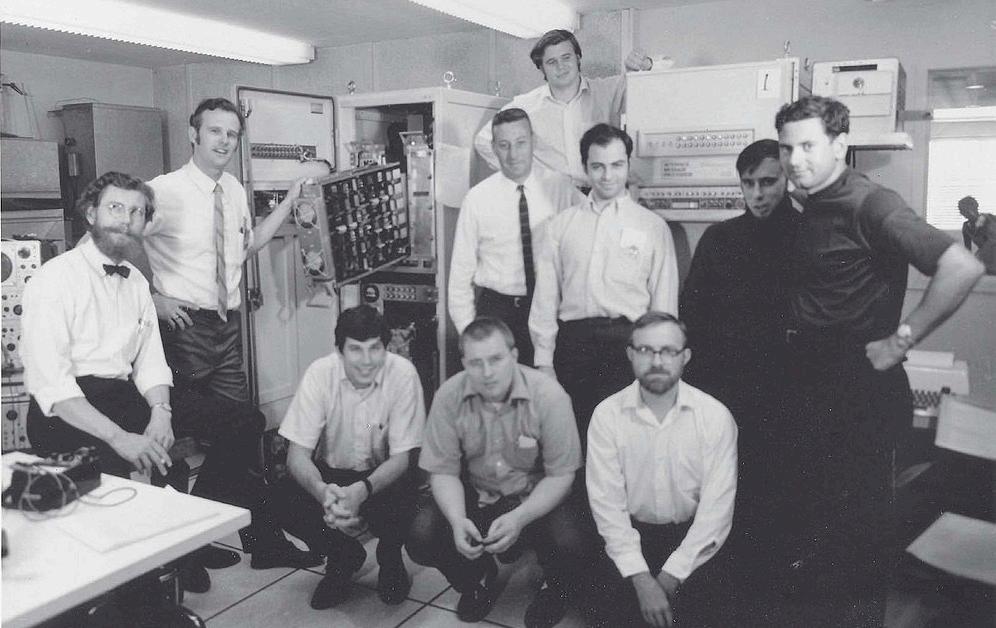
The Interface Message Processor team at BBN in 1969 (from left to right): Jim Geisman, Dave Walden, and Will Crowther crouch in the center; surrounding them are Truett Thach, Bill Bartel, Frank Heart, Ben Barker, Marty Thrope, Severo Ornstein, and Bob Kahn. (One key member of the team, Bernie Cossell, missed the photograph.) | Photograph coutesy of Frank Heart
advisers. Almost simultaneously with successfully defending his revised thesis, he and a co-author at PARC published the design of the Ethernet, the networking protocol that provided connectivity to computers scattered around a building at a fraction of the cost of the IMPs that connected large systems located hundreds of miles apart. Metcalfe left Xerox in 1979 and founded 3Com to commercialize Ethernet, which became ubiquitous. (Now a professor in both the engineering and business schools at the University of Texas, he is a writer, mentor, and visionary on technology.)
Our reunion group members are mostly third-generation computer scientists. Aiken was Harvard’s first generation; Claude Shannon was MIT’s. These men were already legends—we never saw them during our years at Harvard. (First-generation pioneer Grace Hopper did give a memorable talk at Harvard in the early 1970s, fuming because the cabin crew on her flight had mistaken her Navy admiral’s uniform for that of a retired stewardess.) The second generation of computer scientists included Anthony Oettinger, who was Aiken’s student, and Ivan Sutherland, who was Shannon’s. Sutherland spent three remarkable years on the Harvard faculty from 1965 to 1968 and, among other more important things, advised my undergraduate thesis.
The language of generations makes the succession sound too tidy. In the 1970s Oettinger shifted his interests toward matters of national security. Except for Sutherland, the only tenured computer scientist during our years was Tom Cheatham, who had no doctorate. He learned about computing in the army, having made the most of his assignment to keep the books at an officers’ club. Our small group inherited some intellectual traditions but also a sense that there wasn’t that much to know about the field, so anyone could contribute to it. Some walked in the footsteps of their advisers, while others came into computing from left field and brought some of that sod with them.
Cheatham had the most students, in part because he had the most money to support them, but also because his tastes were catholic and his turf was unfenced. He advised 36 Ph.D. theses, including that of Ben Wegbreit, who joined Cheatham on the faculty. Cheatham’s group worked on programming languages and the systems that made them usable. It was a hot research area because software development projects were becoming enormously expensive and might nonetheless fail spectacularly. In that environment there were established rows to hoe, if you were the row-hoeing type, but almost anything that might help could be a good thesis topic.
Cheatham set the tone for the Harvard style: bring in good people and give them a lot of responsibility and a lot of freedom—a method that one of our group reported using successfully later as a hiring strategy. Cheatham’s students had a profound influence on language design. In 1977-78, when the Department of Defense launched a competition for the design of the DoD standard language Ada, three of the four competing designs were headed by Harvard students of our era: Ben Brosgol, Jay Spitzen, and John Goodenough (who also was on the faculty for a time).
Cheatham’s students built tools: new languages, compilers, verifiers, anything to improve the ease and quality of programming. That orientation, combined with the very primitive computing facilities available to us, oriented the non-theorists among us toward tool-building and proofs-ofconcept. None of us had the ambition to build payroll systems or avionics software; we just wanted to make software that would help other people make systems like that. And nobody launched a company straight out of school—“start-up” was something you did to your car. So most of our group who did not go into academia went to companies that made software tools. It took several years before some realized that they could make a good living by building products for people who were not themselves computer geeks. Rob Shostak, having established a strong theoretical reputation during his years at SRI, launched the Paradox database system in 1985—for a while a personal computer database system very widely used in offices, including Harvard’s.
Bill Bossert, Arnold professor of science emeritus, is not a computer scientist and supervised none of our Ph.D. theses. He is a mathematical biologist who uses computers. But in the words of Pat Selinger, who took his course as a junior at Radcliffe, he was “heart and soul committed to inspiring people to use and appreciate the capability of computers.”
In 1968 Bossert had the idea to teach a computer course for everyone as part of Harvard’s General Education program. It was called Nat Sci 110. The point of the course was to teach students what computers could do, not to make them skilled or employable programmers. He hired one of our group, Mark Tuttle, as head teaching fellow (TF)—not because Tuttle knew much about computer programming (he didn’t), but because he had been an undergrad at Dartmouth, which was already evangelizing computing for everyone. In its first year Nat Sci 110 drew 350 students—more than twice what had been anticipated, and too many for the lecture hall. Bossert responded not by capping enrollment, but by repeating the lecture each class day, giving it once at the scheduled hour of 11 A.M. and then again at the overflow hour of 1 P.M. Some students wanted to come to both lectures—which Bossert said was OK as long as they laughed at his jokes both times.
Tuttle recalls being invited, as TF in this phenomenal new course, to tea at President Pusey’s house. “I’m introduced to the president,” Tuttle recalls, “who started peppering me with questions—`Why do we need computers? Why are they so expensive? Why is the faculty complaining?’ and so on. He listened intently but got quite emotional and ignored the others in the receiving line. I answered as best I could, but I am not sure how much got through. Later I learned that Oettinger and others were putting pressure on him.”
The course was a success, even though it was taught in FORTRAN, a poor instructional language, and used rented time on a commercial timesharing system. The following year Tim Standish joined the faculty, and Bossert leapt at the opportunity to use the highly flexible language Standish had designed, called PPL, for Nat Sci 110. Getting the language up and running over the summer fell largely to undergraduate Ed Taft, who went on to a long career at Adobe Systems.
Nat Sci 110 changed lives, Selinger’s for one. Bored in her introductory logic course by the eminent but mumbling Pierce professor of philosophy Willard V.O. Quine, Selinger
looked for a course that met in closer proximity to her 10 A.M. physics lecture so she would not always be arriving late, relegated to the back row. Thus she stumbled into Bossert’s passion for making computing interesting and fun. A few years later she finished her Ph.D. on programming languages and systems under the direction of Chuck Prenner, a student of Cheatham’s who had moved on from being his TF to assistant professor. Then Bill Joyner, another member of our group who had gone to work at IBM Research, aggressively recruited her. At IBM Selinger made fundamental contributions to database query optimization—the technology that makes it possible to find needles in haystacks without going through every stalk. In 1994 she was awarded IBM’s highest scientific honor, IBM Fellow. All because Nat Sci 110 was taught in a lecture hall near the physics building. Geography is destiny.
A few years later Prenner took the course over, and then I inherited it from him. I gave a shopping-season lecture in a Santa suit and drew 500 students my second year on the faculty. But in the late 1970s the Gen Ed program was disbanded and Nat Sci 110 with it; computing wasn’t a “Core Curriculum” subject. Instead, Harvard instituted a joyless and trivializing programming requirement. Students hated “the computer test,” which had the opposite effect from what Nat Sci 110 had done—and Lady Lovelace had also done more than a century earlier: show people that computers could be useful for lots of things.
Yet ghosts of Nat Sci 110 live on. Eric Roberts was a Nat Sci 110 TF under Bossert, Prenner, and me while he was an undergrad and grad student. He took his amazing pedagogical skills to Wellesley and then to Stanford, where he shaped the undergraduate computer-science program. Mark Tuttle took his experience to Berkeley, where starting in 1973 he taught a course on “The Art and Science of Computing” to audiences of hundreds. Now Bossert’s pedagogical grandchildren are teaching the fun of computing everywhere. Even at Harvard: Henry Leitner, who was my Nat Sci 110 TF when he was in graduate school, delights students every year with his Computer Science 1, and the dramatic flourishes in David Malan’s hugely popular Computer Science 50 can also be traced back to Nat Sci 110. When some have suggested calling our field “computer sciences,” I have protested that the totality of what is known amounts to at most one science. In the 1960s the field was too small to have well-defined subdisciplines, though speciation was starting to occur. For example, computational linguistics, which has brought us Alexa and Siri, was evolving from three roots. Linguists were trying to use mathematical methods to make sense of human language. Designers of programming languages needed an engineering toolkit with which to build interpreters and compilers, so that the higher-level codes programmers wrote could be executed on real machines. And logicians had for decades studied the limits of computability, and what sorts of decisions could and could not be made by automata. The specific research problem of automated translation of Russian texts financed Cold War attempts to integrate these directions and develop new ones (though the fear of Soviet scientific supremacy ended before much success had been achieved in language translation).
These roots were all sprouting at Harvard. Oettinger worked on Russian translation. His student Susumo Kuno wrote his dissertation on automatic syntax analysis of English and became a professor in Harvard’s linguistics department. Kuno’s student Bill Woods wrote his dissertation on semantics and question-answering, and then developed his work at BBN into a system that was used during the Apollo space program to answer questions about moon rocks. In the meantime, Sheila Greibach, a Radcliffe summa, wrote her Ph.D. dissertation under Oettinger on automata and formal language theory. It was not only an important contribution to the design of parsers and compilers for computer programming languages, but a founding document of theoretical computer science— one of the first success stories of the science of computing.
With both Woods and Greibach teaching at Harvard and with BBN nearby, computational linguistics and theoretical computer science began to emerge as identifiable disciplines. Bonnie Lynn Webber was Woods’s Ph.D. student and followed him to BBN, where she continued working on semantics of natural language while remaining part-time in the graduate program. Harvard finally pressured her to finish or drop out. She chose to finish and began an extraordinary academic career, first at Penn and then at Edinburgh. My recently retired colleague Barbara Grosz, Higgins research professor of natural
sciences, a leader in computational discourse analysis, has been a collaborator of Webber and of Webber’s eminent student Martha Pollack, who is now president of Cornell University.
Another of Woods’s students, Lyn Bates, arrived as a graduate student at Harvard knowing no one, and happened to find Woods’s door open while she was wandering the Aiken hallways. She finished her dissertation on syntax and then joined her adviser at BBN, initially sharing an office with Webber. Her research interests broadened over time; she was involved in early projects on speech understanding, use of natural language for database query, and an award-winning language synthesis project for use by the deaf. So the research that eventually gave us talking appliances was aborning under our noses 50 years ago, but the linguists in our group emphasize that the problem of language understanding and synthesis is not nearly solved yet. Woods himself spent most of his career in industry and says he is still trying to figure out how to get computers to think.
Henry Leitner was another Woods Ph.D. student; he is now acting dean of Harvard’s Division of Continuing Education at the same time as he teaches computer science. Bill Joyner was a Woods student, too. Now retired from his long career with IBM, he provided to the reunion group his complete graduate-adviser ancestral chart, 100 percent Harvard, back not just to Aiken but another five generations before him: Aiken’s adviser was Emory Chaffee1911; Chaffee’s was George W. Pierce, Ph.D. 1900; Pierce’s was John Trowbridge, S.D. 1873; Trowbridge’s was Joseph Lovering, A.M. 1836; and Lovering’s was Andrew Peabody, A.M. 1829.
Ivan Sutherland’s group was full of people doing things that had never been done before. For my undergraduate thesis I wrote a processor for ordinary algebraic notation: if the user wrote an equation using superscripts and division bars, the computer would interpret it as an instruction to transform one geometric figure into another. The PDP-1 computer was a disused hand-me-down from an Air Force lab, but it had unheard-of affordances: you could sit down at its console, flip its switches, and type on its keyboard and get it to type back, with no ritual passing of IBM card decks to data processing officiants as was customary with big machines of the day. A room-sized “minicomputer,” the PDP-1 had a tablet with a stylus for writing the equation, a display for showing the equation as interpreted, and two more screens for showing the shape before and after its transformation. The code that recognized handwritten characters was written by Ken Ledeen; we would today say that it did machine learning, extracting features and learning by reinforcement to classify its inputs. Ken was an English major, so instead of proclaiming that it was 92 percent sure that what you had written was a “G,” his program reported in mock-Shakespearean diction “Would that it were ‘G’”— and then invited you to correct it if your scrawl was meant to be a “C” instead.
The masterwork of Sutherland’s Harvard tenure was the first virtual-reality system. It consisted of a head-mounted display attached to a helmet that was in turn connected to the ceiling by telescoping tubes used to detect the position and orientation of the viewer’s head. The PDP-1 was programmed to display a 3-D object that seemed to hang motionless in the air while the viewer’s head moved around and through it. Wearing it was a magical experience, even though the computer was too slow to display anything more complicated than the 12 edges of a wireframe cube.
While still an undergraduate, Bob Sproull helped design a critical part of Sutherland’s head-mounted display system. He went to Stanford for graduate school, and when BBN shipped an IMP to the university in 1970, it arrived with a note from Ben Barker to Sproull scrawled on the shipping crate. In 1973 Sproull co-authored an early and highly influential computergraphics textbook; while at PARC he was part of the team that designed the first networked personal computer system. As part of a distinguished career in academia and industry, he was for 20 years in a leadership role at Sun Microsystems Laboratories.
Sutherland’s student Danny Cohen joined the faculty and kept Sutherland’s graphics program alive at Harvard for a few more years. Cohen’s great achievement was a flight simulator. Using switches and a joystick, you could try to land a schematic airplane on a schematic landing strip. It was a fun game that spawned hugely profitable businesses building realistic flight simulators. Commercial airlines and the military, it turned out, would pay a lot of money to have their pilots crash-land a simulator rather than an actual airplane. Cohen had been a paratrooper in the Israeli military and said he built the simulator so he could learn to fly. As it was, Barker insists that he was the first one ever to land a simulated airplane safely.
Like Barker’s first ARPAnet message, it was amazing any of this worked at all. Computers were slow, expensive, and unreliable. Cohen collaborated with Bob Metcalfe to split the flight simulator’s computing load between Harvard’s PDP-1 and a faster computer at MIT, using the nascent ARPAnet to exchange partially constructed images. Even the basic ARPAnet protocols were not yet in place, so Cohen and Metcalfe had no toolkit to work with: they were pushing bits through a network that was little more than bare metal. Cohen went on to use the same real-time engineering skills for internet voice communications. Internet telephony and video (including Zoom calls) all stemmed from Cohen’s primitive flight simulator running at Harvard and at Metcalfe’s MIT node.
All PDP-1 users remember the “yen board.” We each got a certain number of yen—grad students more than undergrads, and so on. The yen board showed the hours we could sign up to use the machine—a week’s worth of 24-hour days—and we could spread our allotted yen over a segment of time, on the understanding that someone else could outbid us by allocating more yen per hour, and none of us could have more yen outstanding than our quota. Among the high-yen crowd was the visionary J.C.R. Licklider, by 1968 a professor at MIT. In our ignorance we took him for a superannuated graduate student and helped him debug his code. Naturally, those of us at the bottom of the totem pole claimed blocks in the 2 A.M. to 5 A.M. range, when our yen went the furthest, and we emerged best friends with those who had the blocks before and after us.
And friends we were, all of us. We supported each other, not because anybody was against us, just because we all got along. We dressed up for dinner parties together, with Julia Child prepping the chefs from her TV screen. We climbed mountains in New Hampshire, not always wisely: Peter Downey, now professor emeritus of computer science at the University of Arizona, remembers realizing, rather too late, that he might better have worn orange during hunting season and could have turned back sooner in the face of an incipient Mount Washington blizzard.
Joyner had never lived outside Virginia until he came to Harvard, and had trouble making himself understood. It was worse for his wife, Mary Brenda, a fellow Virginian whose job entailed reading numbers over the telephone—mostly to northerners. Joyner claims I discovered a bug in his dissertation, which he was able to fix at the eleventh hour, and also that Rob Shostak and I tried to teach the Greek alphabet to his two-year-old daughter. I know for sure Joyner taught me his mother’s whisky-sour recipe: a can of frozen lemonade, a canful of Rebel Yell bourbon, and ice, mixed in a blender to the consistency of melting snow. Drinking was a great
deal more casual then, before alcohol became a controlled substance on college campuses. Wine and cheese parties every Friday afternoon in the basement of Aiken brought together undergrads, graduate students, staff, and faculty.
The group of women in our cohort was large for the time. Judy Townley, from the University of Texas, worked in Cheatham’s programming-languages group and joined him for a time in a software consultancy. Emily Friedman from Atlanta, via Cornell, became a professor at UCLA before spending most of her career at Hughes Aircraft. Radcliffe grad Brenda Baker also wrote a theoretical dissertation, but took a position at Bell Labs expecting to work on speech synthesis. She soon found “the freedom to do curiosity-driven research” and became a jack-of-all-trades in the design of algorithms for mathematical problems. During a career spanning several decades, she has published on program analysis, computer-aided design, and robotics, among other subjects. Nancy Neigus joined Ornstein, Barker, and Thrope at BBN. Miriam Lucian, from Romania, was one of only two international members of our group; she went on to a long career as an engineer at Boeing, but her Harvard dissertation research in mathematical logic earned her an adjunct philosophy professorship at the University of Washington. The other immigrant in our group, Peter Chen from Taiwan, was inspired to attend Harvard by the example of industry pioneer An Wang, inventor of magnetic core memory and founder of computer company Wang Laboratories.
For a time, the women in our group had a faculty mentor and role model in Greibach, who taught many of us. The women generally remember having been treated as equals—by us, though not always by others at Harvard, and certainly not after they left Harvard and moved into academia and industry. Independently, three different individuals in our group reported having been told by a Radcliffe dean that “girls” weren’t good at science or shouldn’t be majoring in math. It was typical of the time—as was Greibach’s departure in 1969 for a permanent position at UCLA when Harvard didn’t offer her tenure. Greibach’s student Ron Book took over theory teaching from her until he too left for California, having advised six Ph.D.s as a junior faculty member, including four women: Baker, Friedman, Lucian, and Celia Wrathall (who married him). We were privileged to work with one more underappreciated giant in those days. Ugo Gagliardi never held a ladder appointment on the Harvard faculty. He had his own consulting firm and, like Woods, taught in an adjunct role as professor of the practice of computer science. Educated in Italy at a university older than Harvard and experienced with the early computer company Olivetti, Gagliardi brought a wealth of practical wisdom to the courses he taught on operating systems and related software. His student Jeff Buzen was a founding figure in the statistical modeling and analysis of computer systems; only after Buzen’s work did it become possible to estimate accurately where to spend money to expand an overloaded computer system. Buzen too joined the faculty and several of us learned computer-system design from him and Gagliardi—and from Metcalfe, when he was Gagliardi’s TF and Buzen’s reassigned Ph.D. student. Buzen and two other Gagliardi students, Bob Goldberg and Harold Schwenk, eventually started their own very successful business, BGS Systems. Peter Chen, who studied under Gagliardi, Buzen, and industry veteran George Mealy, passed on the opportunity to join the BGS team and went on to receive broad acclaim as a database scholar for his EntityRelationship model.
And that is a good place to end the chronology of that period, because the computing world started to change dramatically soon after I joined the faculty. A smart sophomore named Bill Gates took a course from me in 1975. A building named for the mothers of Gates and his poker buddy Steve Ballmer would eventually replace Aiken, but at this point Gates was spending most of his time on Harvard’s PDP-10 writing code for a microcomputer he neither owned nor had ever seen. Some on the faculty discouraged him; the intellectual challenges, they said, were in disk scheduling, and here he was toying with code for a machine that didn’t even have a floppy. And so, for a second time the action in computer science moved away from Harvard, this time to the West Coast, where many of our group, students and faculty alike, had already emigrated. I stayed and started to bring order to the undergraduate curriculum, while a series of junior faculty came and went, including one who later won the Turing Award but Harvard judged not promising enough for tenure. A serious intellectual resurgence would not take root at Harvard until Barbara Grosz, Michael Rabin,

©2015 Harvard University by Madeline R. Lear
Watson professor of computer science emeritus, and Leslie Valiant, Coolidge professor of computer science and applied mathematics, arrived in the early 1980s.
So what made Aiken so generative in those days?
Part of the magic was that it was full of smart students, and the faculty “stood back and let you go,” as one of us said. But we also remember Tom Cheatham’s benevolent generosity. Tom was “an academic magnet” and “a river to his people”—in particular, he funded students’ travel. Those trips, and the regular visits to Harvard by Cheatham’s scientific collaborators, opened students’ ears to intellectual hatching noises coming from the world beyond Harvard. Tuttle remembers a specific incident that exposed a tension with which the field of artificial intelligence is still struggling. Data rules in AI today; systems get smart by generalizing from millions of examples. But for the first generation of researchers, whose computers were not large enough to store or process large data sets, AI was all about symbolic logic and automated reasoning. So when Tuttle was able to attend an AI conference in California, he witnessed “an open battle between the AI speakers—symbol manipulators all—and those in the audience from Silicon Valley who foresaw the role of statistics and probability.… [Marvin] Minsky and Seymour Papert tried to prevent their field from engaging in empirical—data-driven—approaches to problems. Obviously, their efforts were successful only in the short term.” What an educational experience! (What logic-based systems could do that remains a challenge for data-driven systems is to explain their decisions. It is morally untenable to have judgments about human lives—how long to incarcerate a criminal, for example—emerge from inexplicable numerical parameters magically distilled from mountains of training data.)
Colloquia with outside speakers were important for us. Big names—and names like Alan Kay that later became big— came by and talked to our little group of faculty and students. Bates and Selinger remember Hopper’s dramatic talk, with a fistful of wire segments representing nanoseconds, at a time when female speakers were rare. I remember Edsger Dijkstra, who like Kay would later win the Turing Award, advocating formal thinking with the commitment and the intolerance of a religious zealot. Mark Tuttle made sense of the principles presented at a colloquium by Jim Gray, who also would win the Turing Award, only decades later when a situation required him to make use of them.
Ironically, the growth and professionalization of our discipline and of the Harvard program have made such memorable encounters less frequent today. Theorists go to the weekly theory talk and an almost disjoint set of people go to the weekly talks on computation in society; assemblies of the whole are infrequent and unwieldy. Fifty years ago, smallness and immaturity fostered cross-fertilization and excitement.
Everybody seems to remember deeply meaningful acts of kindness by each other or by our faculty mentors. And everyone has such a story about Pauline Mitchell, the DEAP administrator who ran everything having to do with students. Mine is typical. In those pre-cell phone, pre-email days, Mitchell figured out that I was abroad, that I needed money, and that there was a postal strike in Italy. She called her brother (who worked in Harvard’s bursar’s office) and her sister (who worked at the bank in Harvard Square) to get Harvard to wire me the funds. No wonder Harvard felt like family. And that sense of security spawned freedom and creativity.
We talked a lot. Perhaps the southerners loosened the tongues of the northerners, but I remember endless banter and chatter, sometimes idle and sometimes about ideas. “Each of us was working on something very different,” Emily Friedman wrote, “but listening to the progress of the others pushed me on.” We did not hesitate to tell the others what we were doing or to acknowledge what we didn’t understand. We could open up because we were not in competition. Skepticism of intellectual property prevailed, perhaps an inheritance from Howard Aiken: as his student and Turing Award winner Fred Brooks put it, Aiken thought “the problem was not to keep people from stealing your ideas, but to make them steal them.” And most of us knew how to write; we were largely alumni of liberal arts colleges, and several had been humanities majors before falling into computing. Those term papers, gabfests, and teaching fellowships yielded success in countless technical pitches we gave over the years.
I am glad to have had tenure and I have defended it as essential to academic freedom. But our experience in Aiken provided little evidence that the institution was either useful or rationally awarded. Our cadre of part-time faculty with one foot in industry and the other at Harvard provided not only superb teaching but exactly the sort of continuity and institutional loyalty that tenure is supposed to promote. Woods, Gagliardi, Buzen, Mealy, Ornstein, McQuillan, Dave Walden from BBN, and others made major contributions, both scientific and educational. And some of our most memorable faculty mentors, not just Cheatham but my own Ph.D. adviser, Pierce professor of philosophy Burt Dreben, had gained permanent positions without a Ph.D. and seemed no less professorial for that deficit. The untenured “professor of the practice” title still exists, but none of today’s incumbents split their time with industry. Faculty hiring has become vastly more competitive, specialized, and systematic—and, to be sure, less inbred. Yet I am not confident that, all things considered, today’s students find their more objectively selected faculty “better” than we found our devoted irregulars.
The last word goes to the Harvard bean counter who was keeping the books on the PDP-10 in 1975 and noticed that a sophomore had used more connect hours in the month of February than there were in the month of February. Bill Gates had, it seemed, invited in some programming assistants. Concerned about how this could be explained to a federal auditor, the administrator summoned Gates for an interview and reported the outcome of his cross-examination in these deathless words: “He did not understand the ramifications of his activities.” Perhaps true of Gates and perhaps not; but the same could be said of most of us who were in Aiken during that momentous decade. And it was true of Harvard, too. //
Harry Lewis ’65 is Gordon McKay research professor of computer science at Harvard, and former President of RL’s Board of Trustees. His collection of classic computer-science papers, Ideas That Created the Future, will be published by MIT Press in 2021. Four former RL teachers (the first four listed below) are among those to whom the book is dedicated:

Naming of O’Keeffe Field
William Bernard O’Keeffe, Class of 1957, passed on May 26, 2019, but his name and legacy will live on at Roxbury Latin. The following statement was written by his classmates in the Yearbook Bill’s senior year: “Working on one committee or another, Bill is known for his hard work and cheerful attitude. We are sure that Bill’s sly smile and friendly ways will continue to win him friends at college and in the future.” These words foreshadowed his lifetime of service to Roxbury Latin. He worked as class agent for more than 60 years and chaired the Annual Fund. He was a longtime member of the Alumni Council and won the Wellington Prize, given each year to a member of the 25th Reunion Class in recognition of his outstanding and continuous service to Alma Mater. In 1984, Bill became a trustee and served in that capacity for three decades. Vice president and secretary of the Board for many years, Bill served on various committees, including Development, Campus Planning, Strategic Planning, Executive, and the most recent Headmaster’s Search Committee. In addition to his service, Bill was an ardent supporter of the school philanthropically. He was a generous contributor to the Annual Fund throughout his life and also spearheaded the effort of his class to establish an endowed scholarship fund in honor of their 50th Reunion. He and his wife, Paula, established their own endowed scholarship fund in honor of Tony Jarvis. Before Bill’s passing, he concluded his lifetime of giving by donating $1,000,000 to the school. In honor of his dedication of time, talent, and treasure to Roxbury Latin, the school has named the recently renovated football/ lacrosse field in honor of his family—now named O’Keeffe Field.
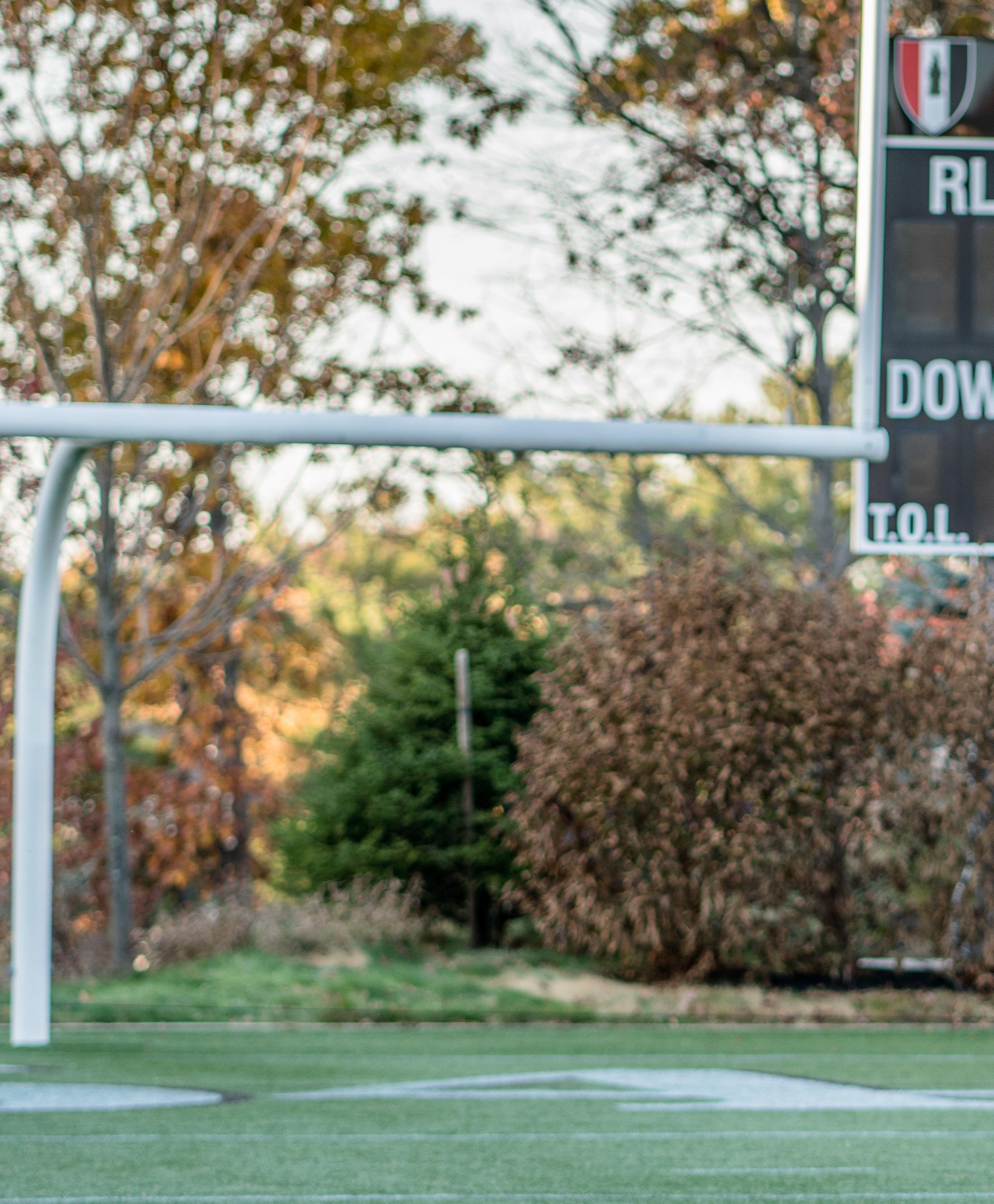
The O’Keeffe family’s commitment to and relationship with RL has deep roots as four generations, totaling ten members, have attended or are attending the school. The official dedication of O’Keeffe Field was slated to occur during Reunion Weekend in the spring of 2020, but COVID-19 delayed that ceremony. The O’Keeffe family visited campus this fall for a photo under the field’s newly installed scoreboard, and we look forward to honoring Bill and his family at a future date.//
Photo: Bill's sons Ian O’Keeffe ’86 (left) and Tim O’Keeffe ’89 pictured with their mother, and Bill's widow, Paula O’Keeffe.
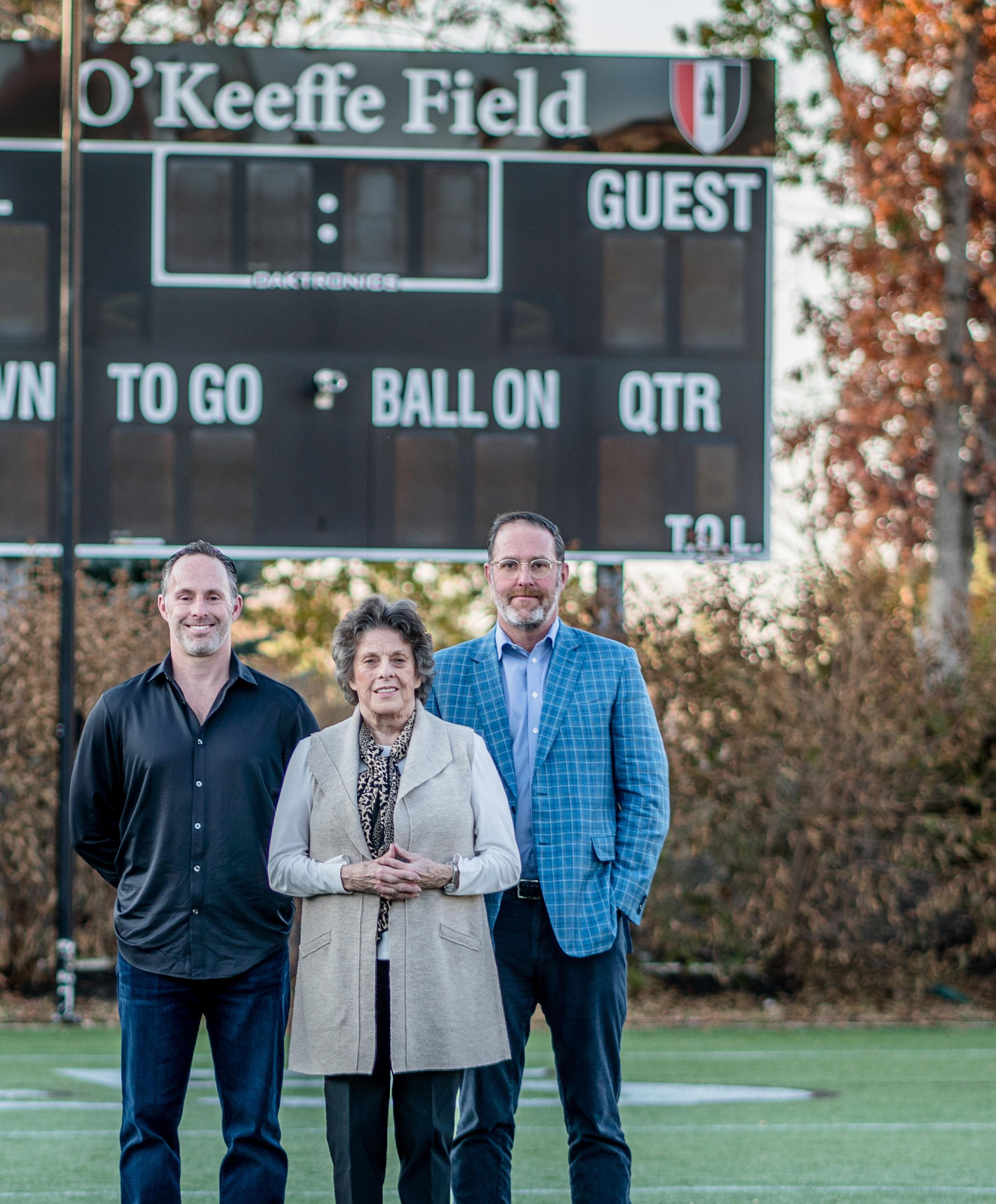
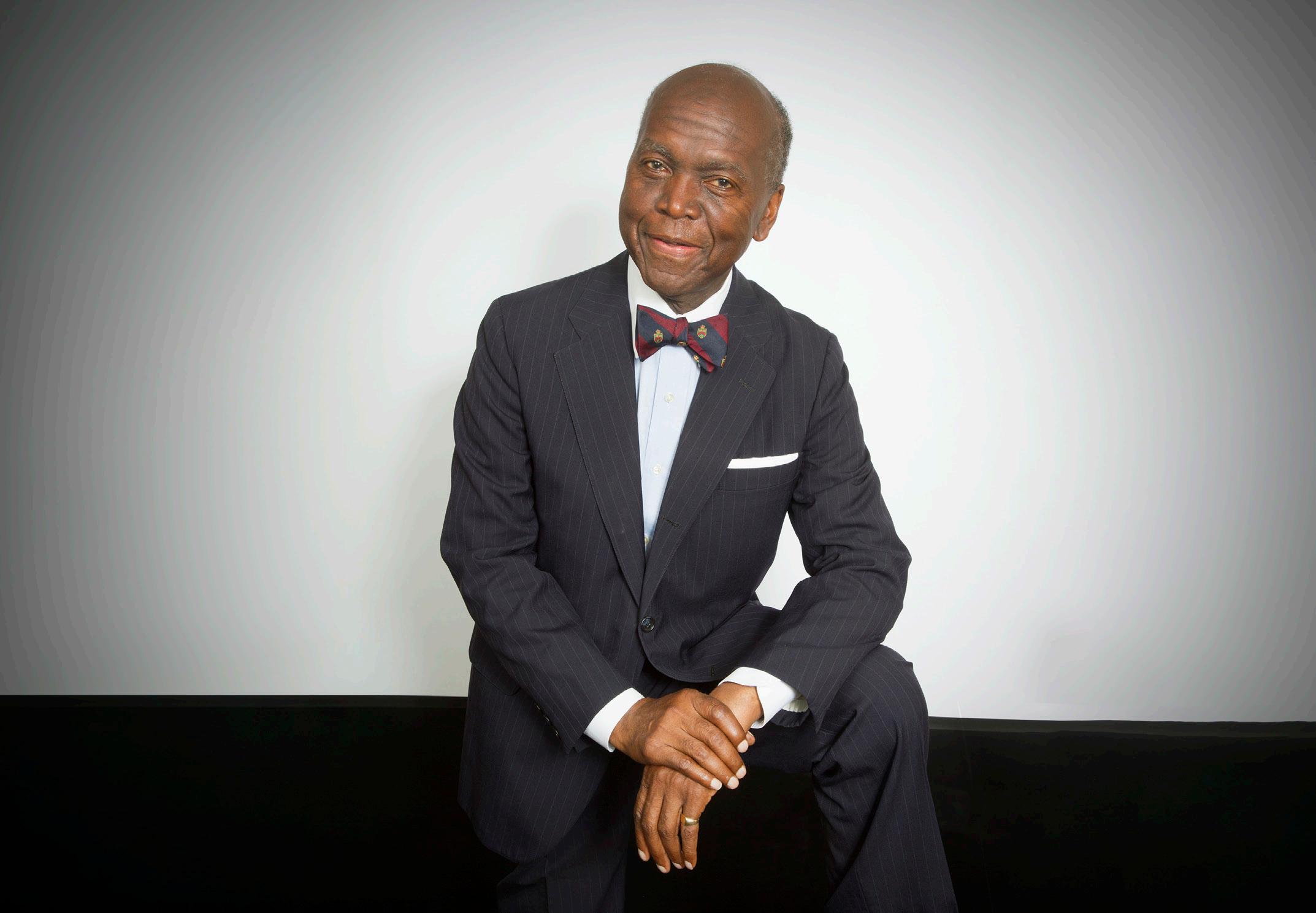
©2013 Harvard University
Former Trustee David Evans Retires after 50 Years in the Harvard Admission Office
The following article, “Changemaker in Admissions” by Matteo Wong, appeared in the September/October 2020 issue of Harvard Magazine. It is reprinted here with permission.
The fourth of seven children, David L. Evans grew up in Arkansas in one of the nation’s poorest counties. His grandmother was born into slavery, and his parents, who died before Evans graduated from high school, were sharecroppers with little formal education. “It’s strange how they believed that there were two sources of magic in the world: education and religion,” Evans recalls. He says he is not as religious as he “should have been,” but he did spend six decades in education, retiring this year after five in the College admissions office.
Evans joined the admissions staff in 1970, entering a very different—and for many, far less welcoming—university. It had not merged with Radcliffe, did not offer such generous financial aid, and had hired its first black admissions officer only two years earlier. (Evans was the second.) In the 100 years since the College graduated its first black alumnus— Richard T. Greener—in 1870, Evans estimates Harvard had admitted fewer than 300 black students. During his 50 years there, approximately 6,000 black students were admitted. The Harvard Alumni Association awarded him a 2020 Harvard Medal in part to recognize his role in that change.
After earning his bachelor’s from Tennessee State University and a master’s in electrical engineering from Princeton in 1966, Evans lived in Huntsville, Alabama, working for IBM on the Saturn-Apollo project to send U.S. astronauts to the moon. There, he started a college-placement program for black teenagers and helped several enter elite schools, drawing
attention from college administrators. In 1970, Harvard offered him a two-year contract as an assistant director of admissions. He became a senior admissions officer in 1975.
During sometimes 16-hour workdays, Evans recruited and selected Harvard applicants of all backgrounds and sought to make the campus more supportive. He became a freshman proctor, living in Wigglesworth Hall alongside students and serving as their academic adviser; from 1973 to 1977 he was also an assistant dean of freshmen. His efforts have earned praise from both Harvard—an administrative prize from the Faculty of Arts and Sciences, the W.E.B. Du Bois Medal from the Hutchins Center for African & African American Research, in addition to the Harvard Medal—and former students: black alumni endowed a scholarship fund in his name in 2003, exceeding a fundraising goal of $250,000 by more than fourfold.
Evans came to Harvard at a racially fraught time—not long after the assassination of Martin Luther King Jr. and amid disproportionately high death rates for black soldiers in Vietnam. In the 1970s, the campus saw “ugly confrontations” between black and white students— partly, Evans says, because Harvard lacked a structure for grievances and dialogue. In 1981, the University created the Harvard Foundation for Intercultural and Race Relations, where Evans served as an adviser.
He sees similarities between then and now, as the nation faces disproportionately more black deaths from COVID-19 and police killings. But recent protests have given him “great hope.” He leaves Harvard a more welcoming and diverse campus, he says, because faculty, administrators, and students “pushed to make it happen.” Such change, he hopes, can happen again. As for himself, Evans hopes retirement will give him more time “to contemplate and convey” the meaning of his journey from a family of black sharecroppers to a Harvard Medal. //
David Evans served on The Roxbury Latin School Board of Trustees from 2011 to 2014. For 30 years he served as the Harvard Admissions Office Representative for RL.


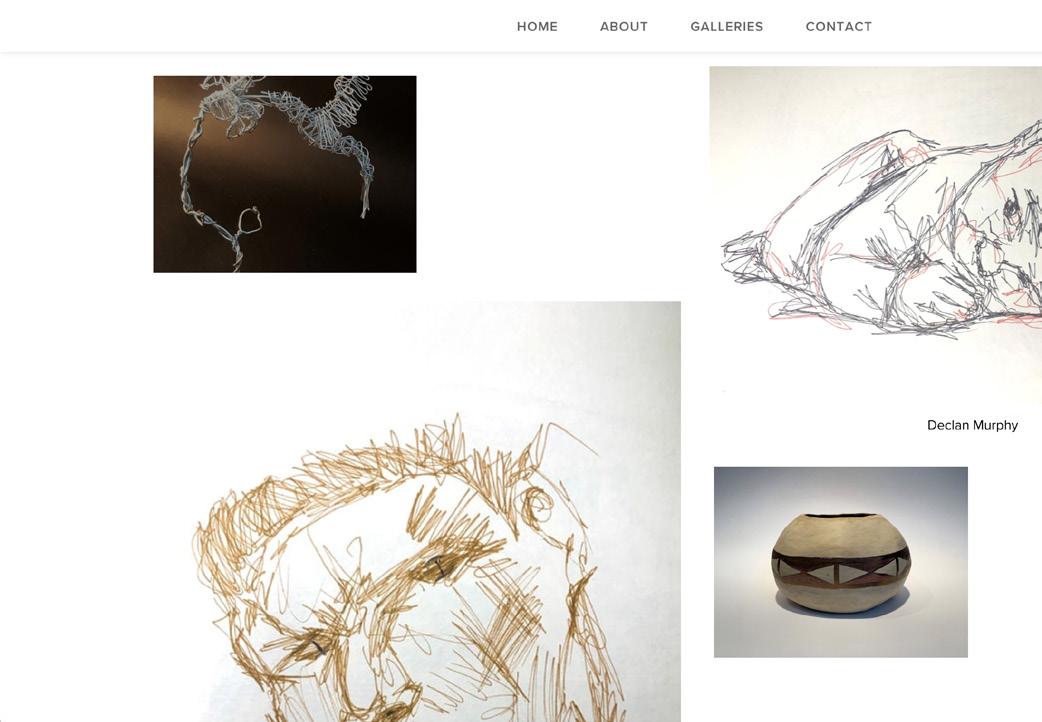
RL Launches ART@RL, an Online Gallery
While the pandemic prevents guests from coming to campus, it also prevents the student artwork that reliably lines the halls from benefitting a broader audience. Arts Department Chair Brian Buckley and Headmaster Kerry Brennan were intent that the school still share students’ impressive work, despite the logistical constraints. With the helpful cooperation of art faculty members, students from all classes, and other colleagues, Roxbury Latin launched this fall its online art gallery, ART@RL, found at RLArts.org. We hope that virtual visitors will enjoy the various galleries, which include works—paintings, drawings, sculptures—created by students from Class I through Class VI, as well as faculty and alumni artists. //

